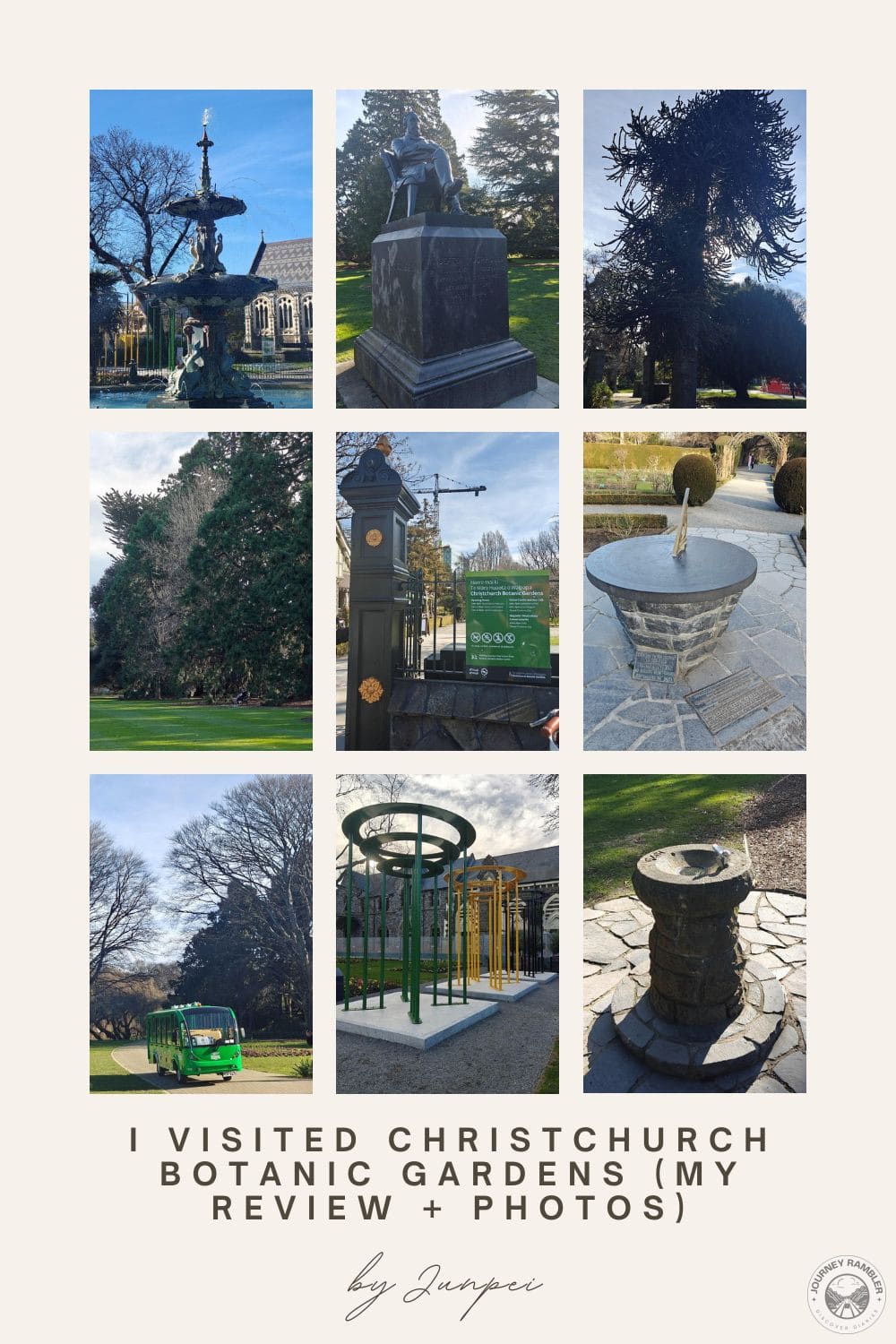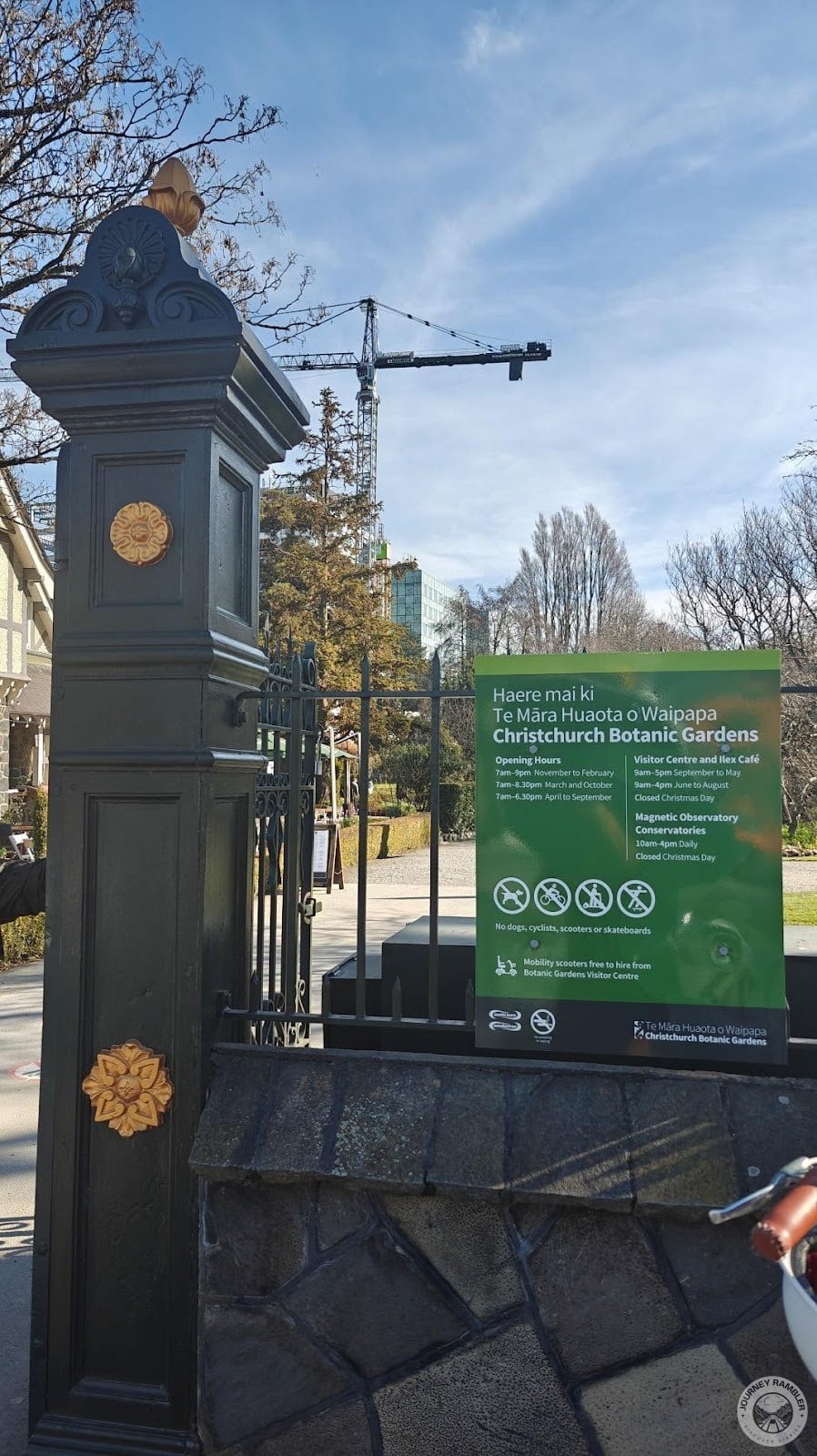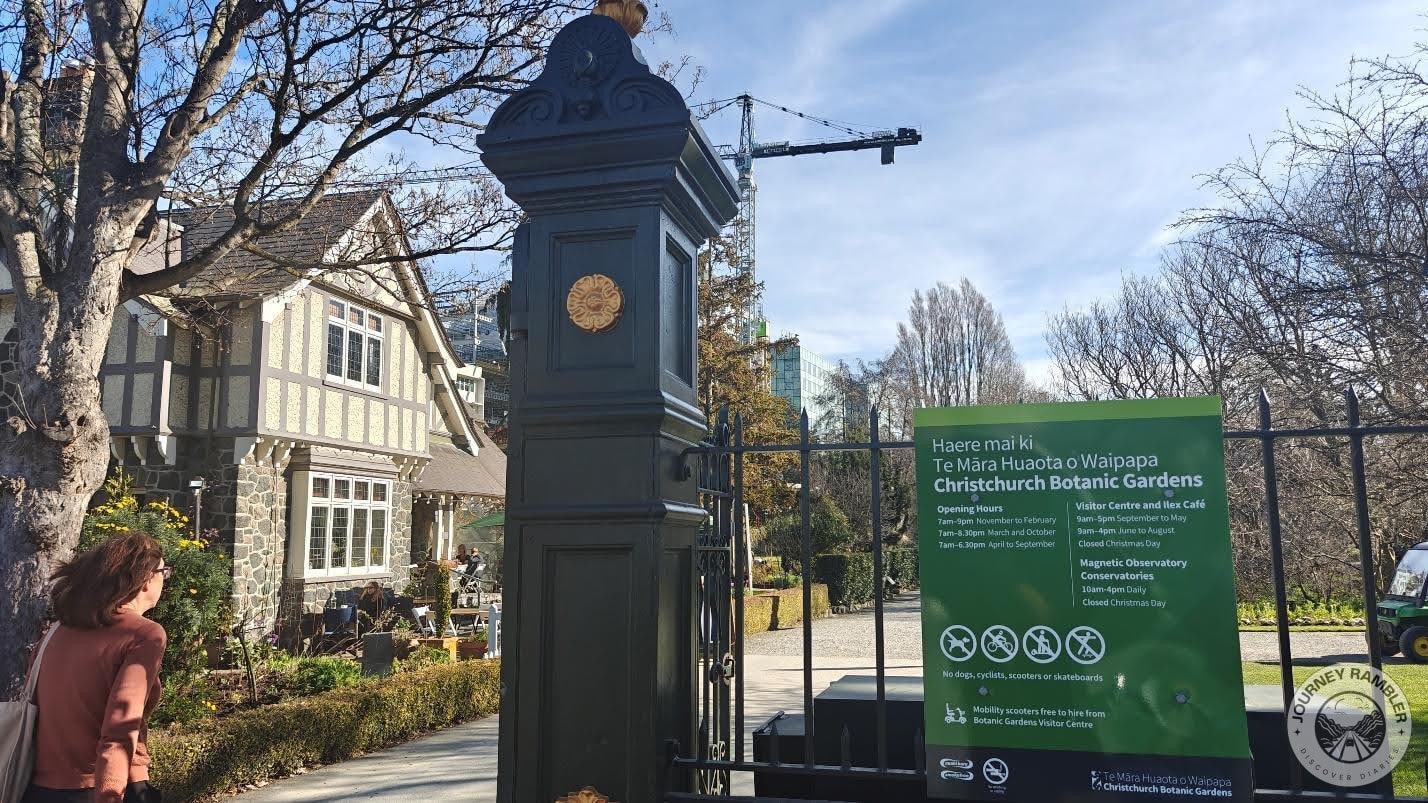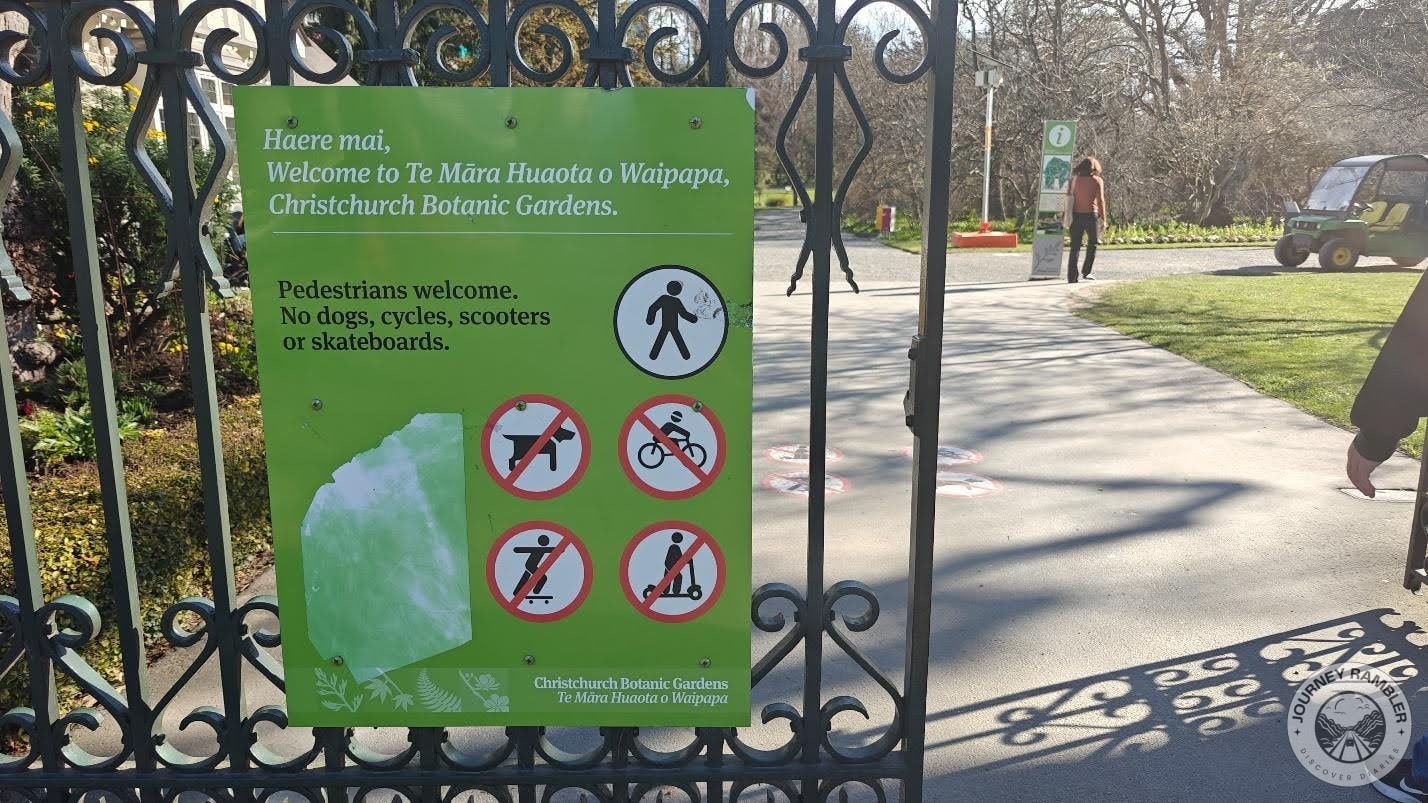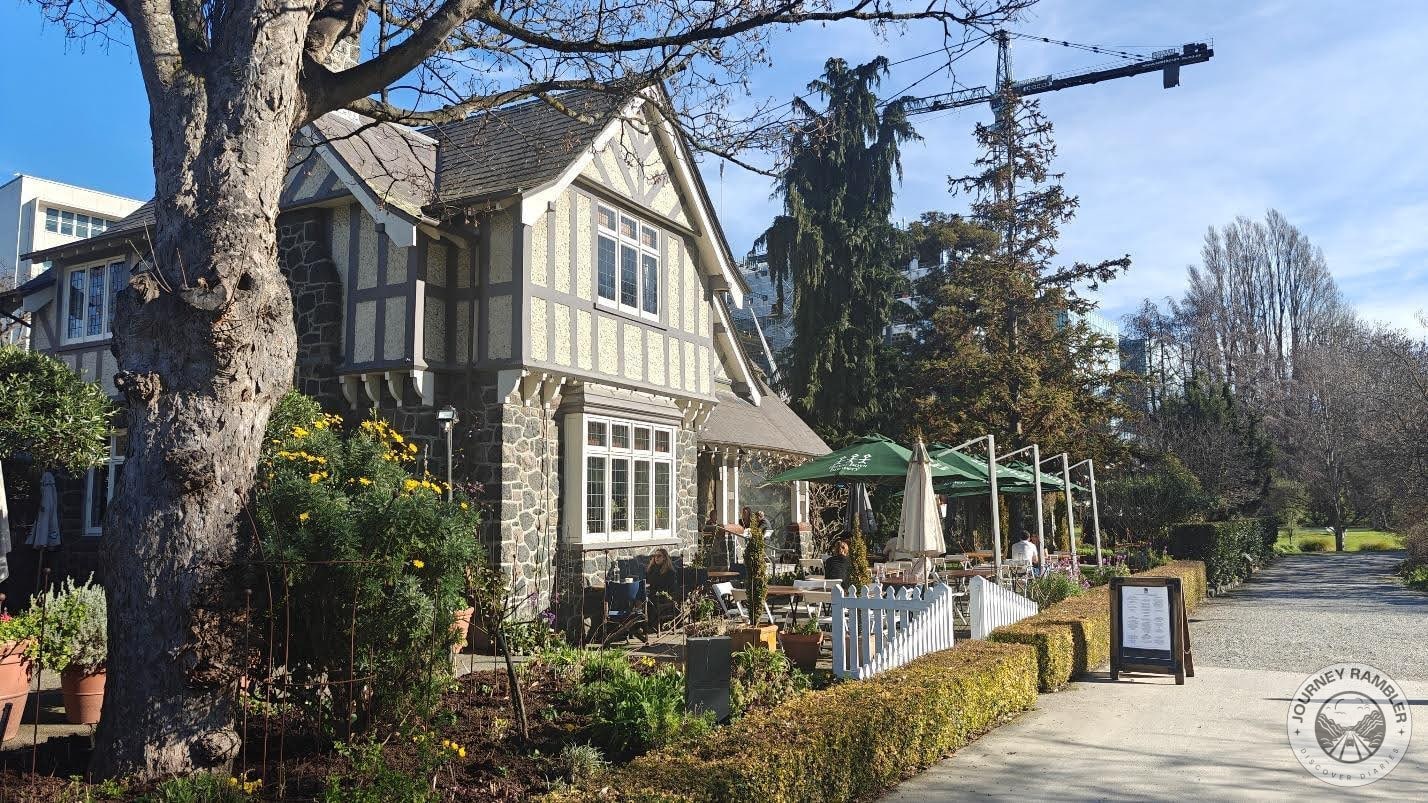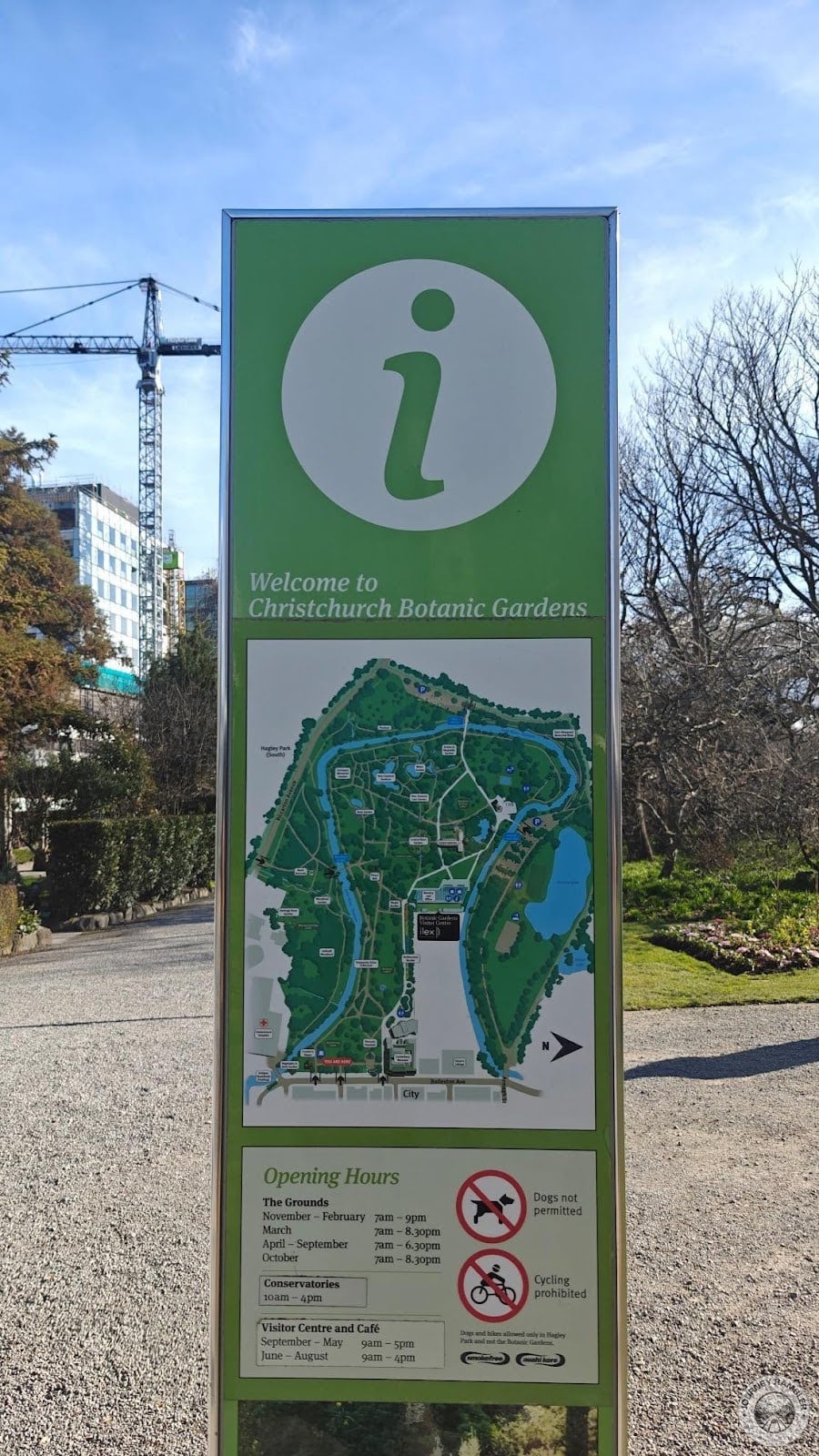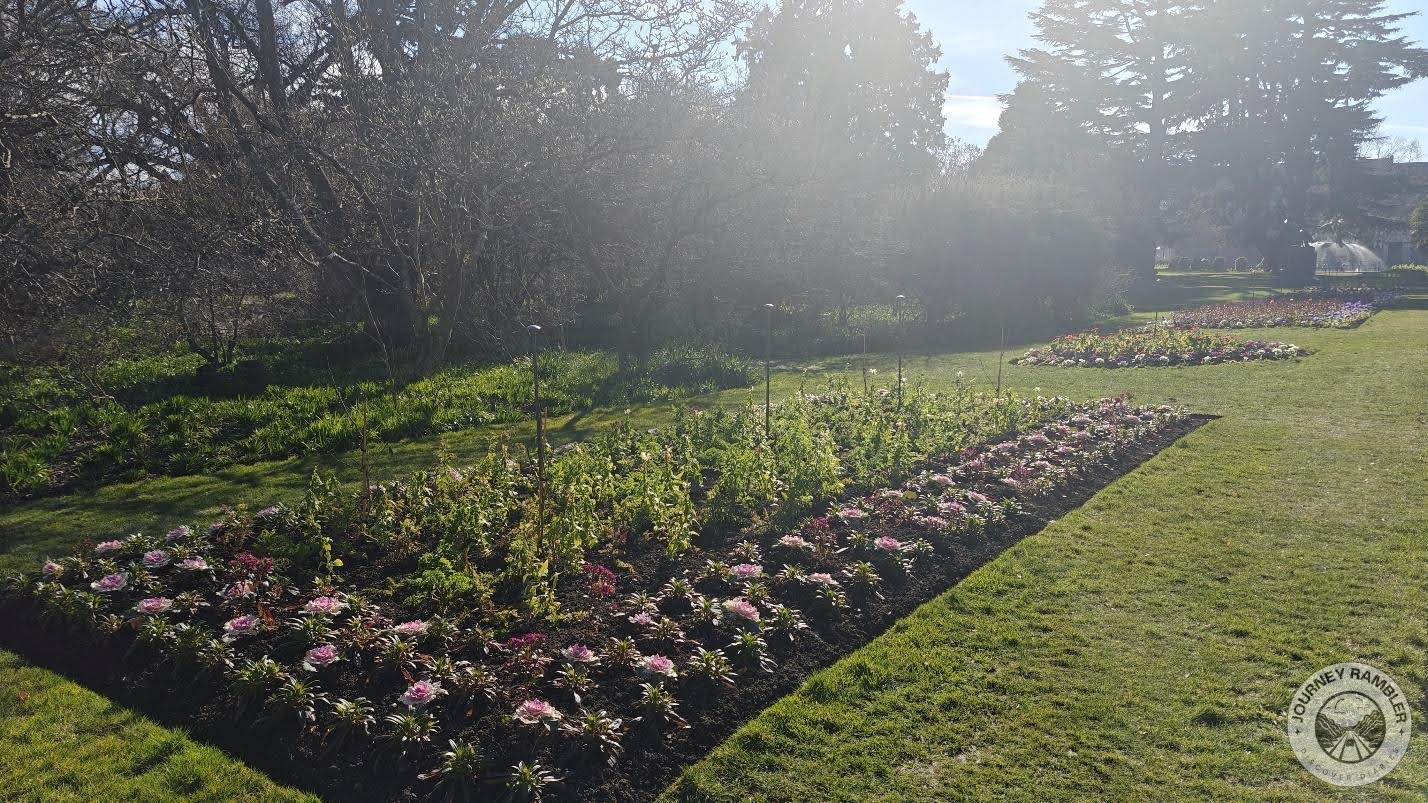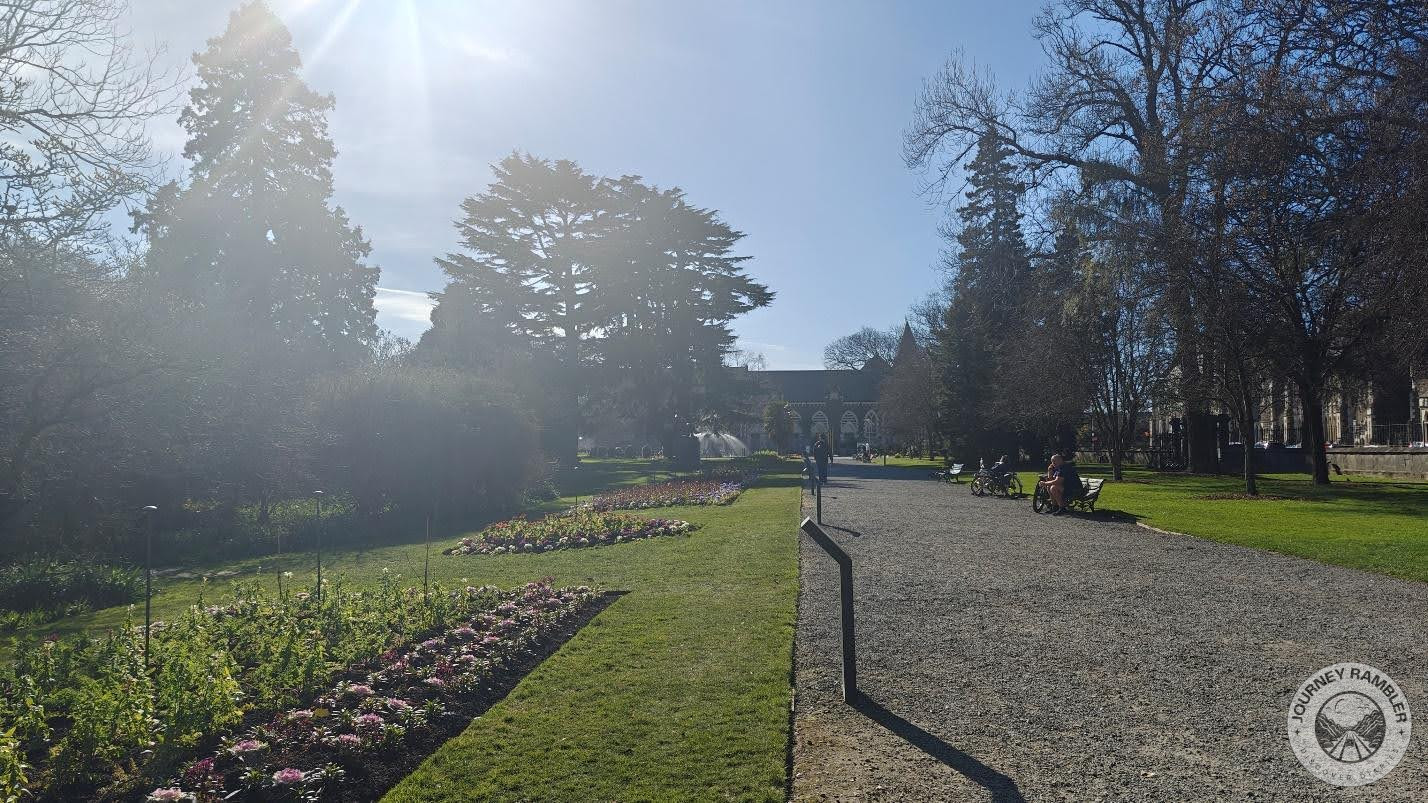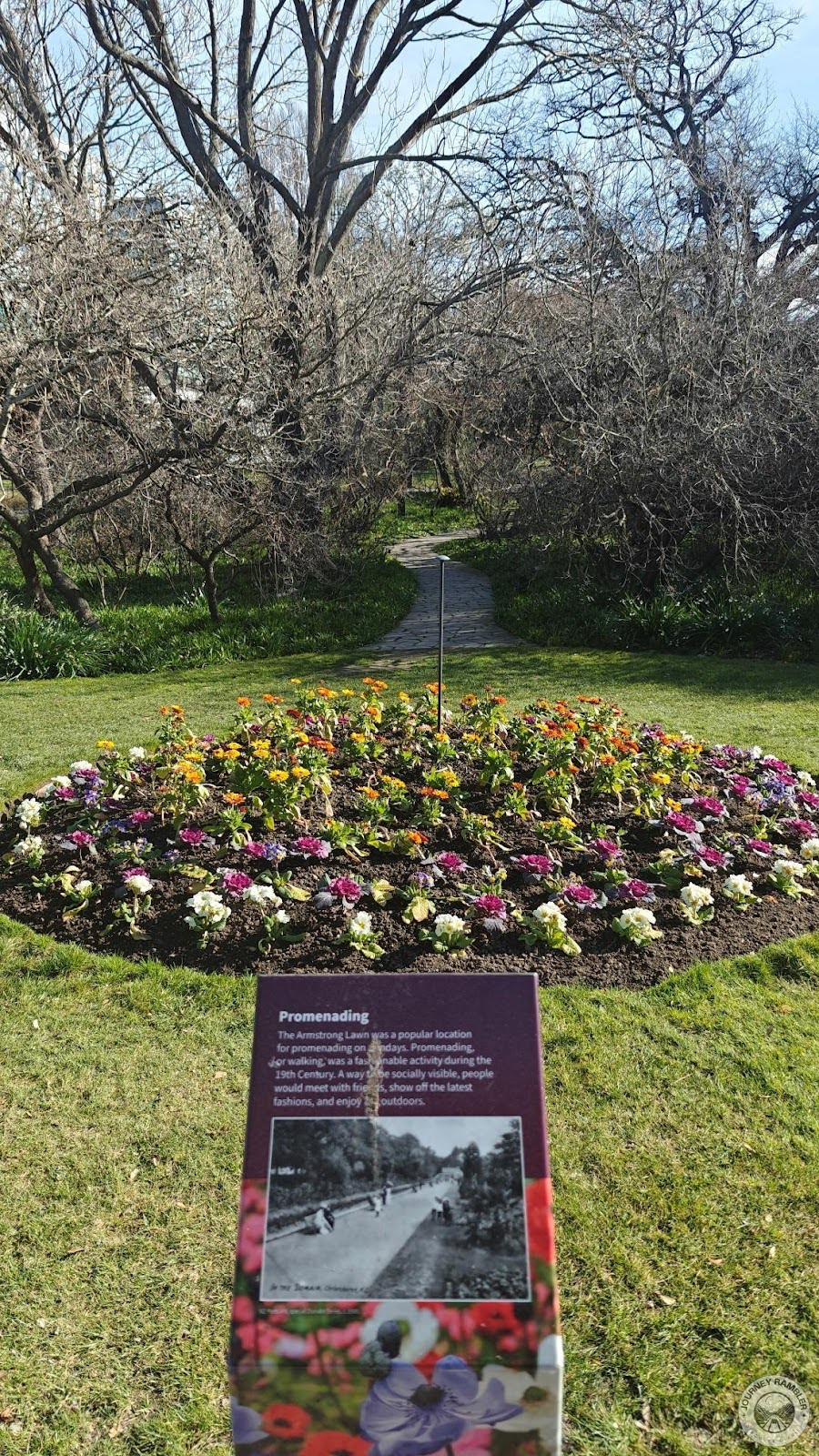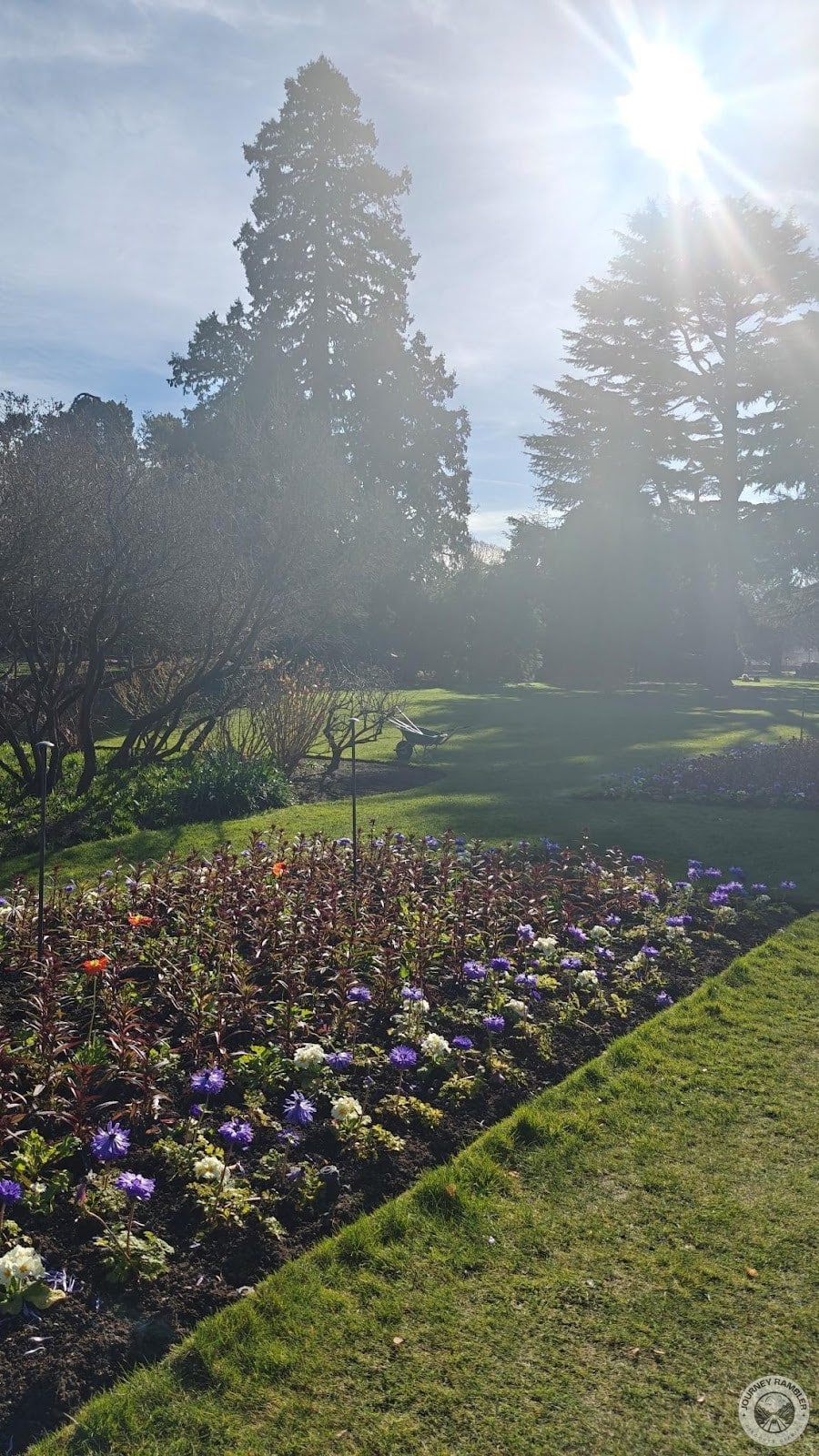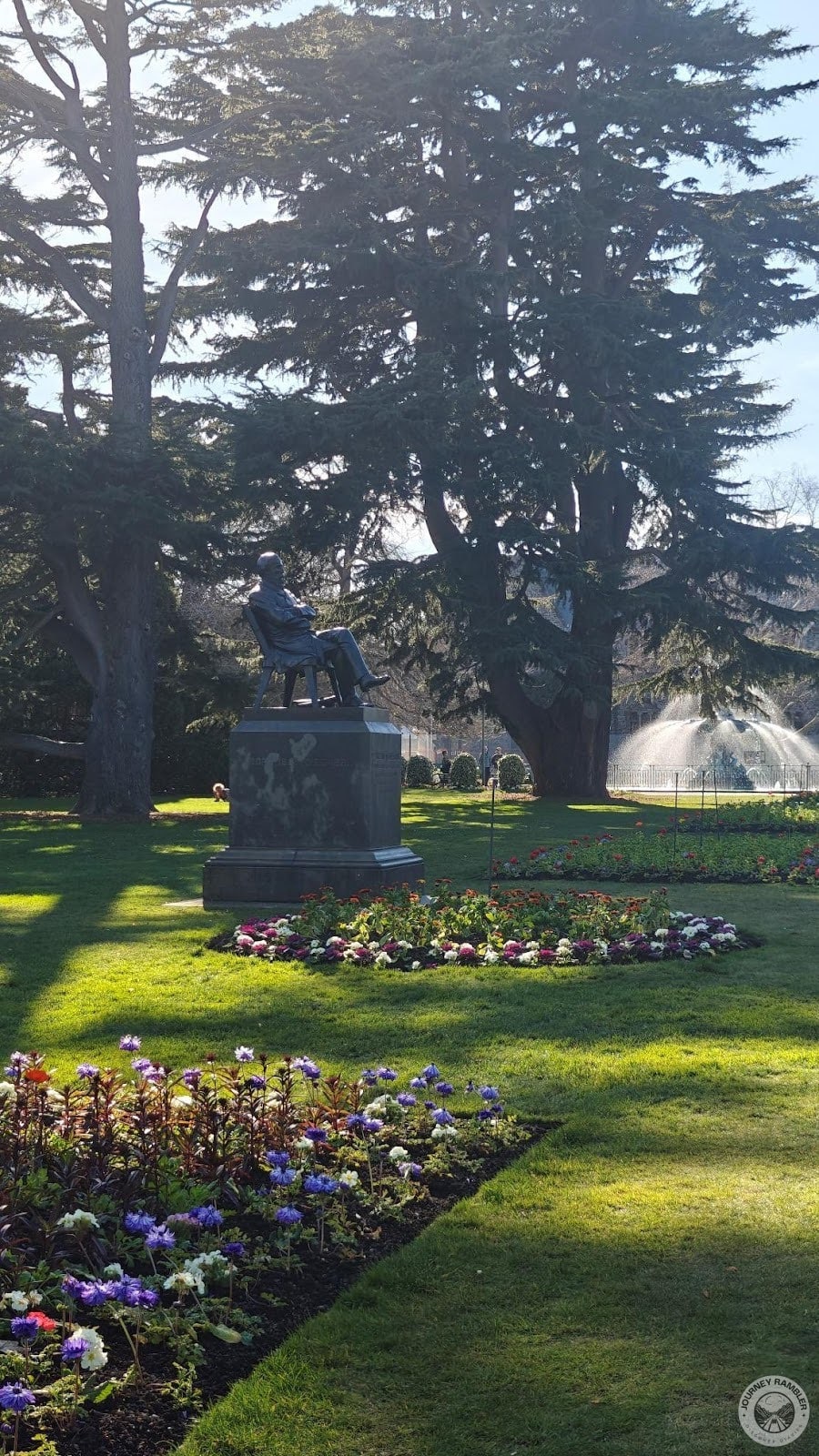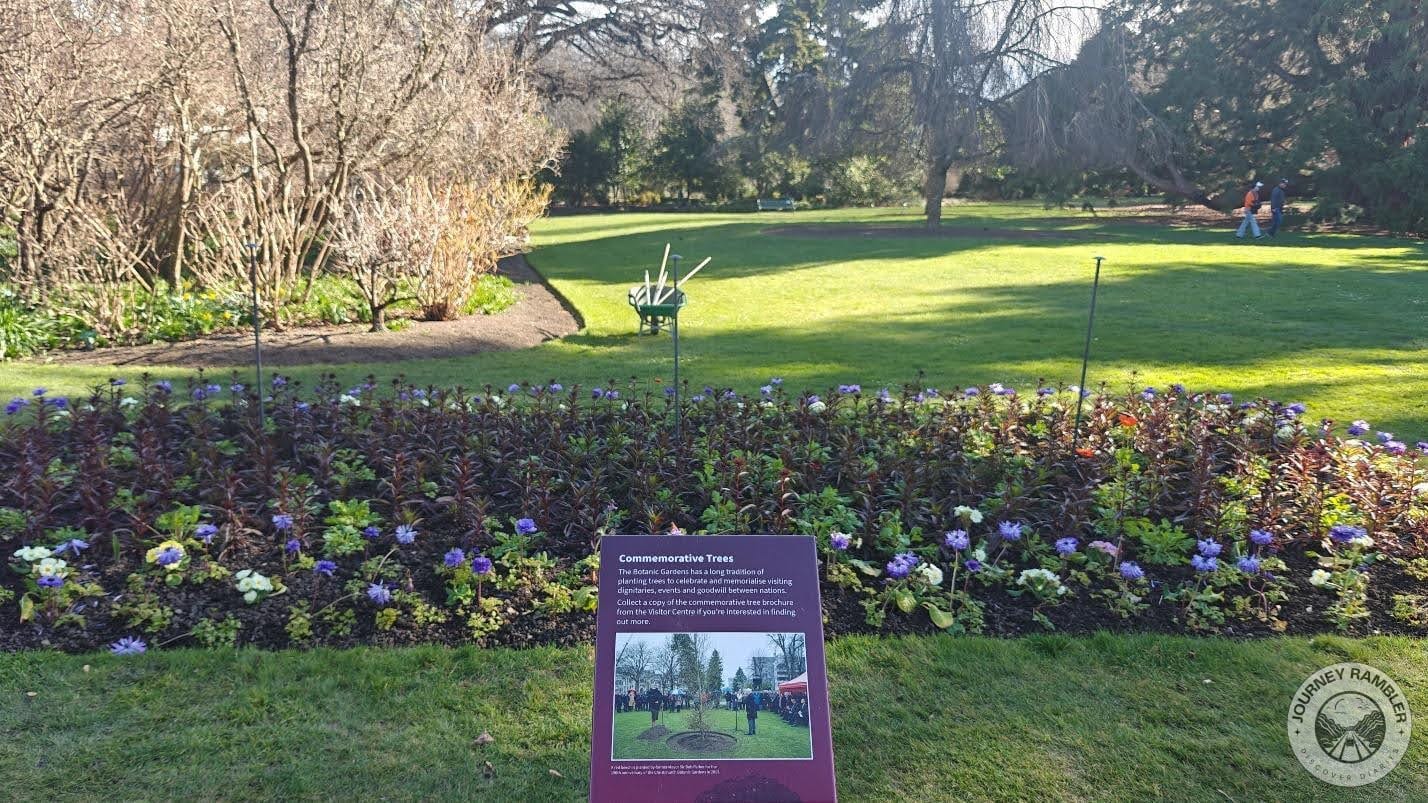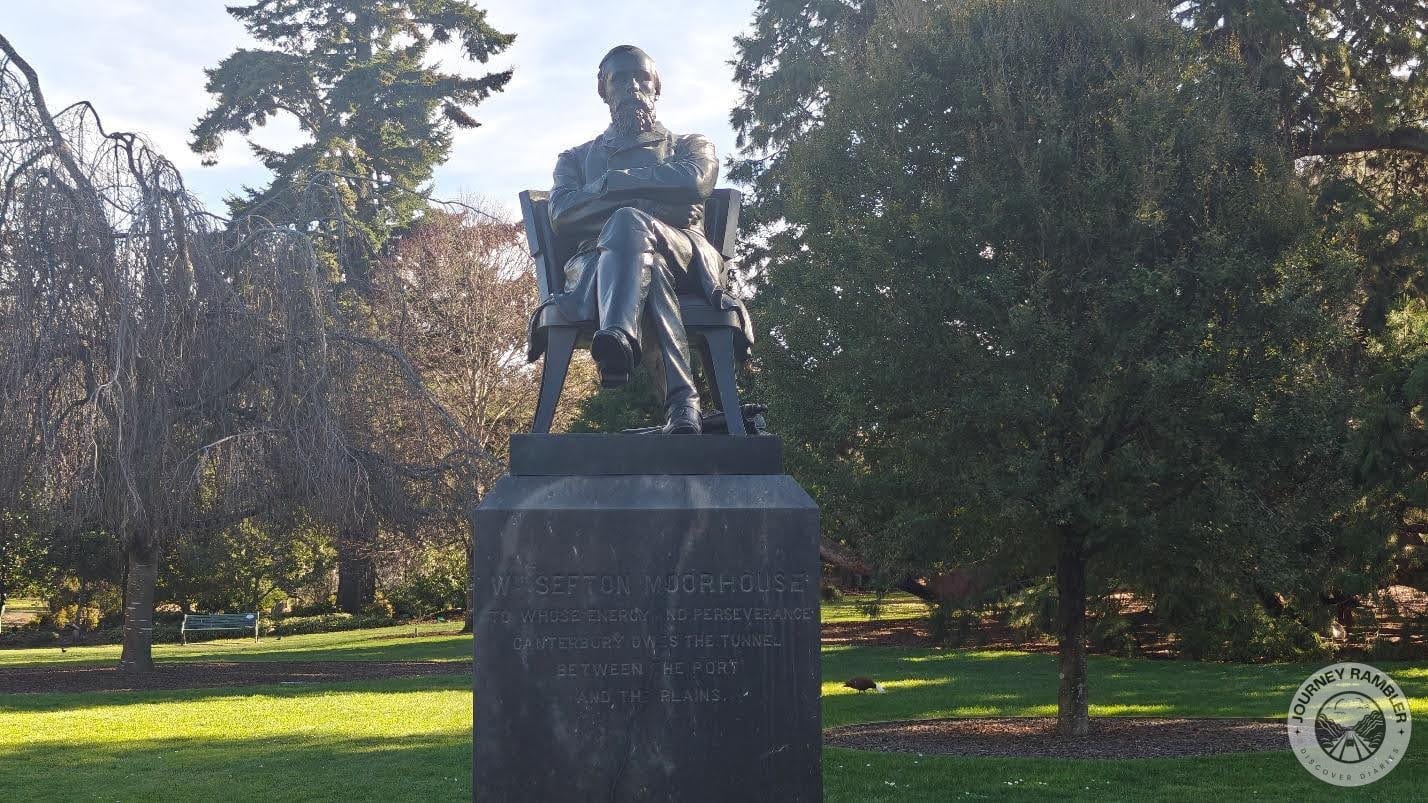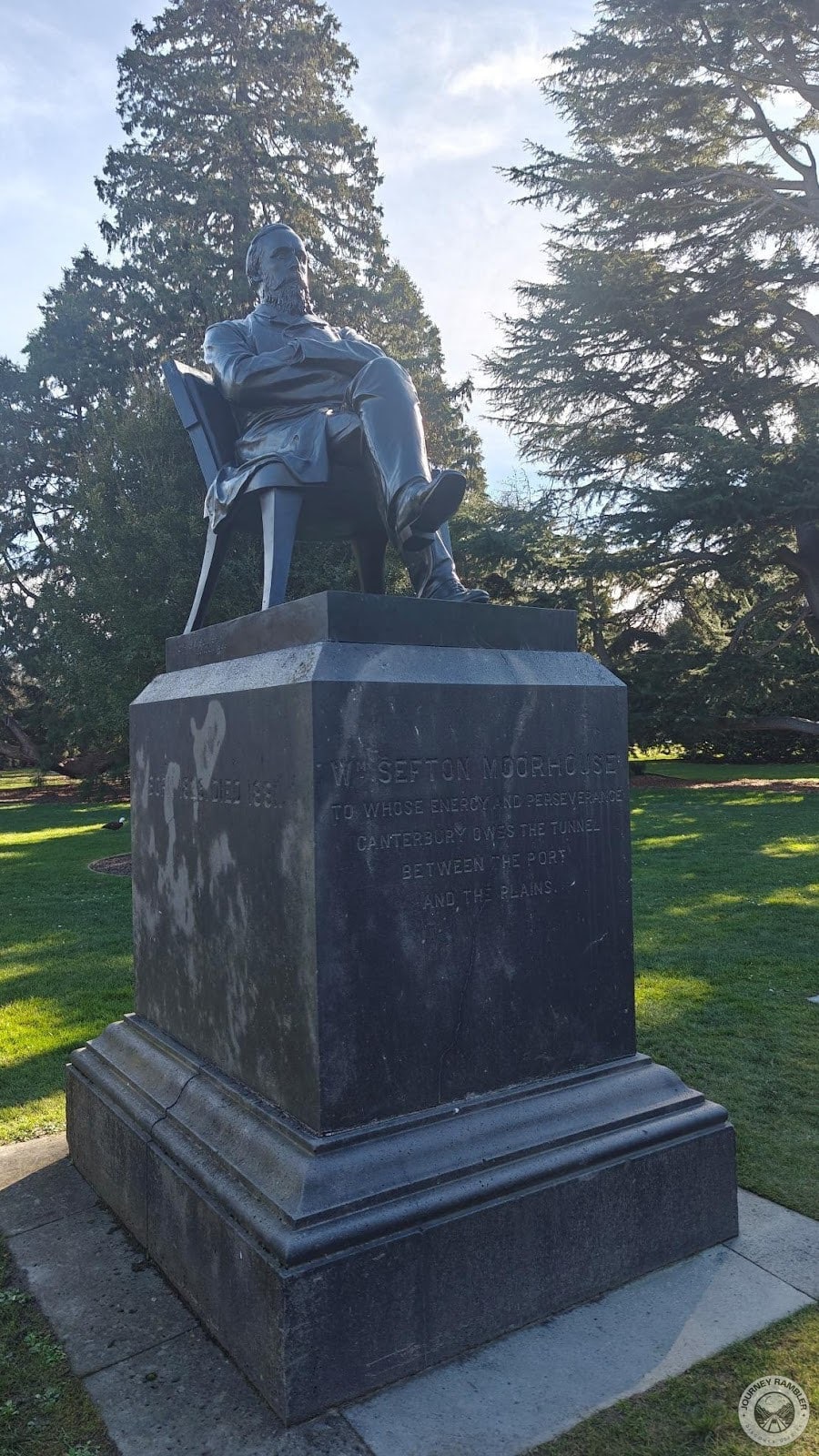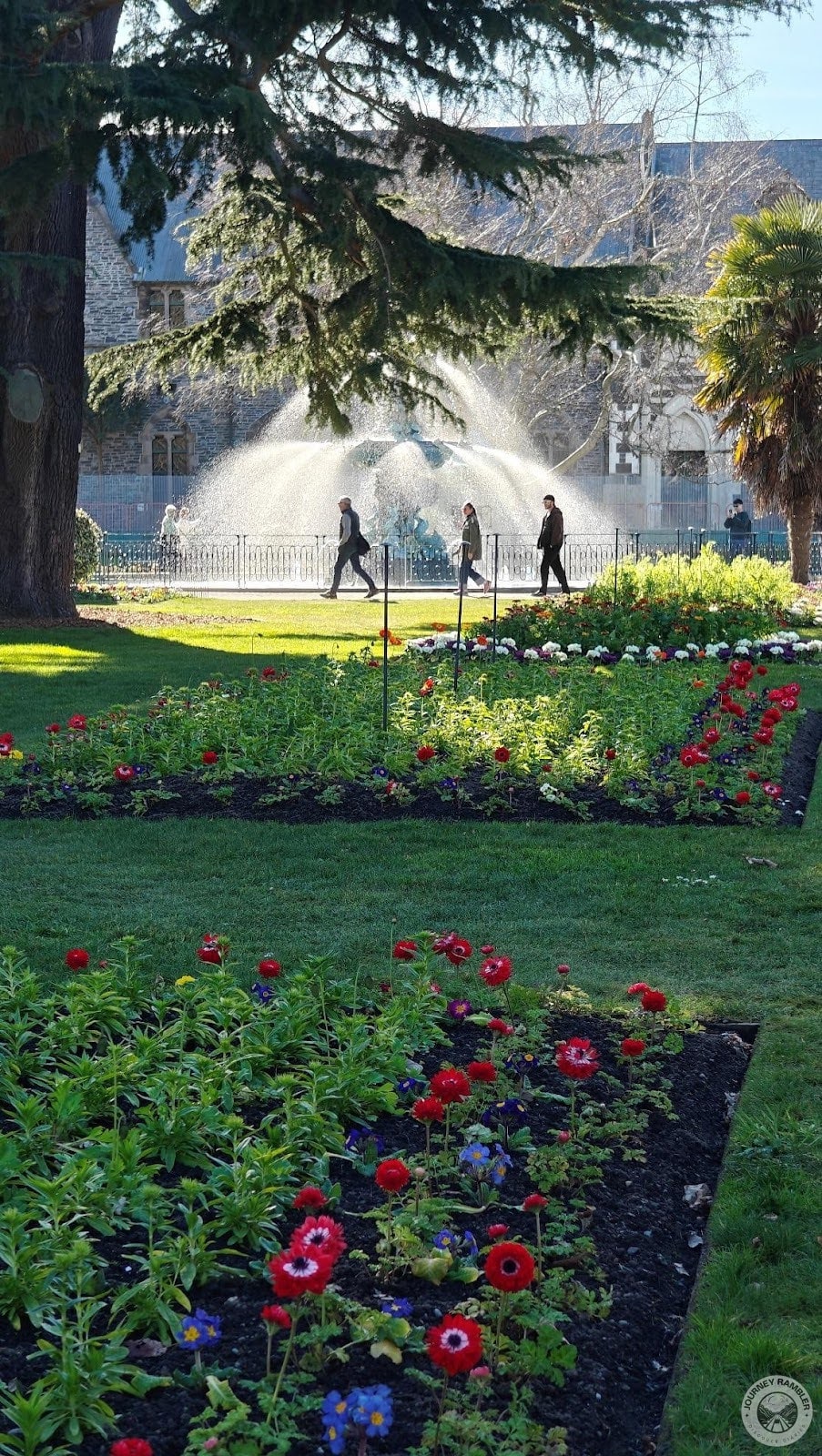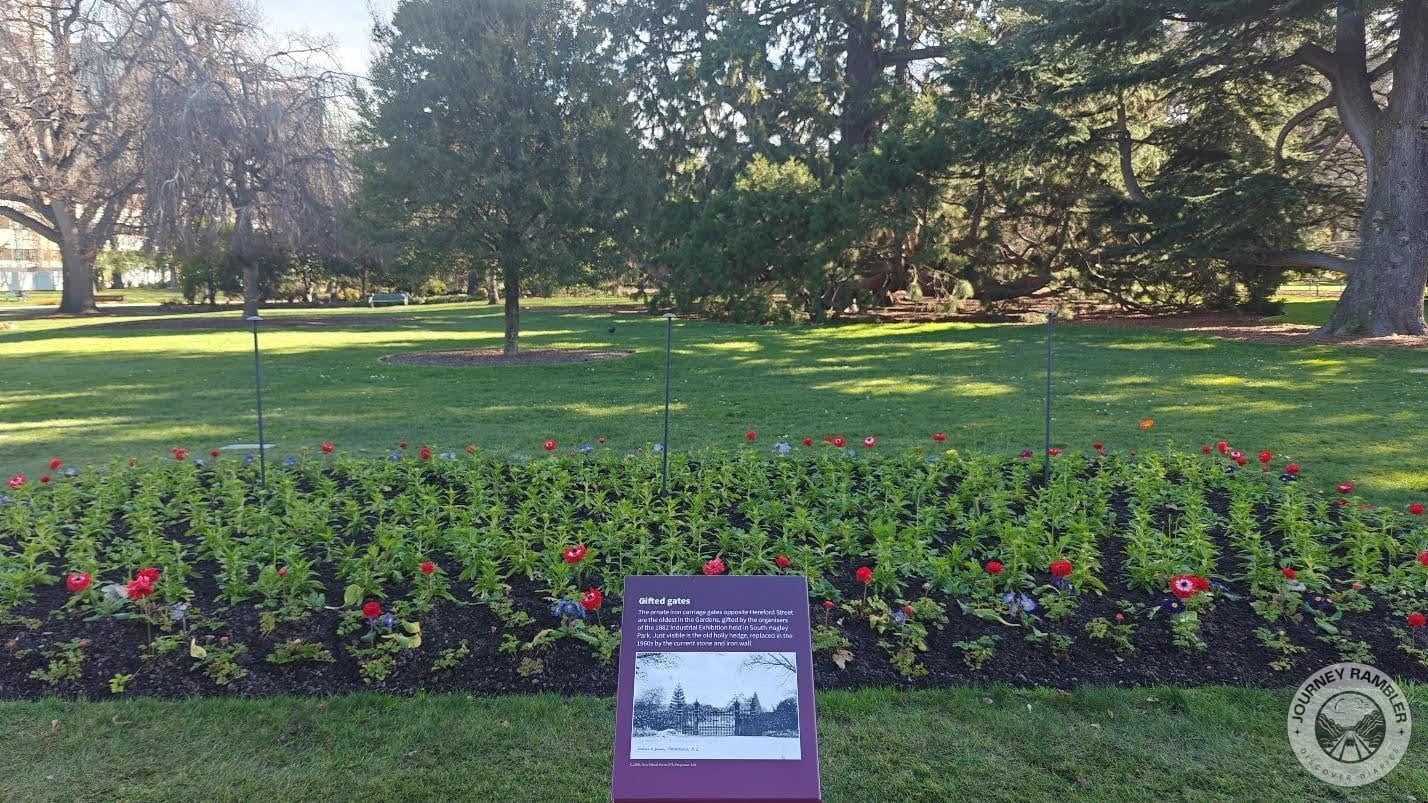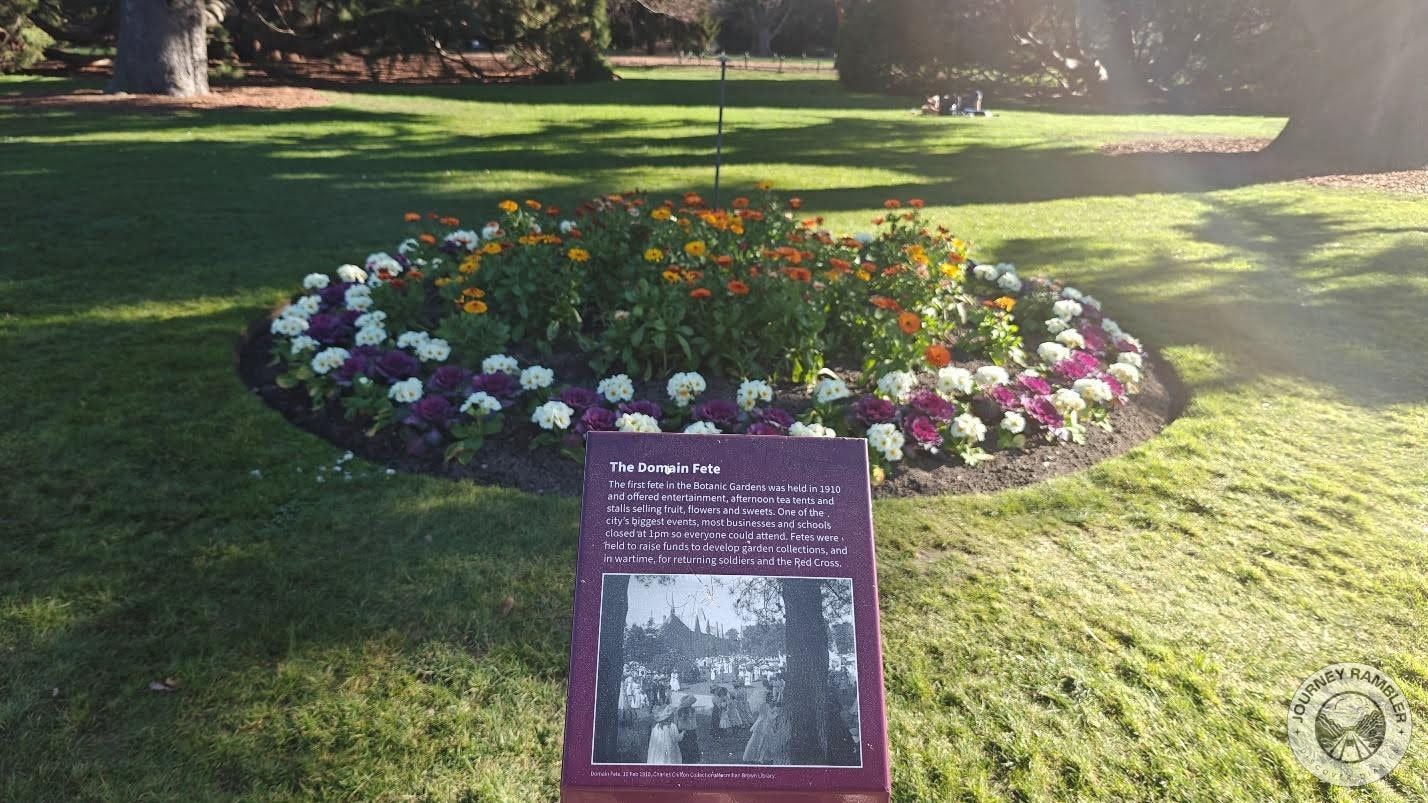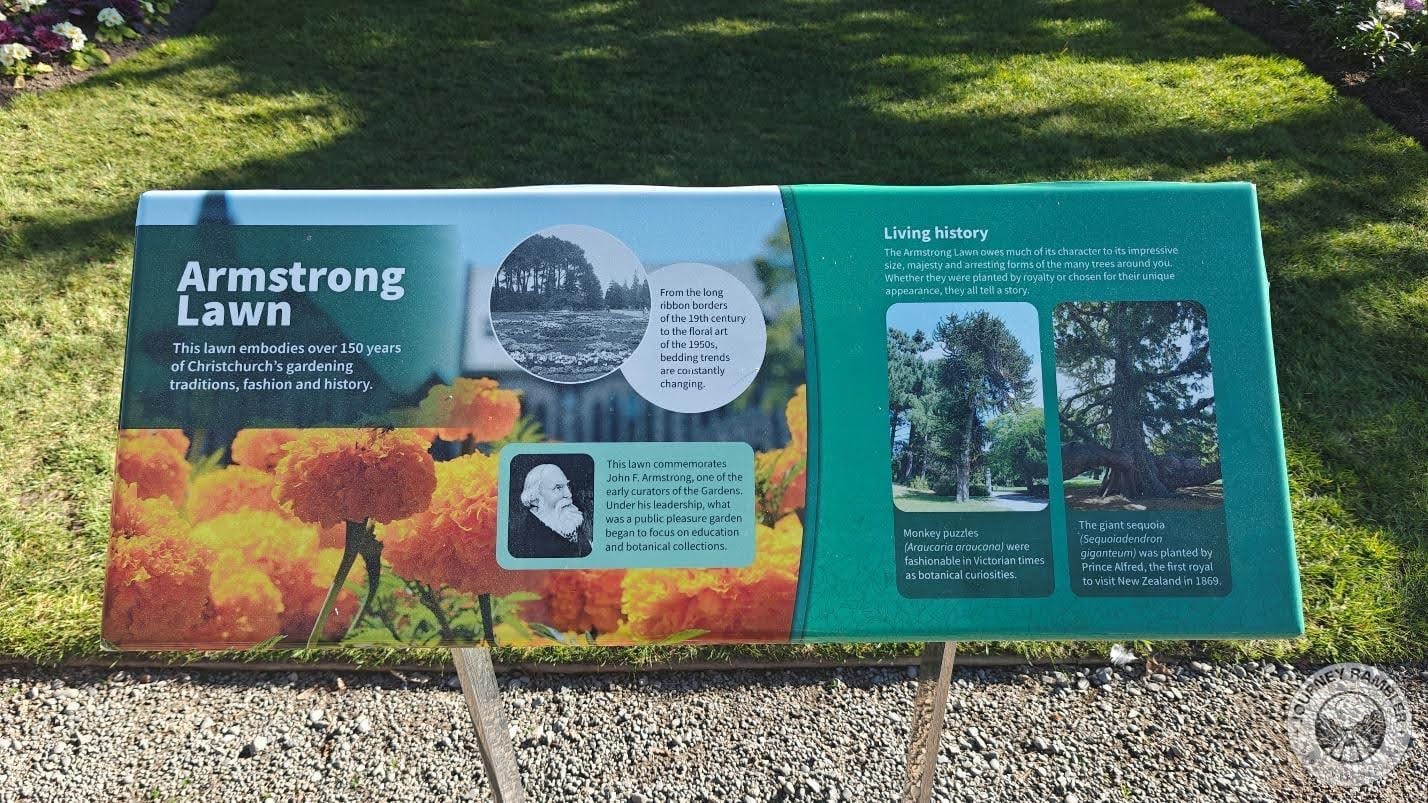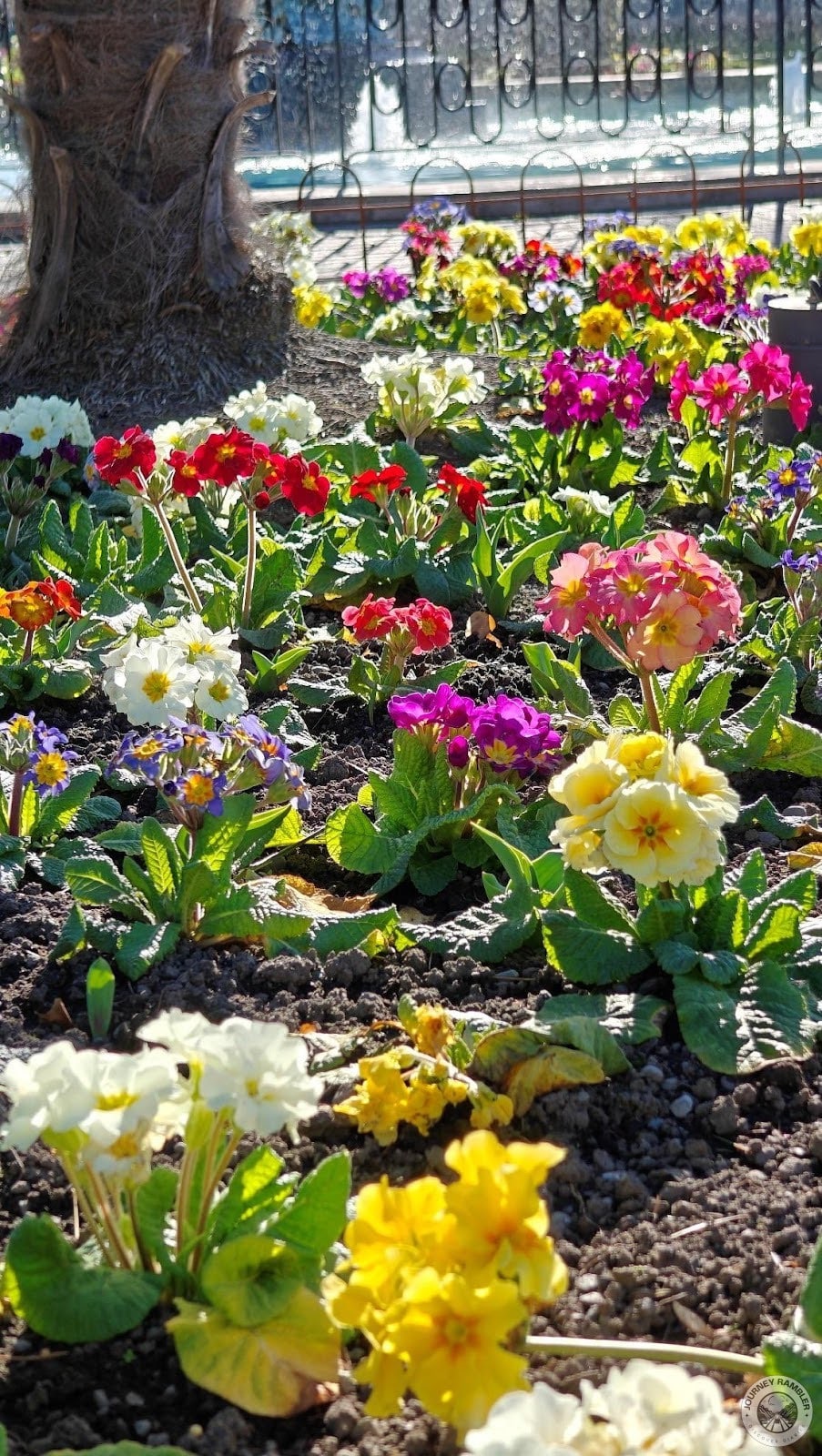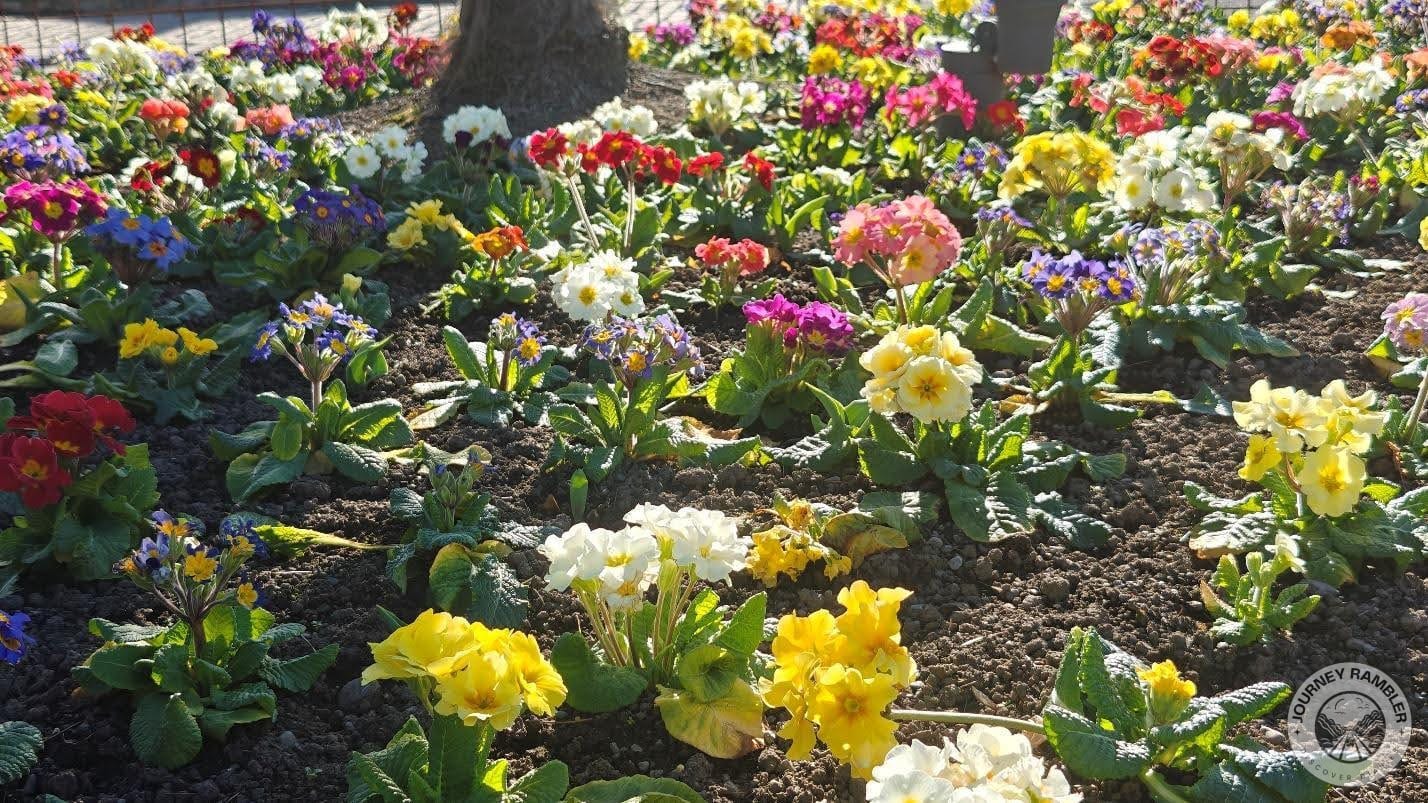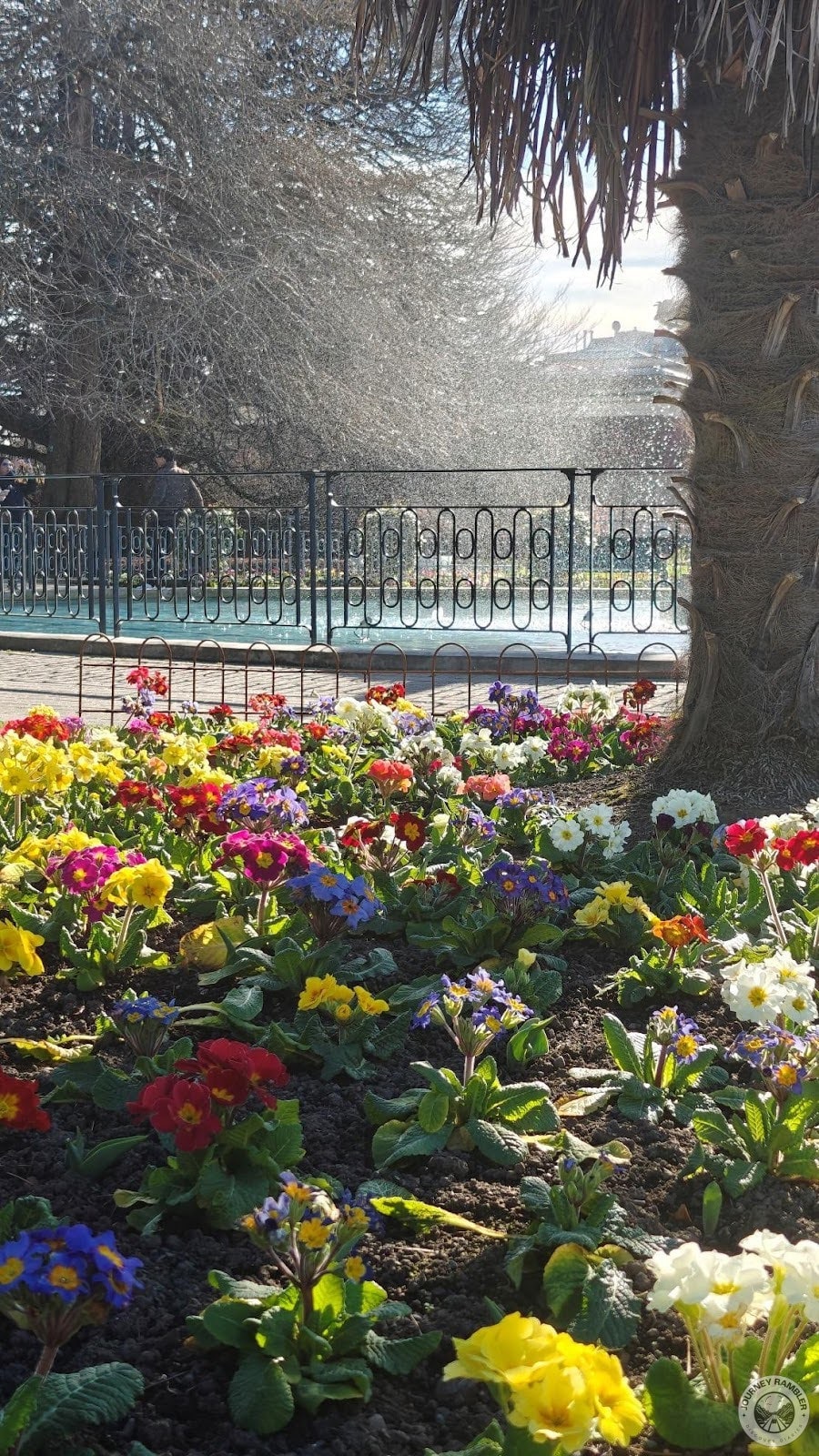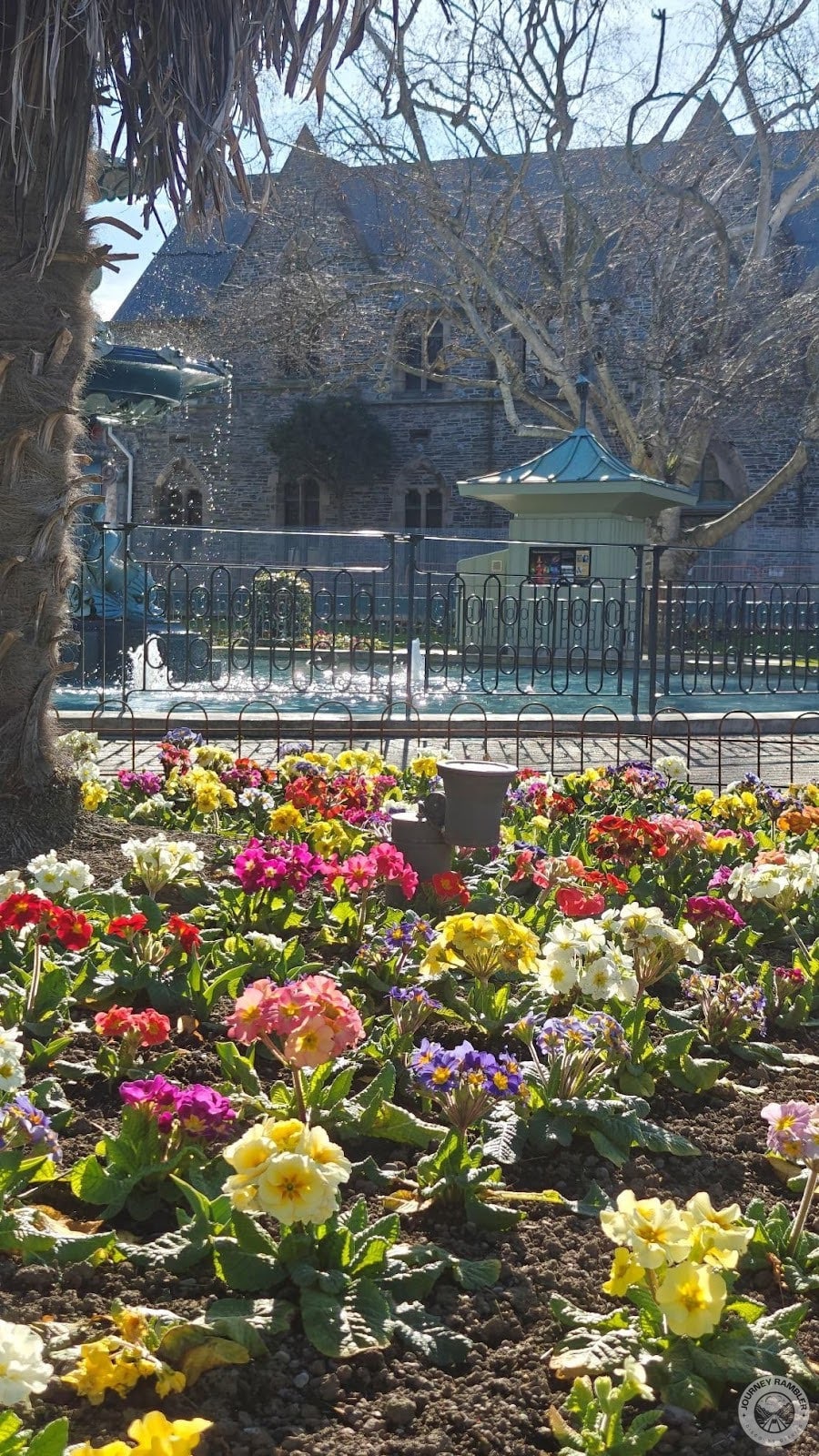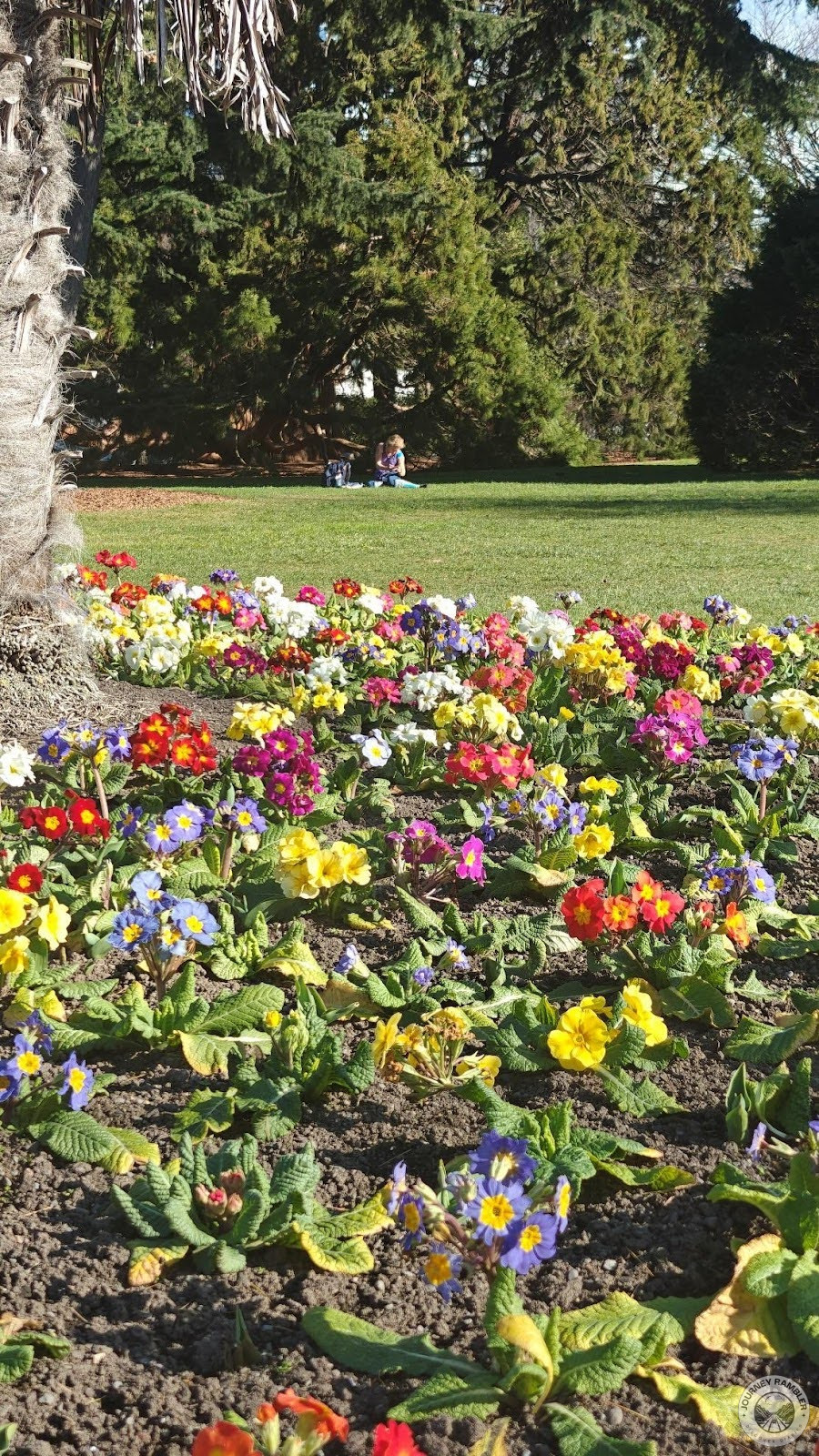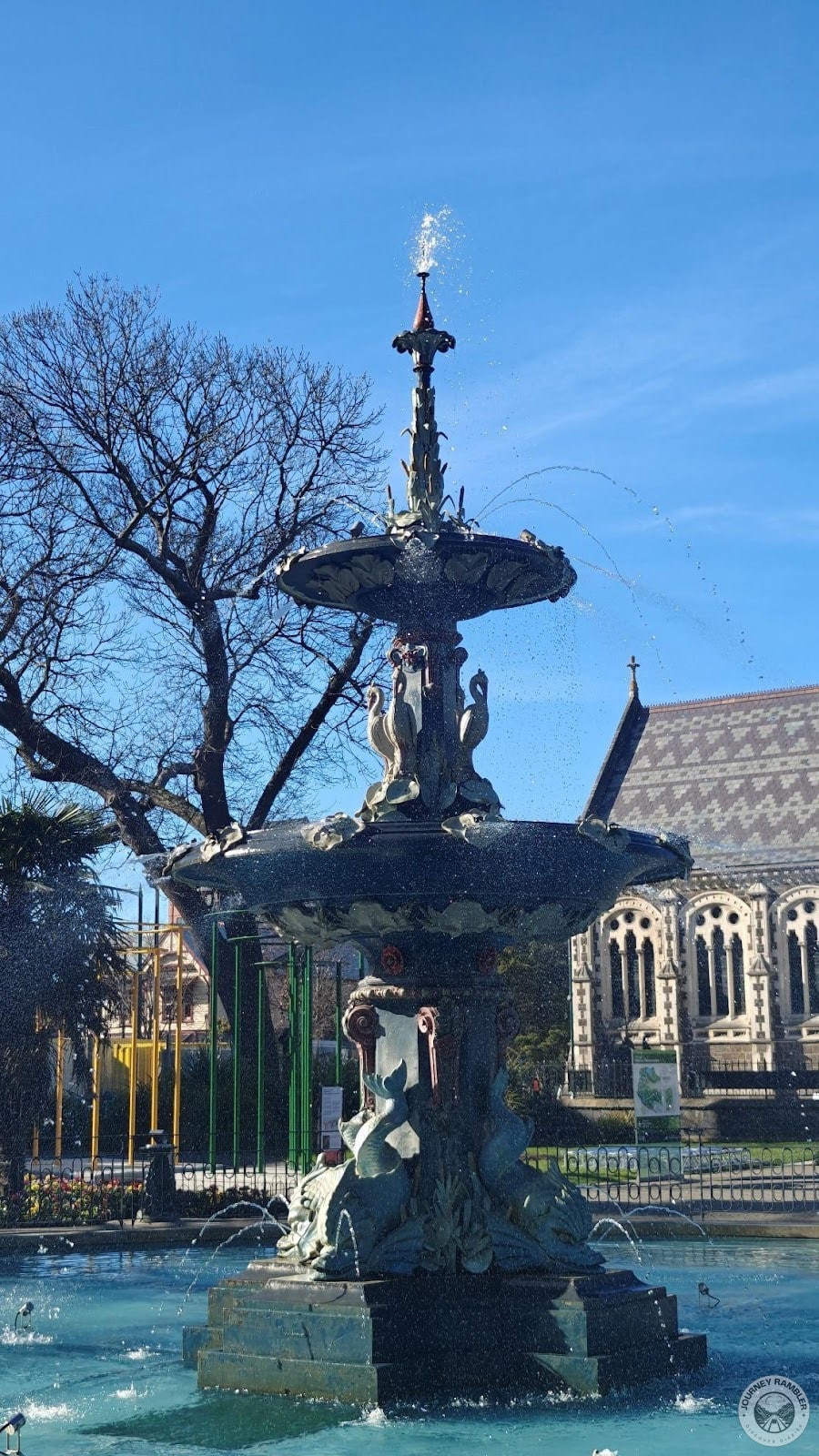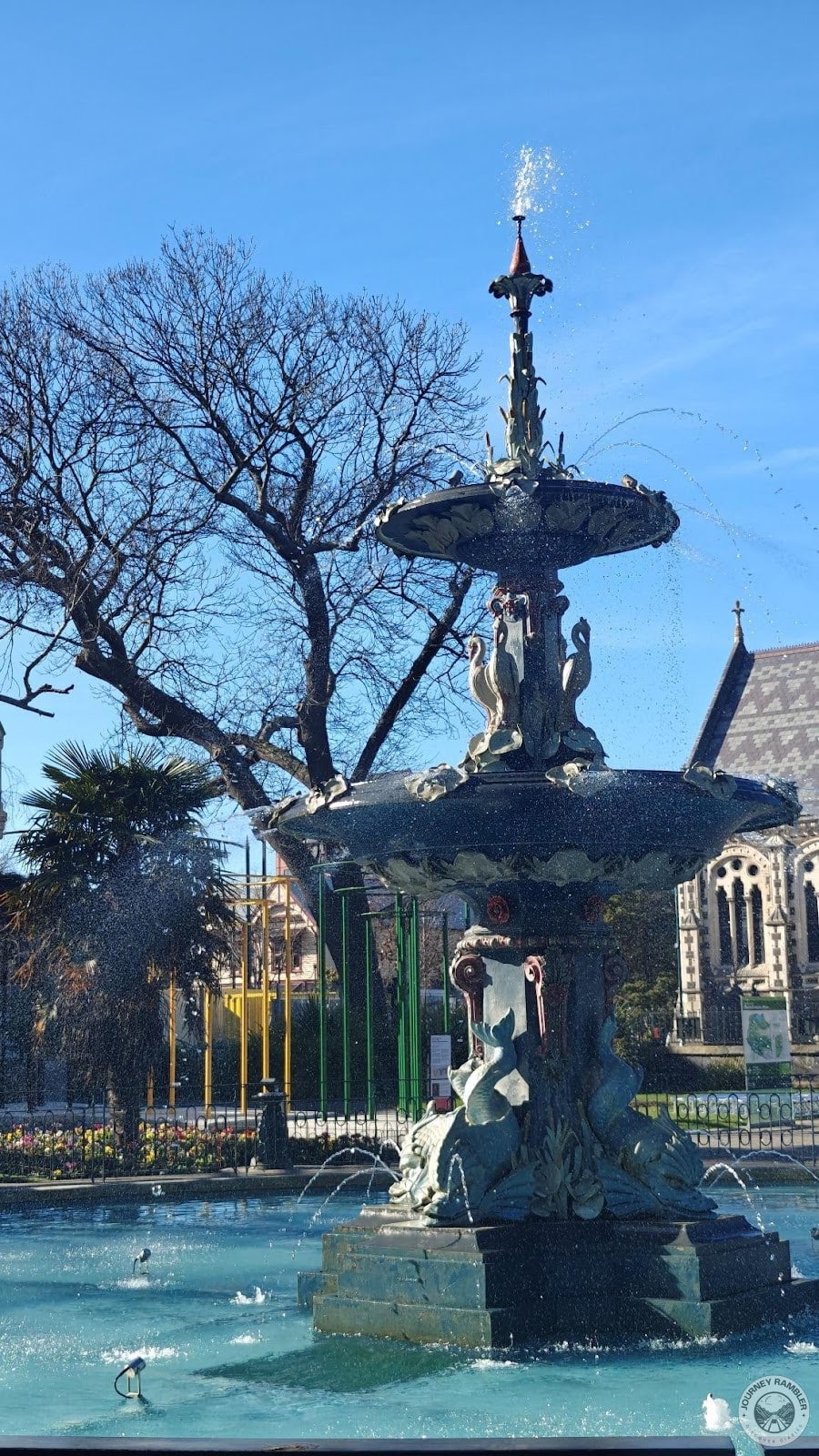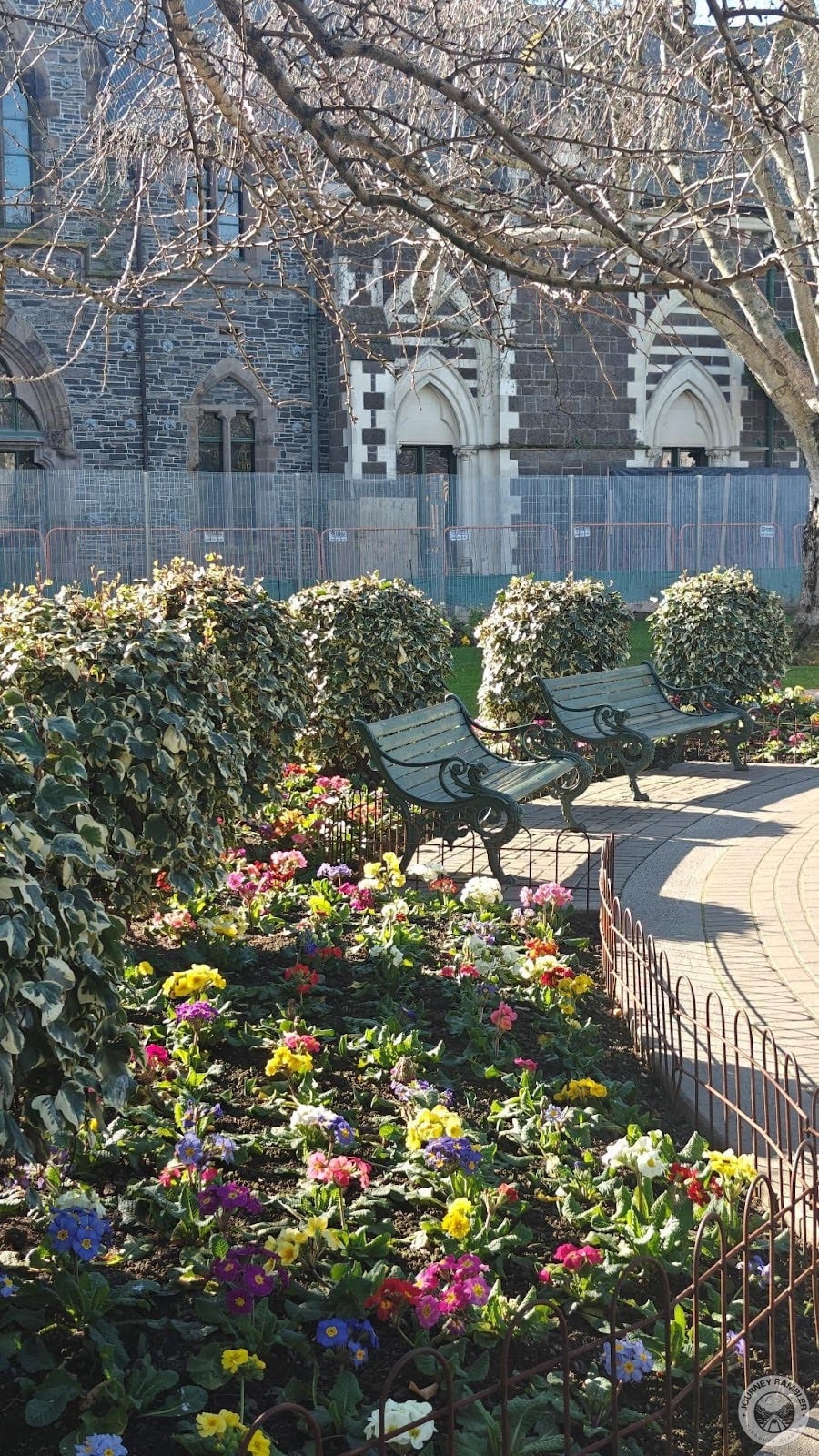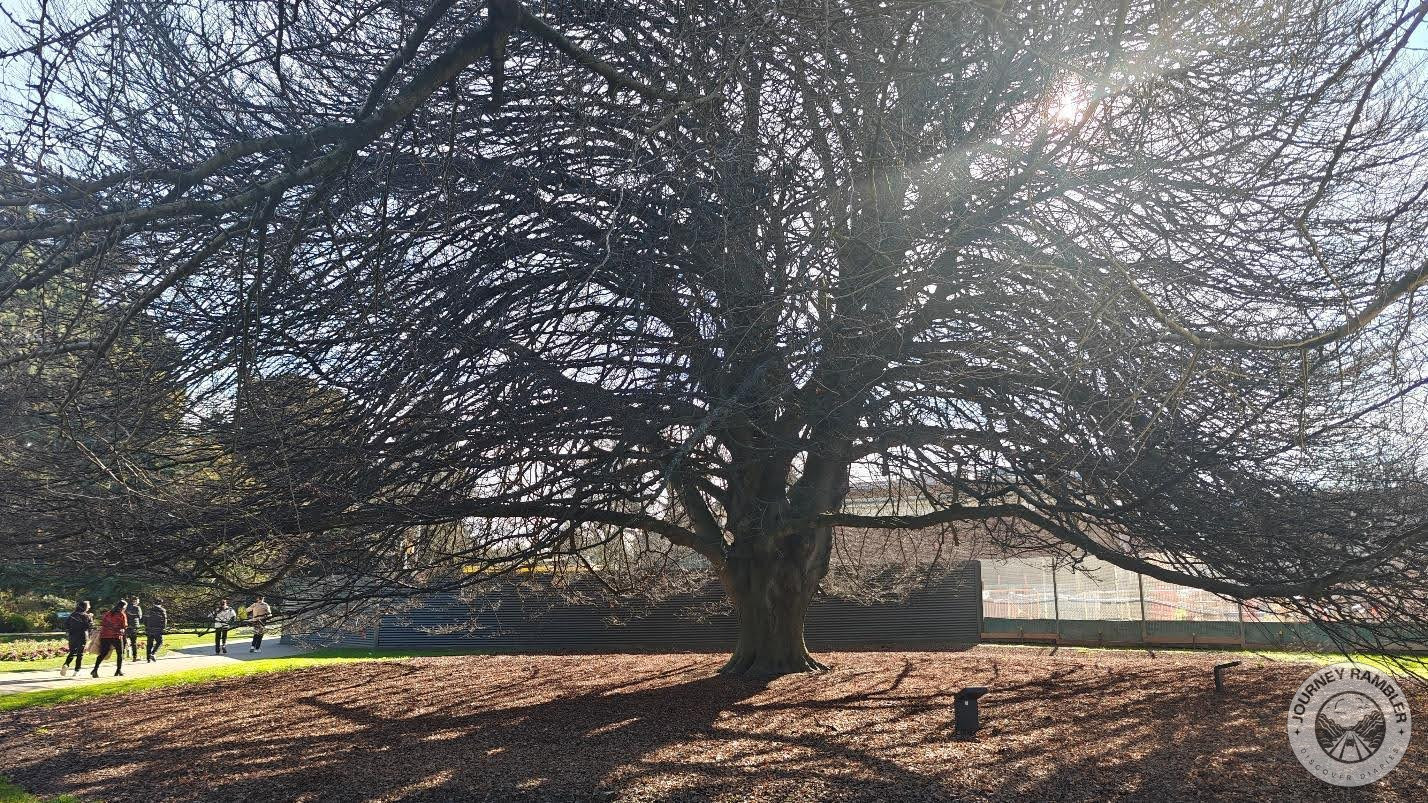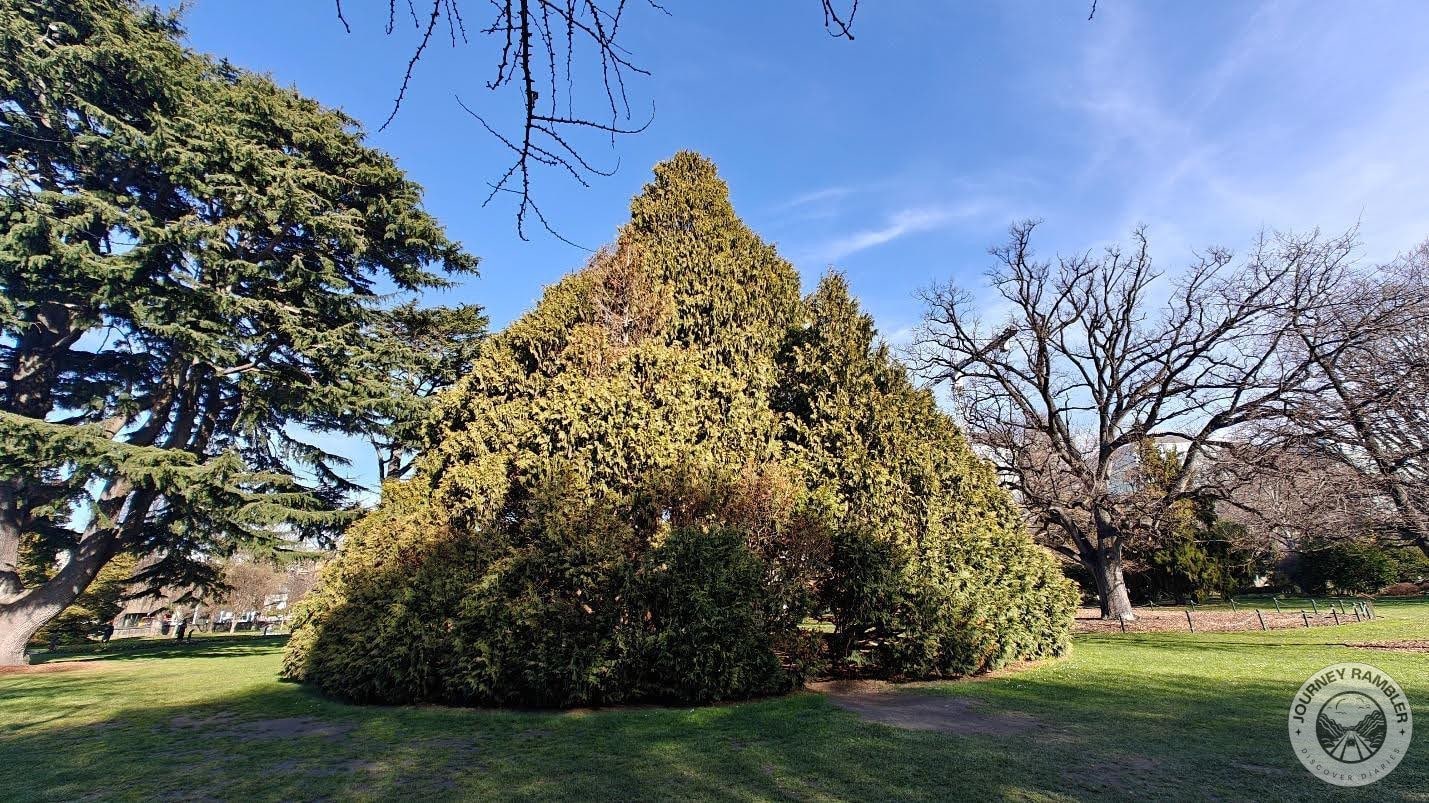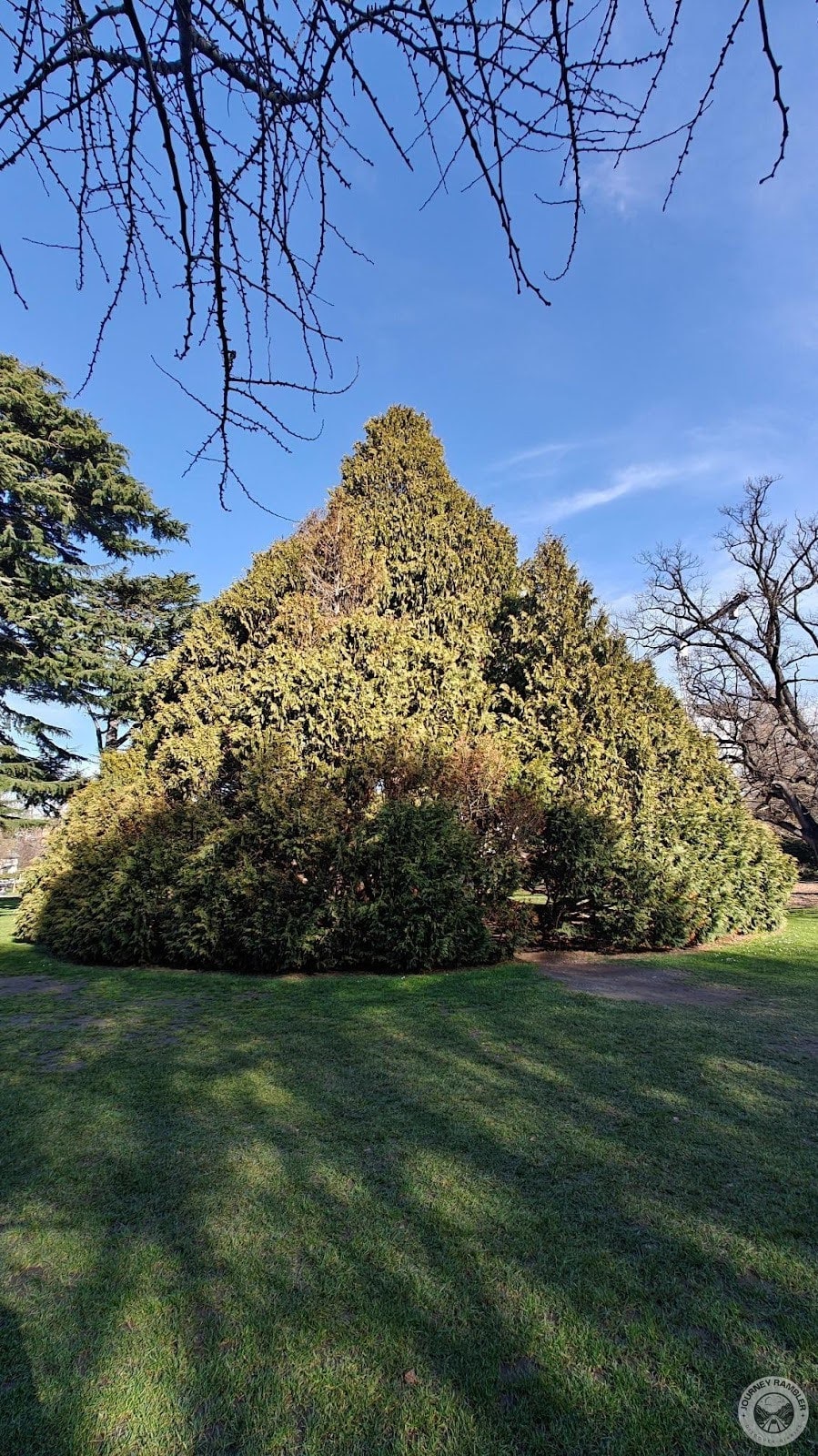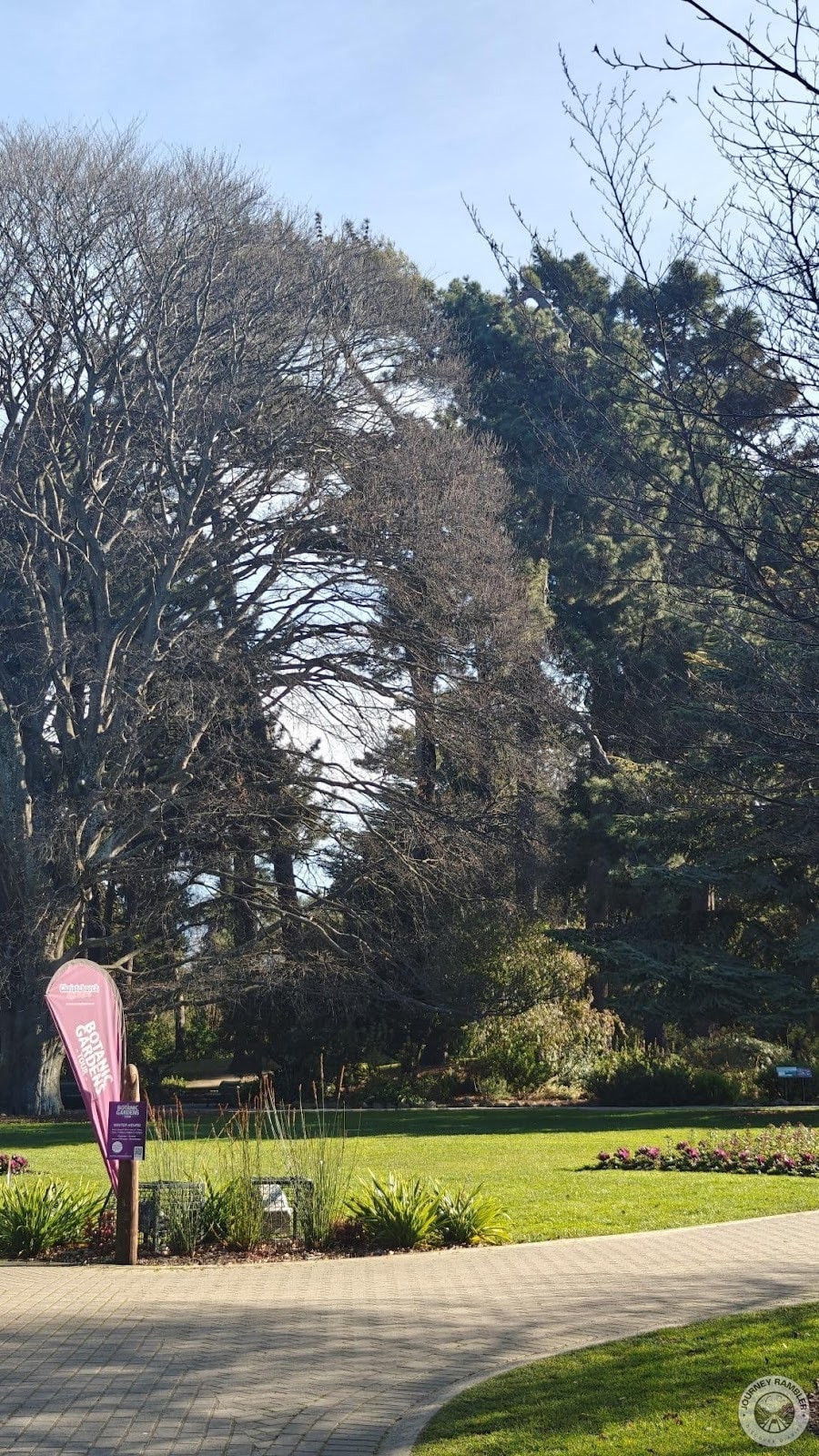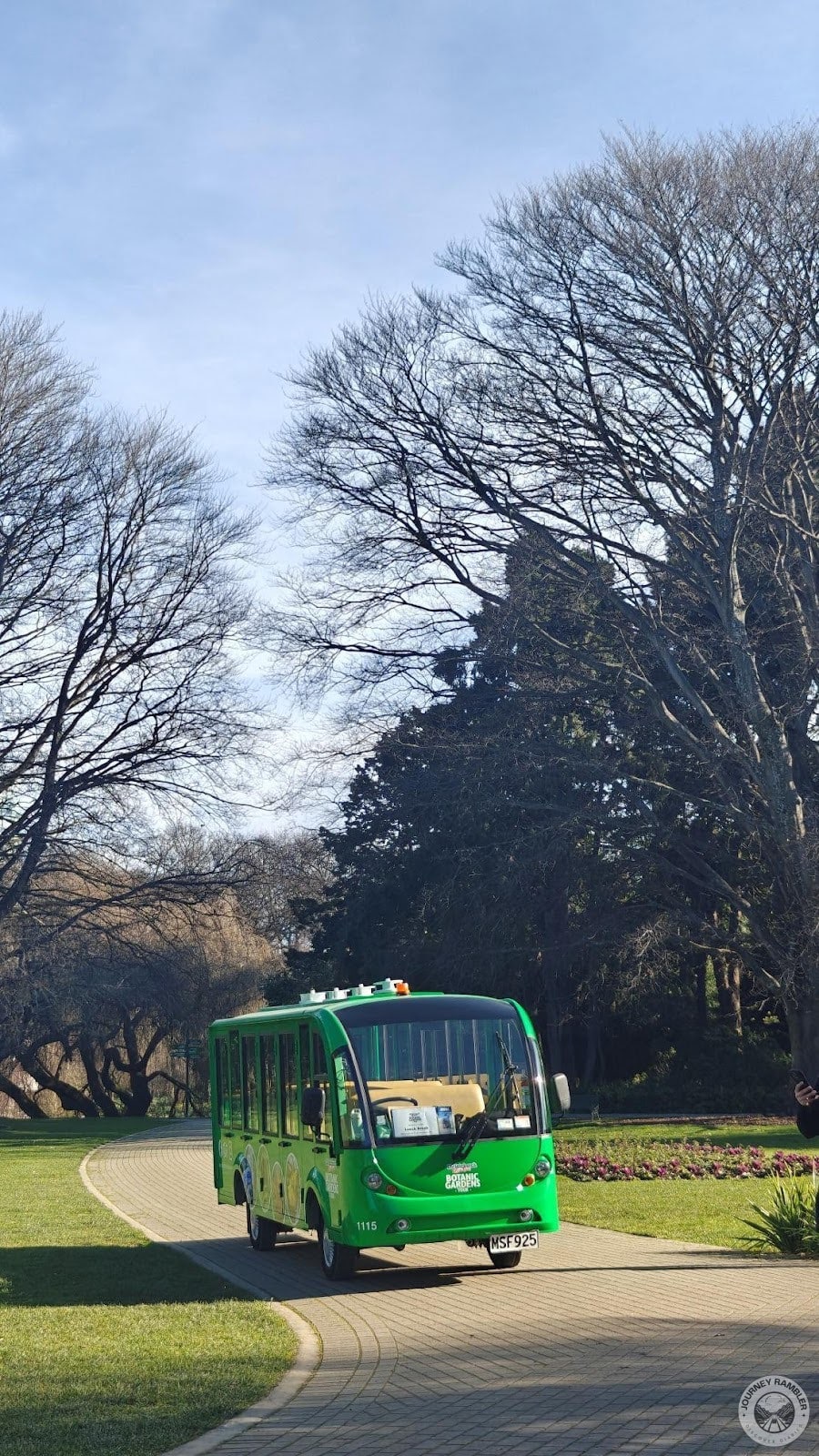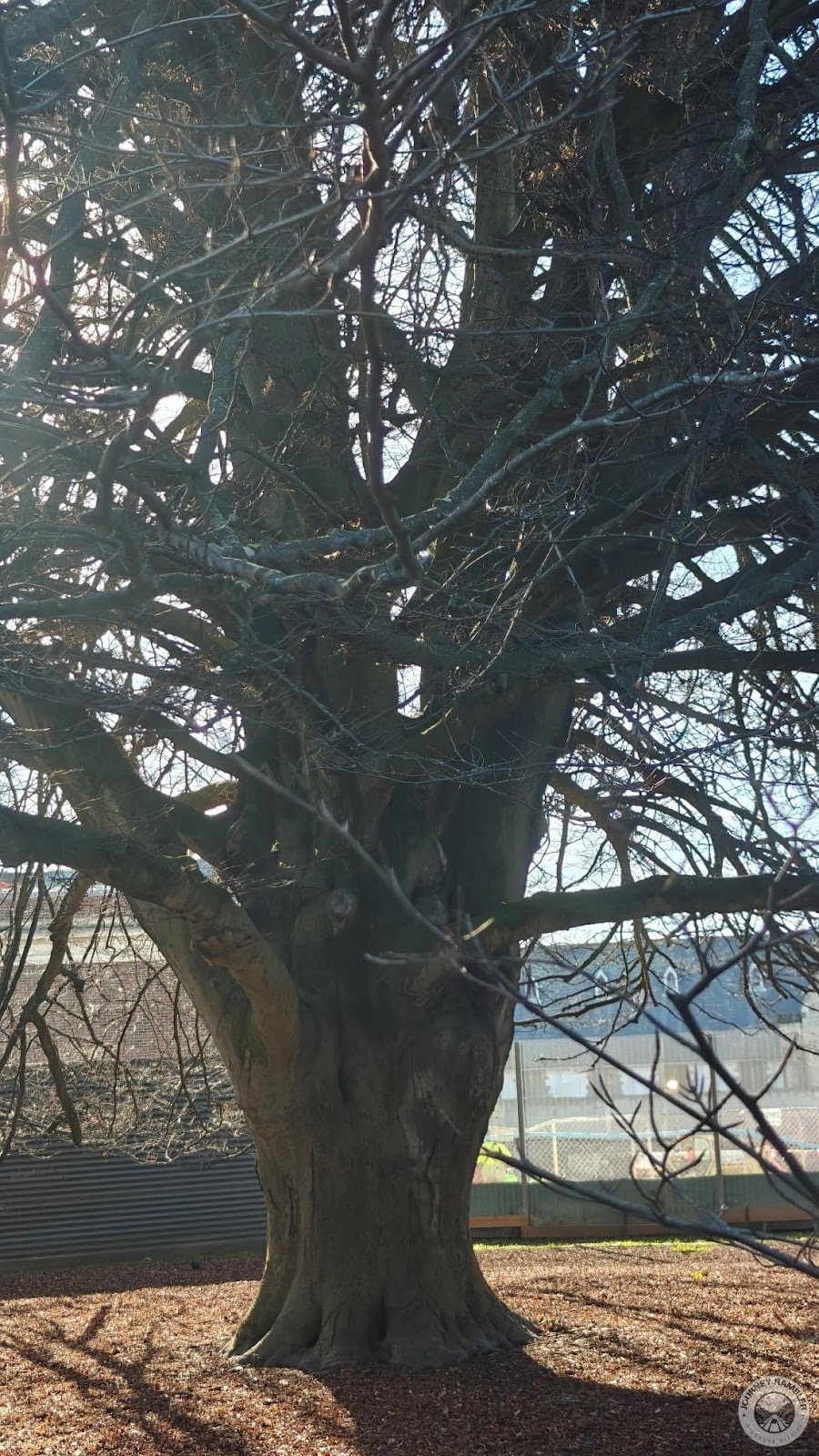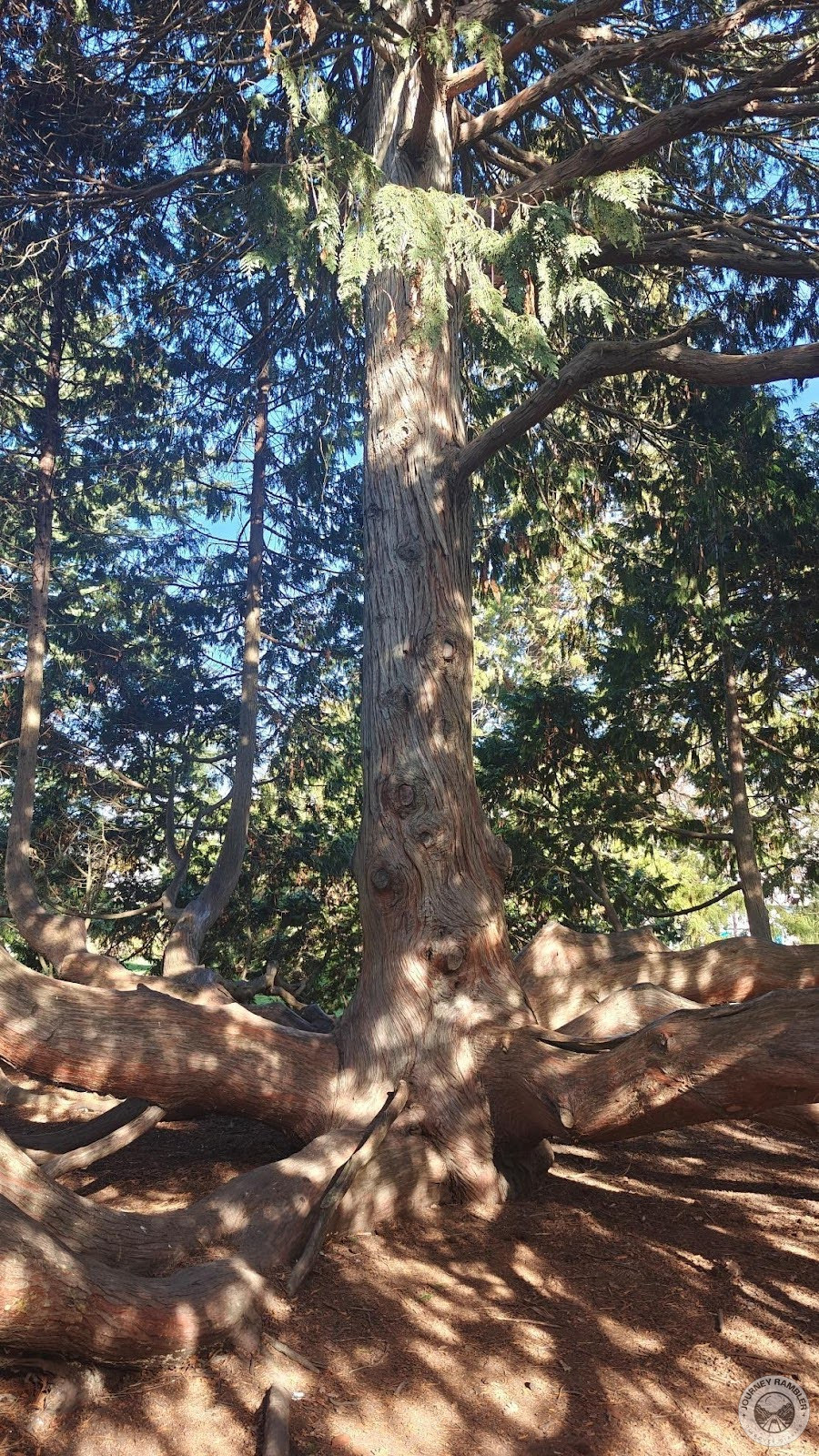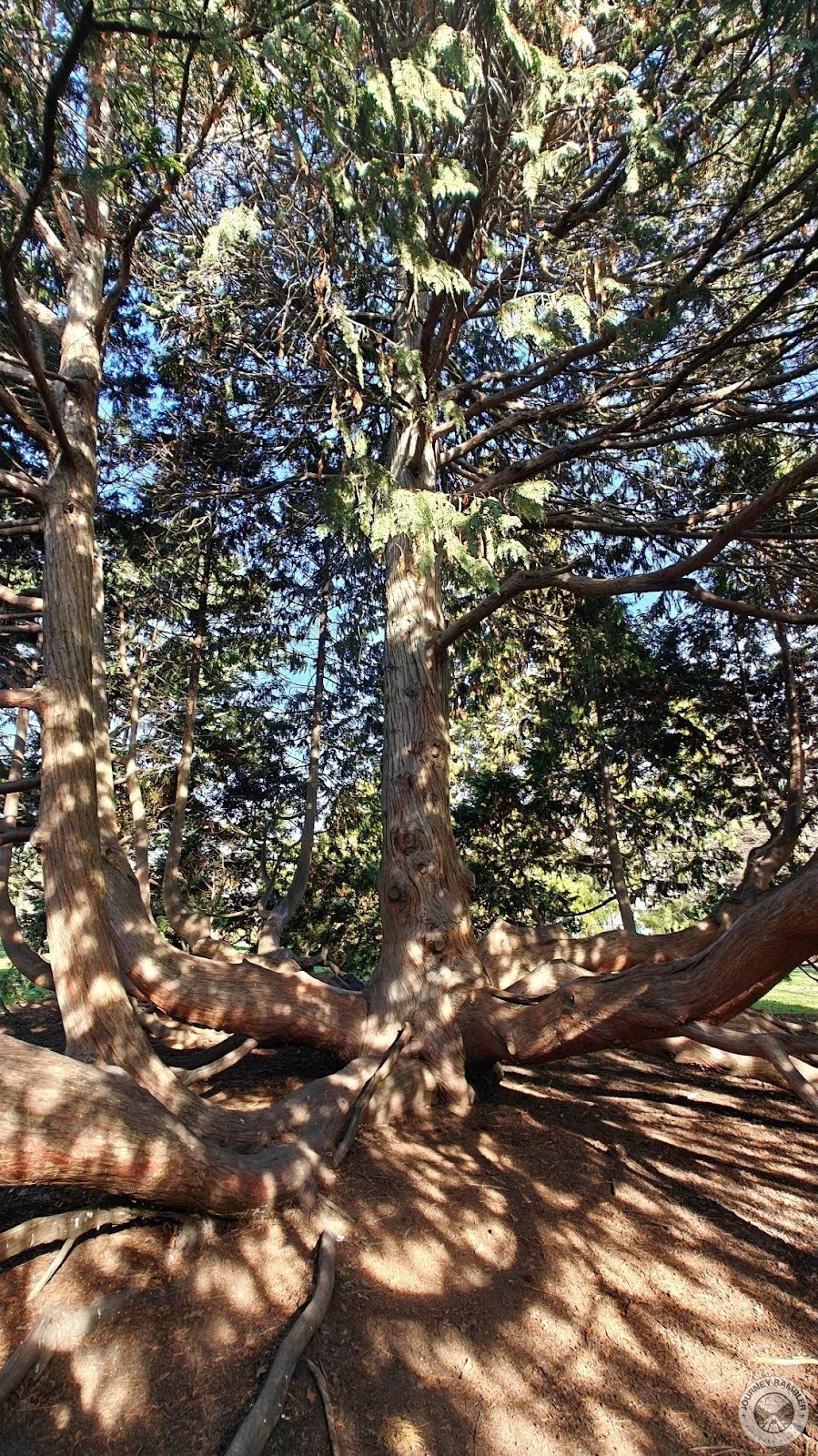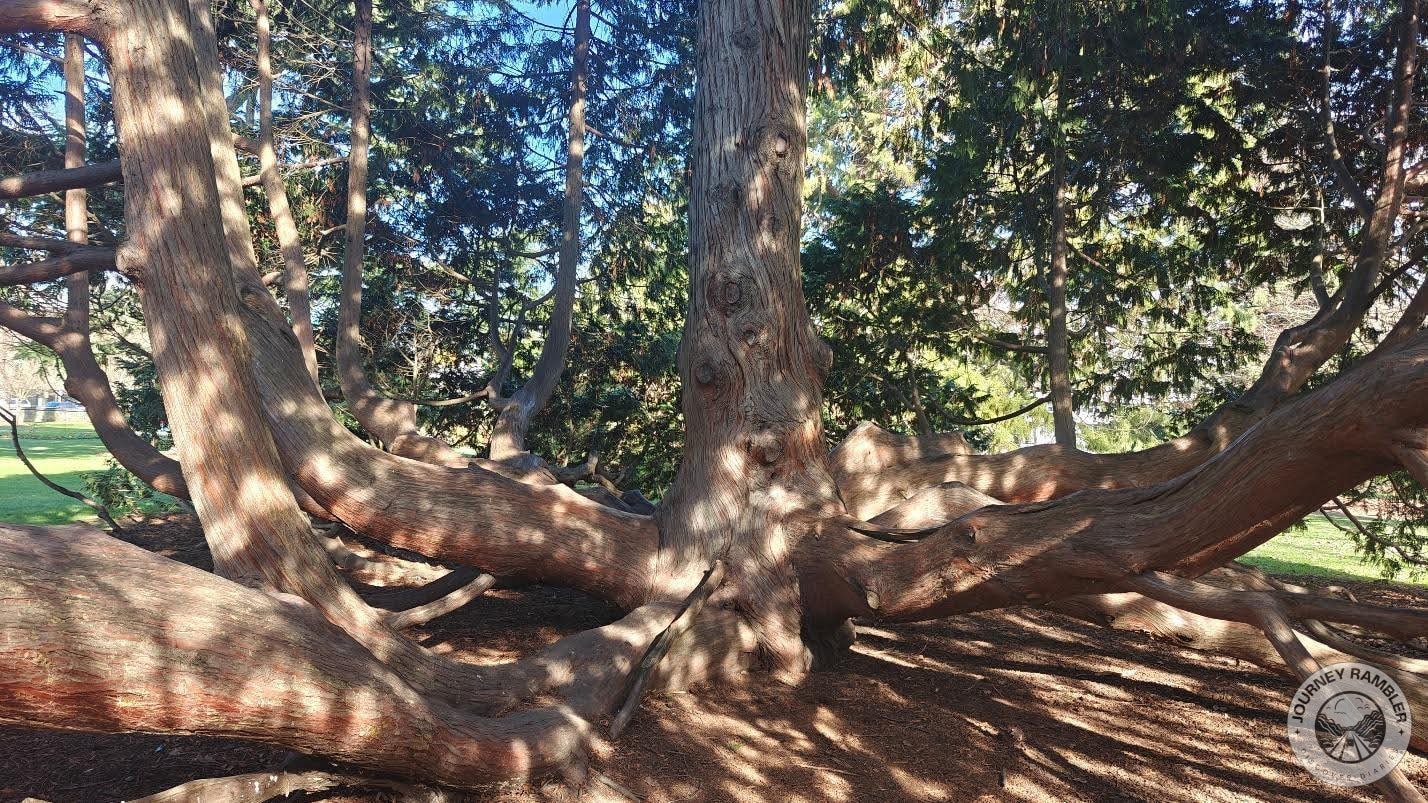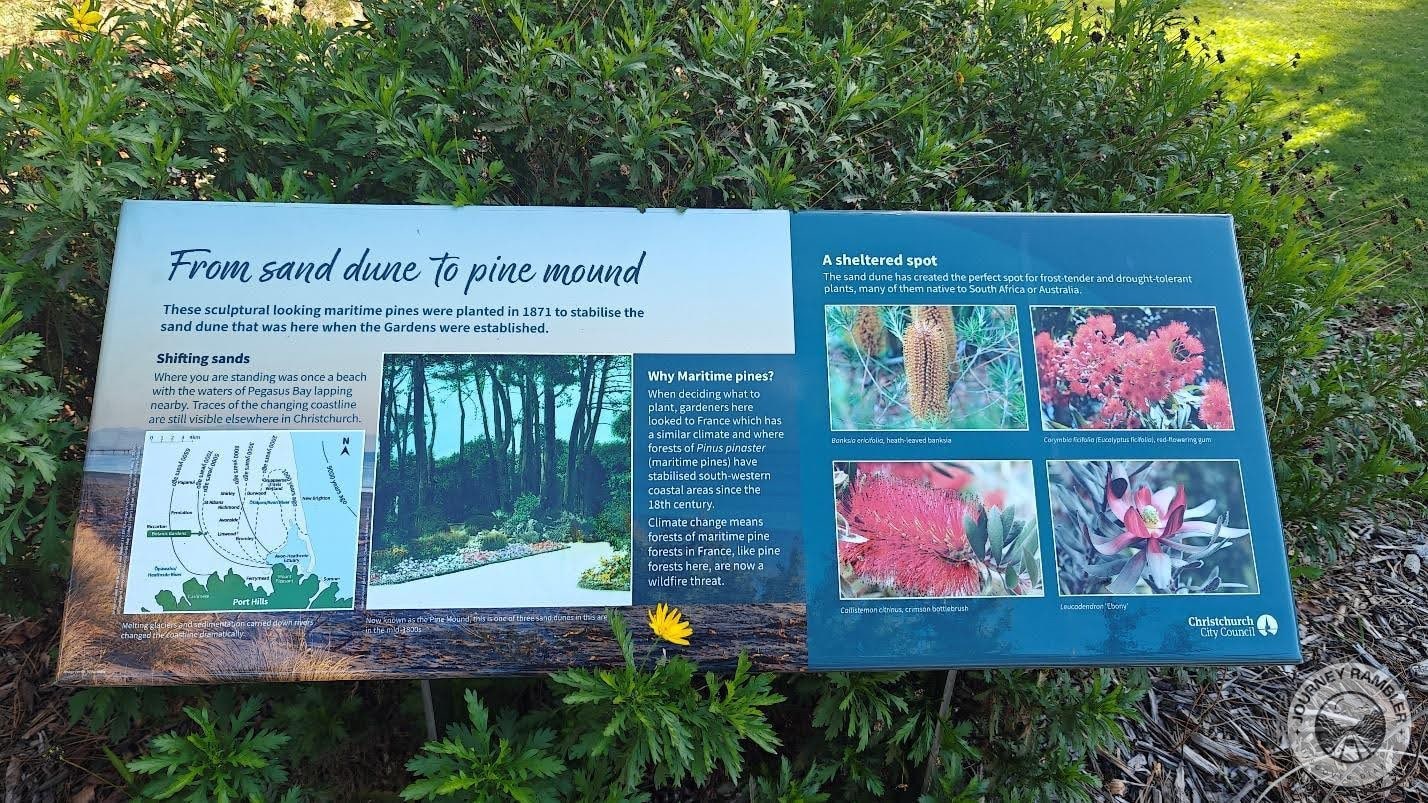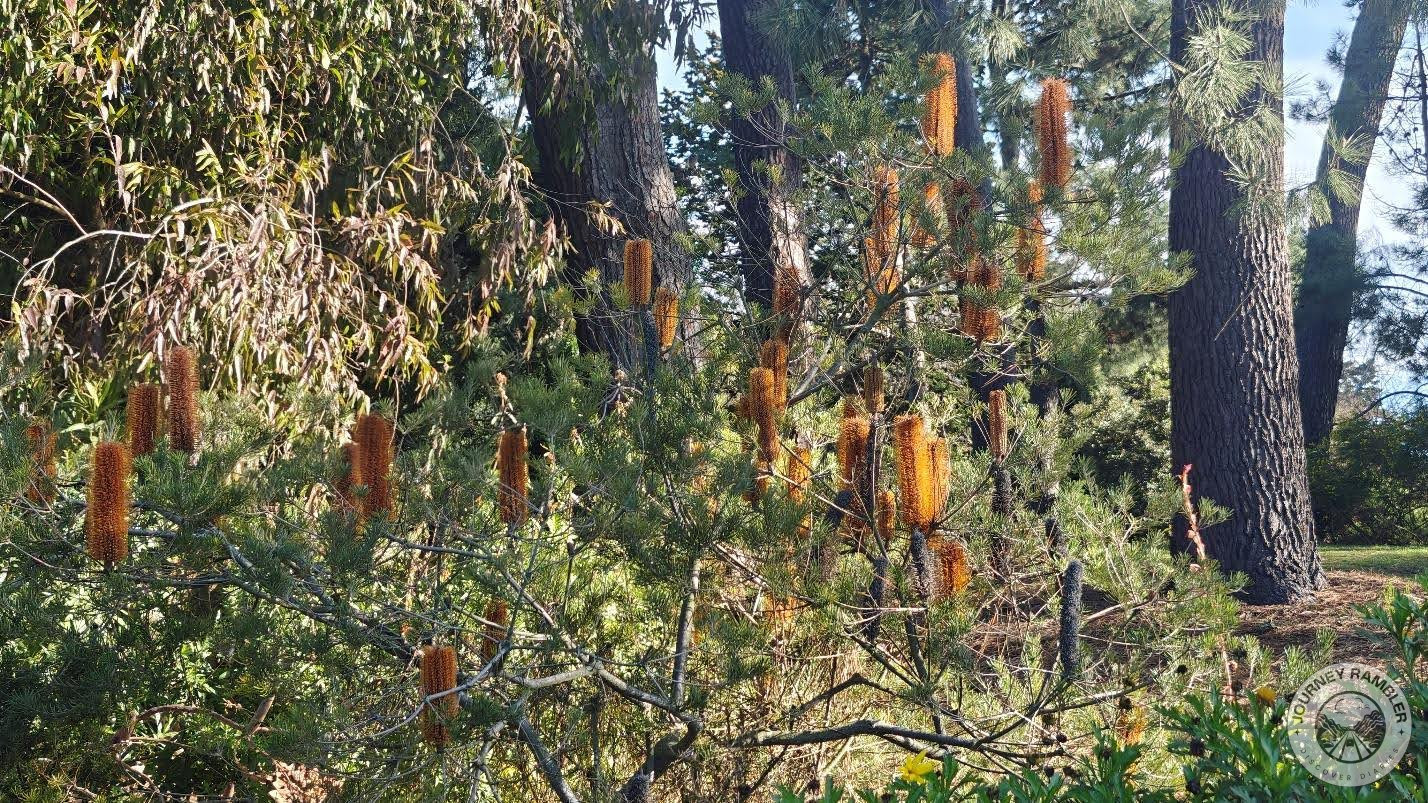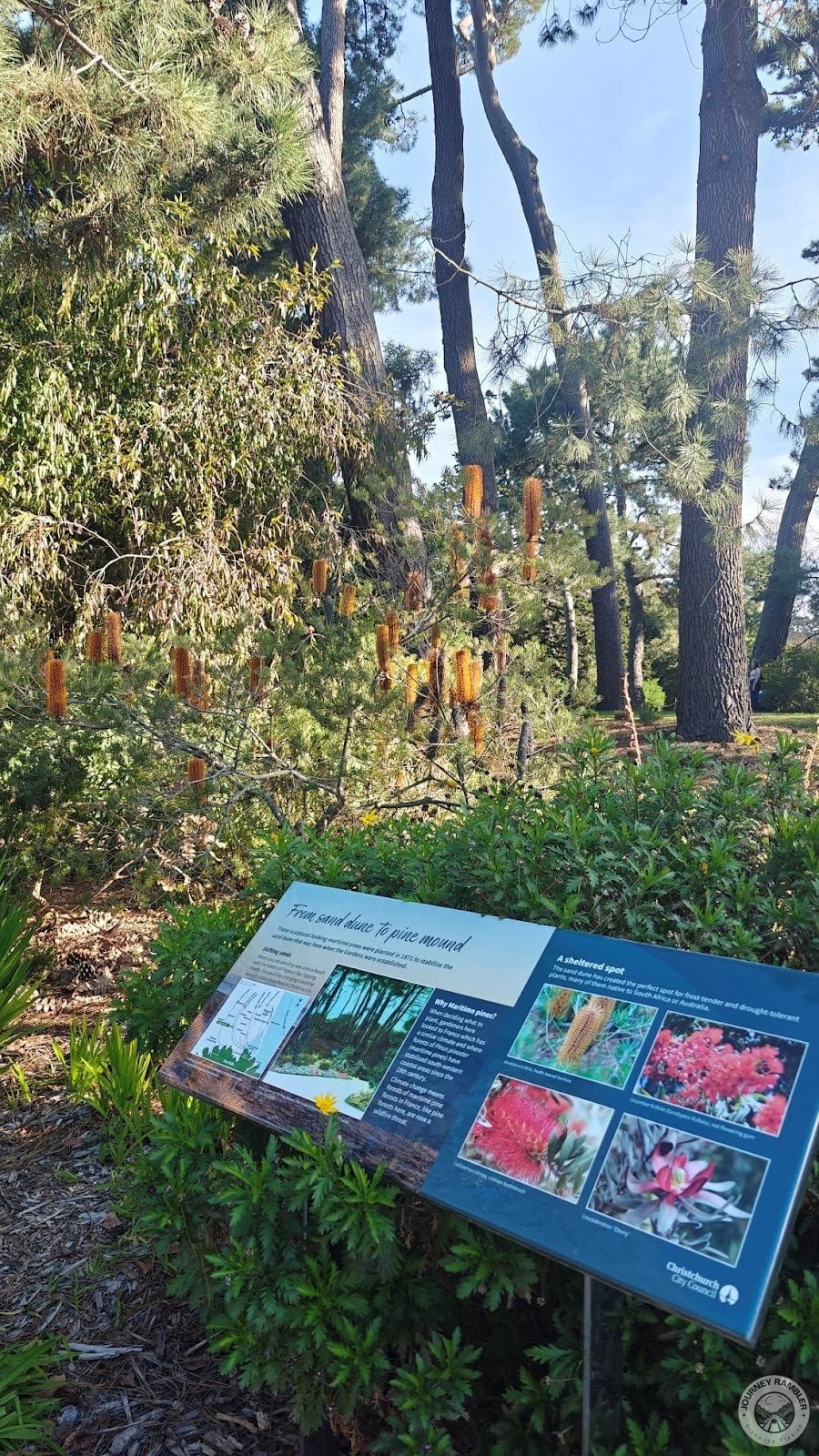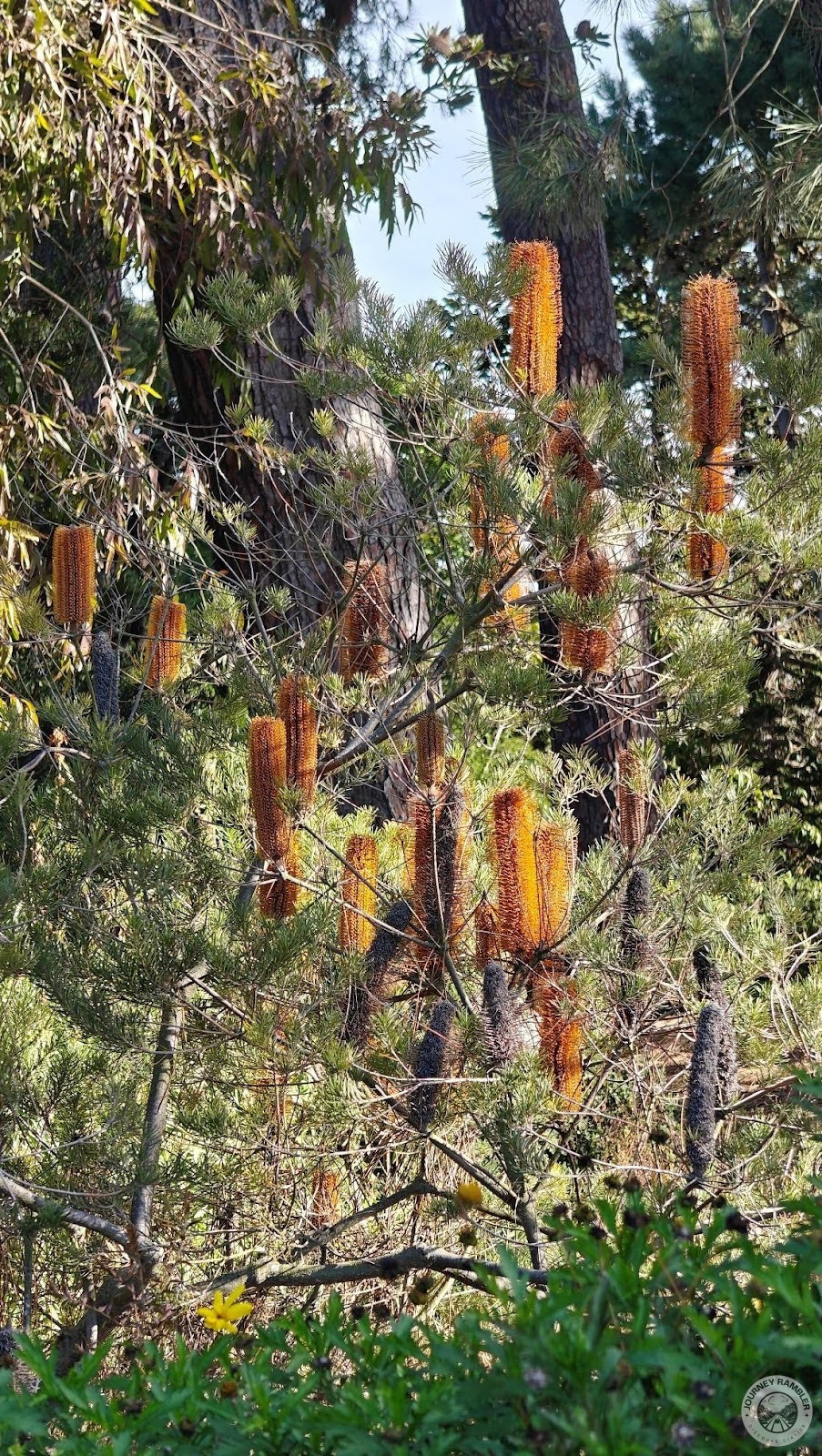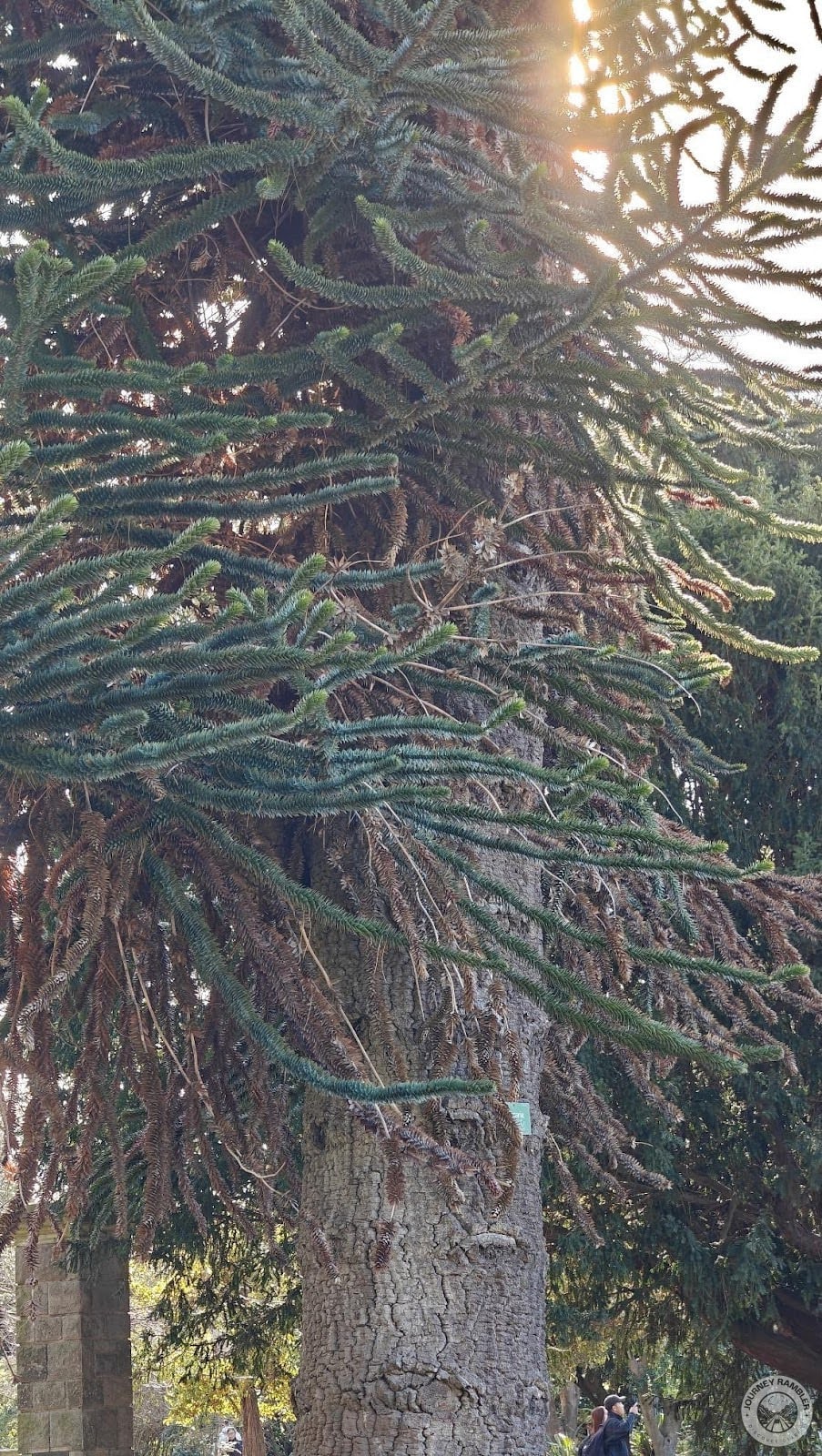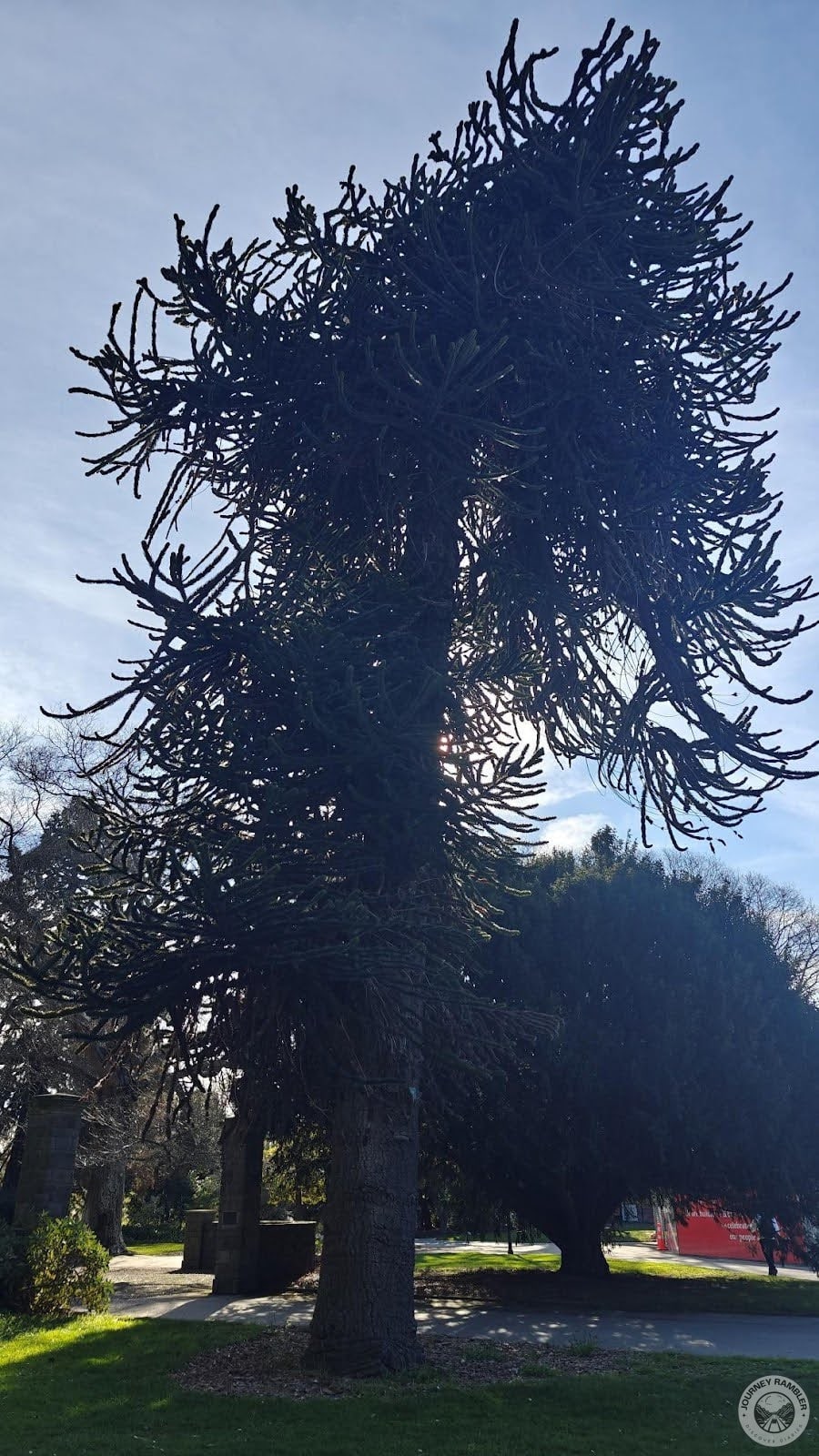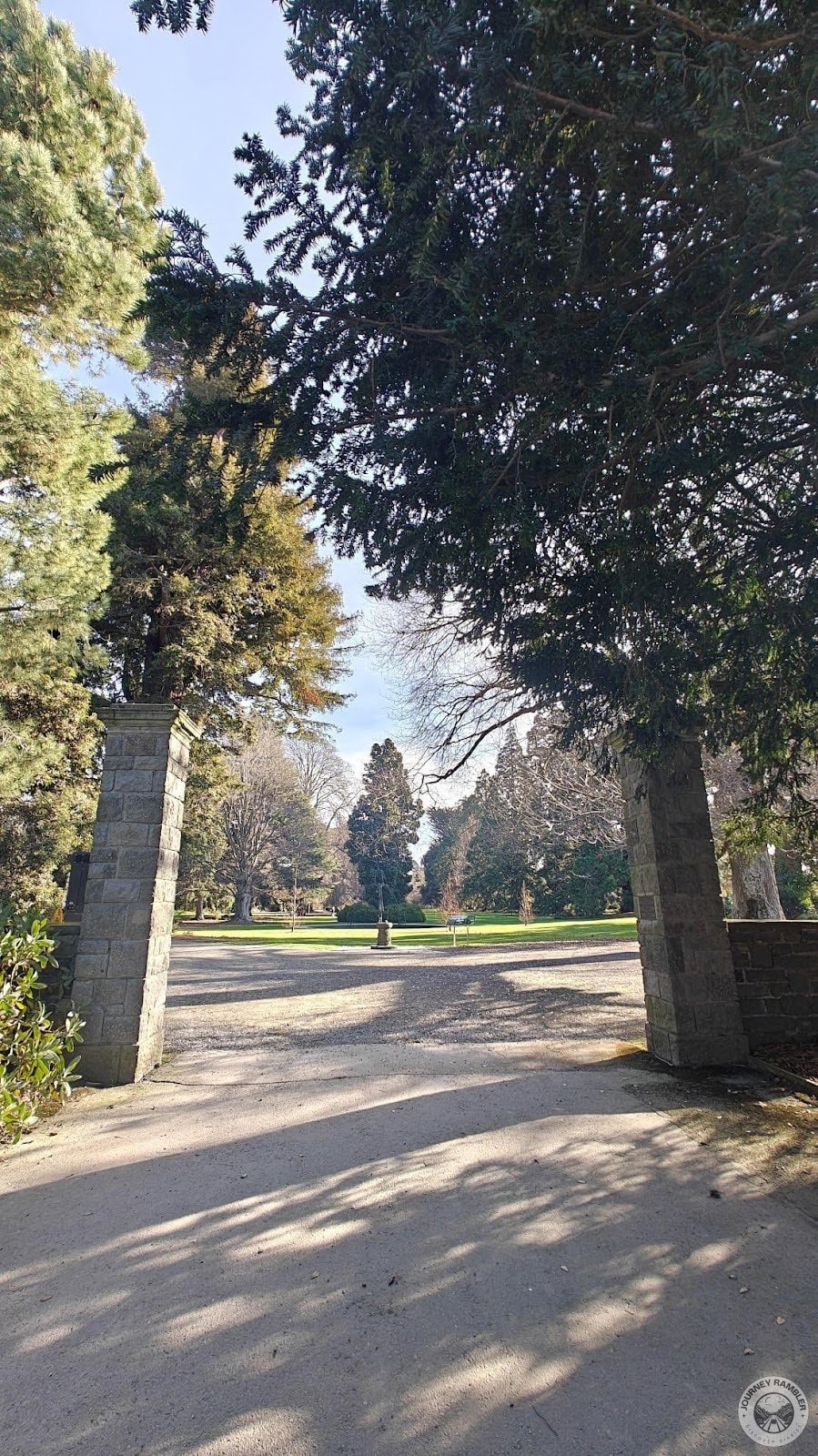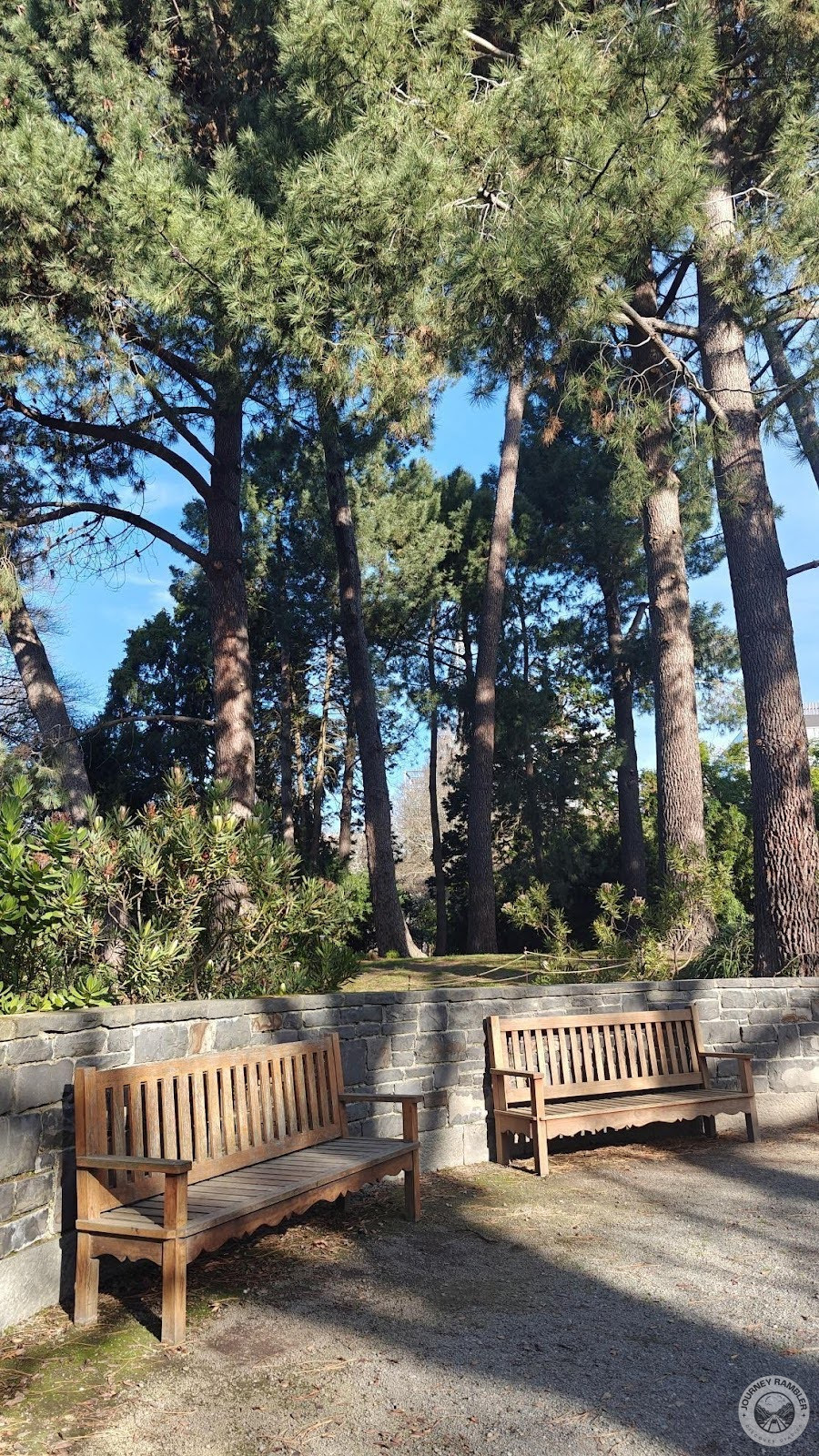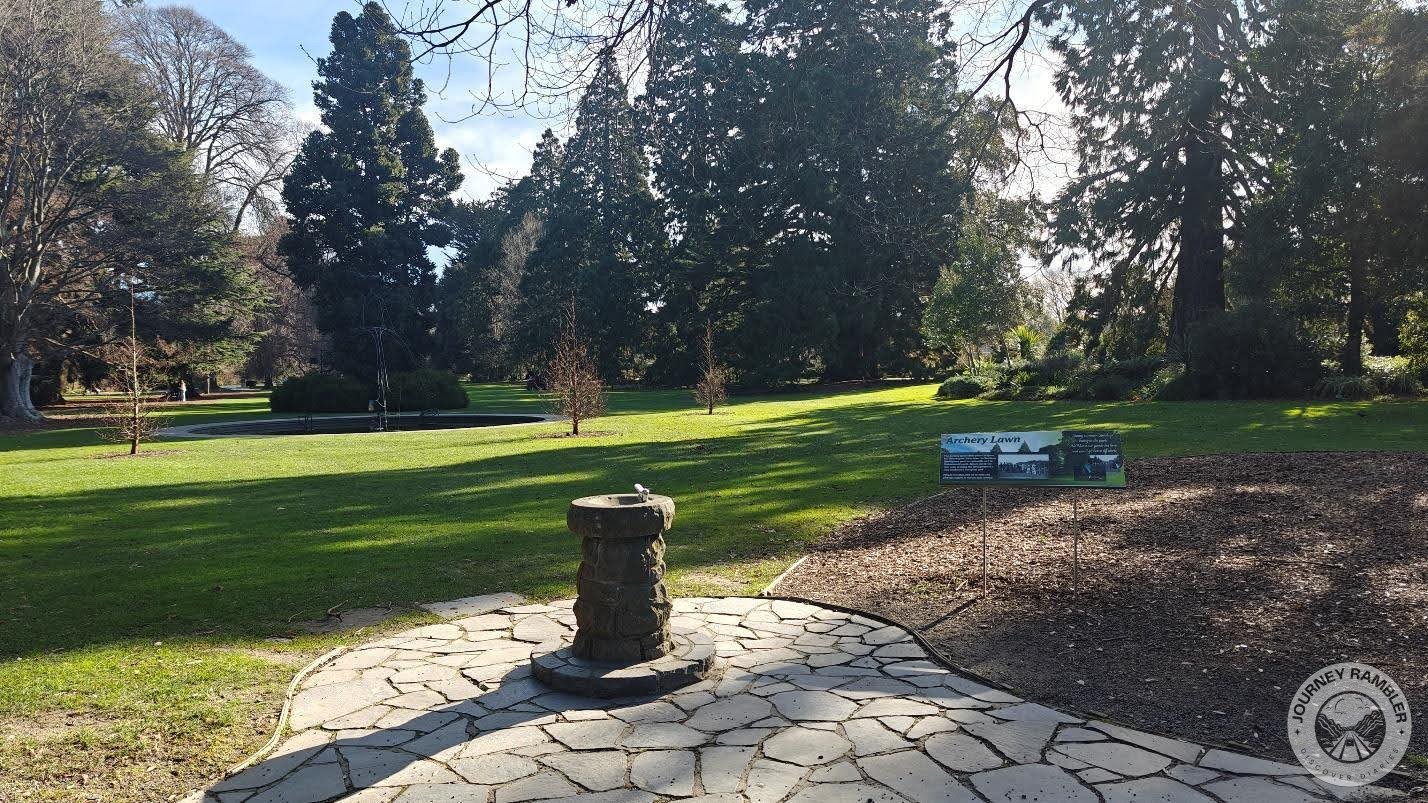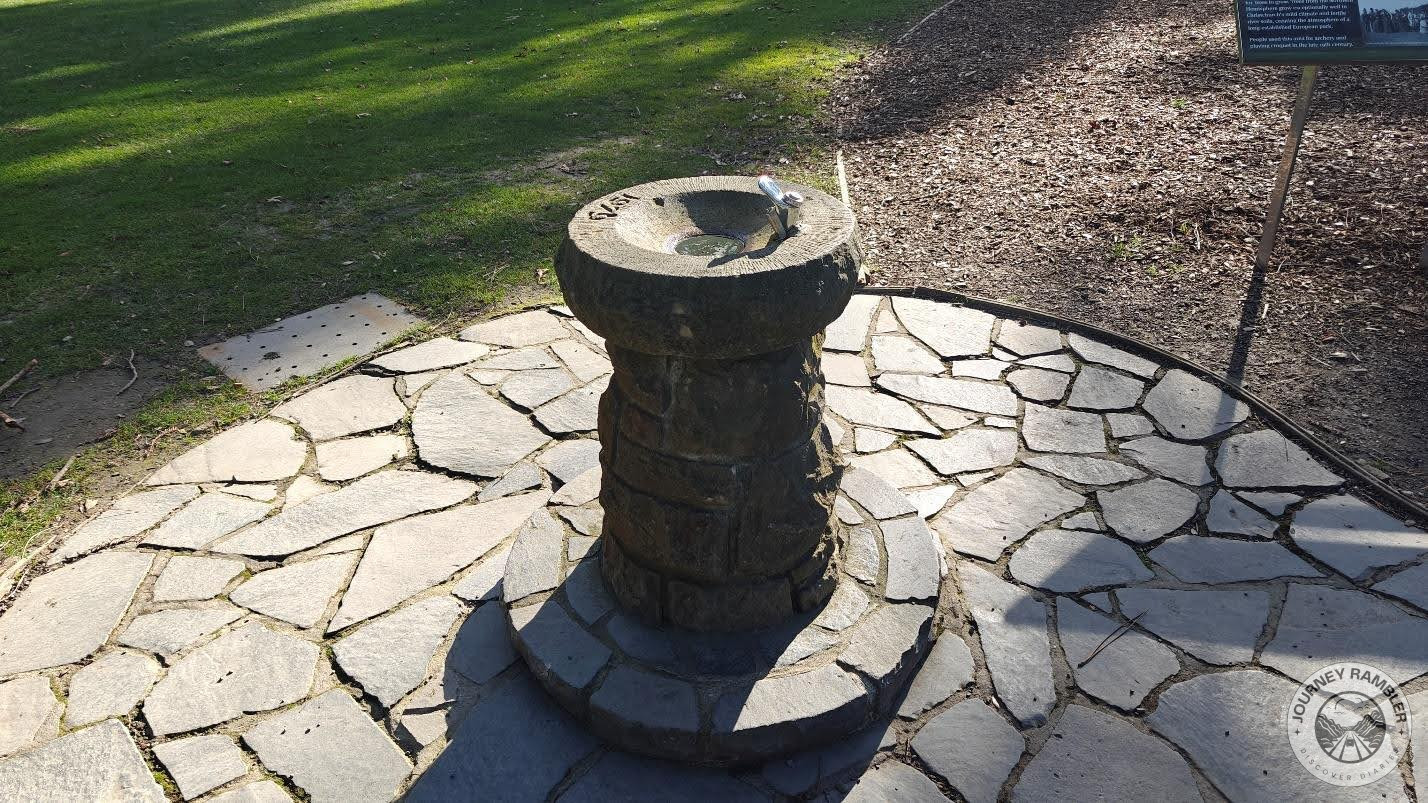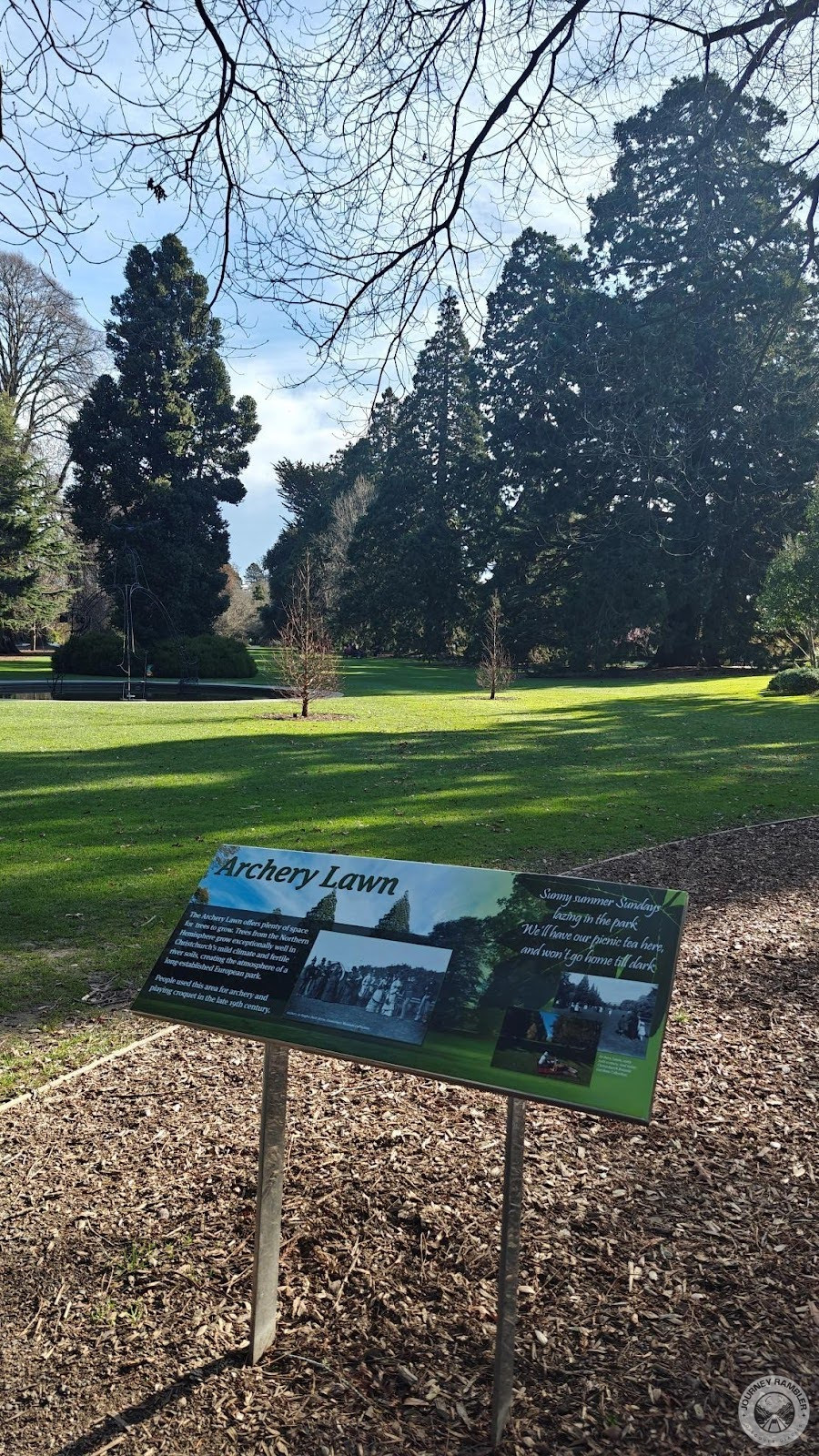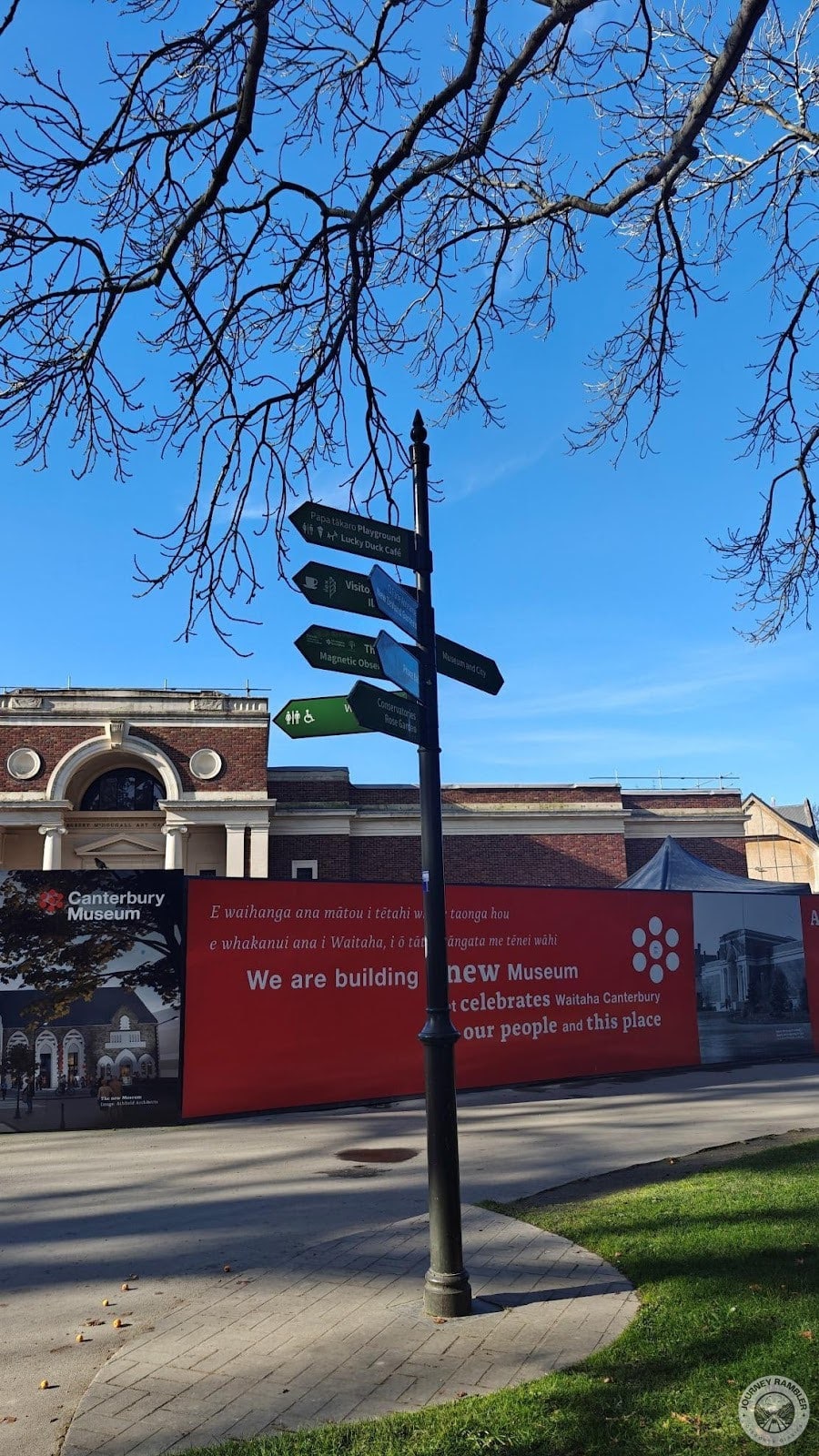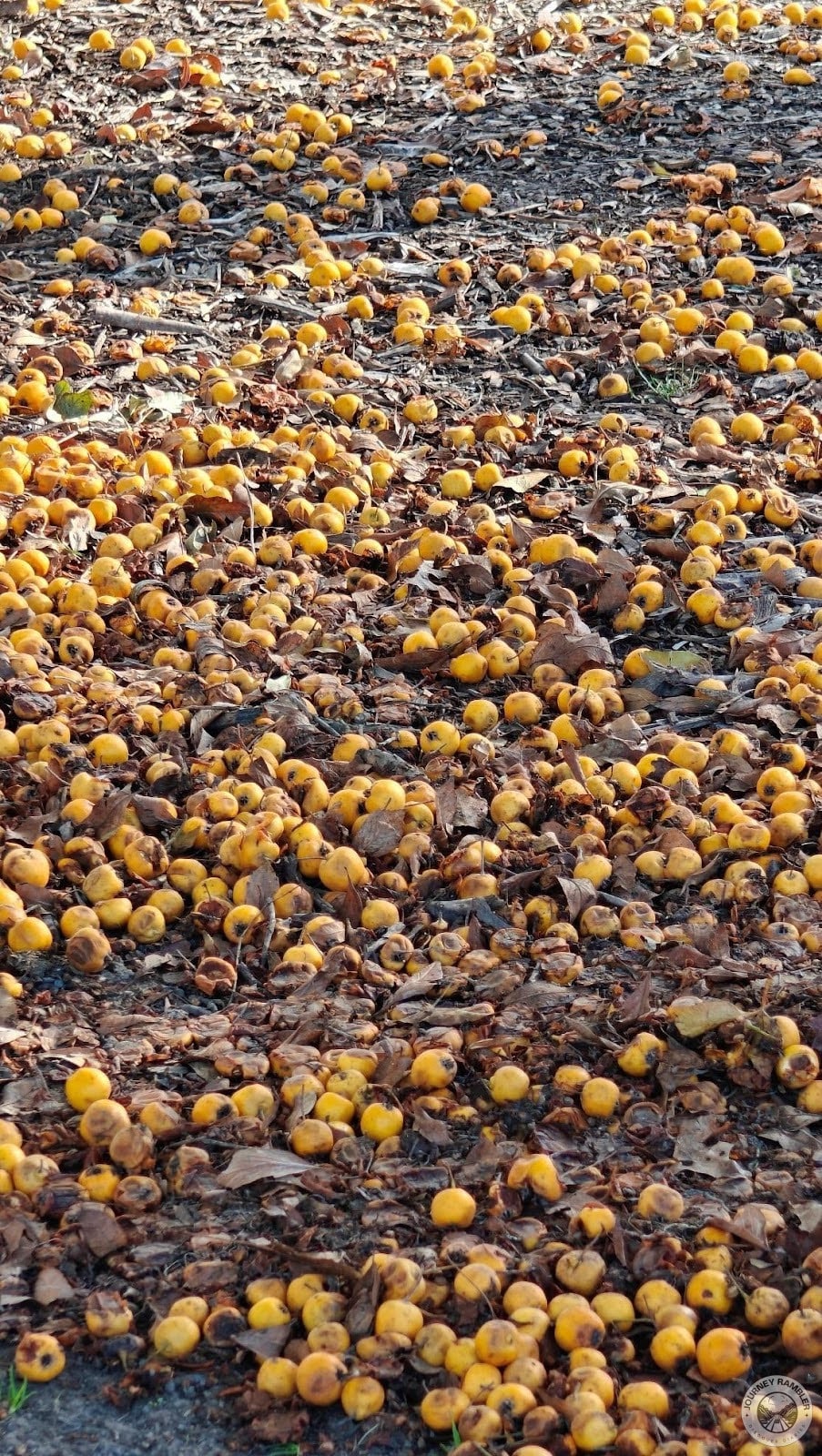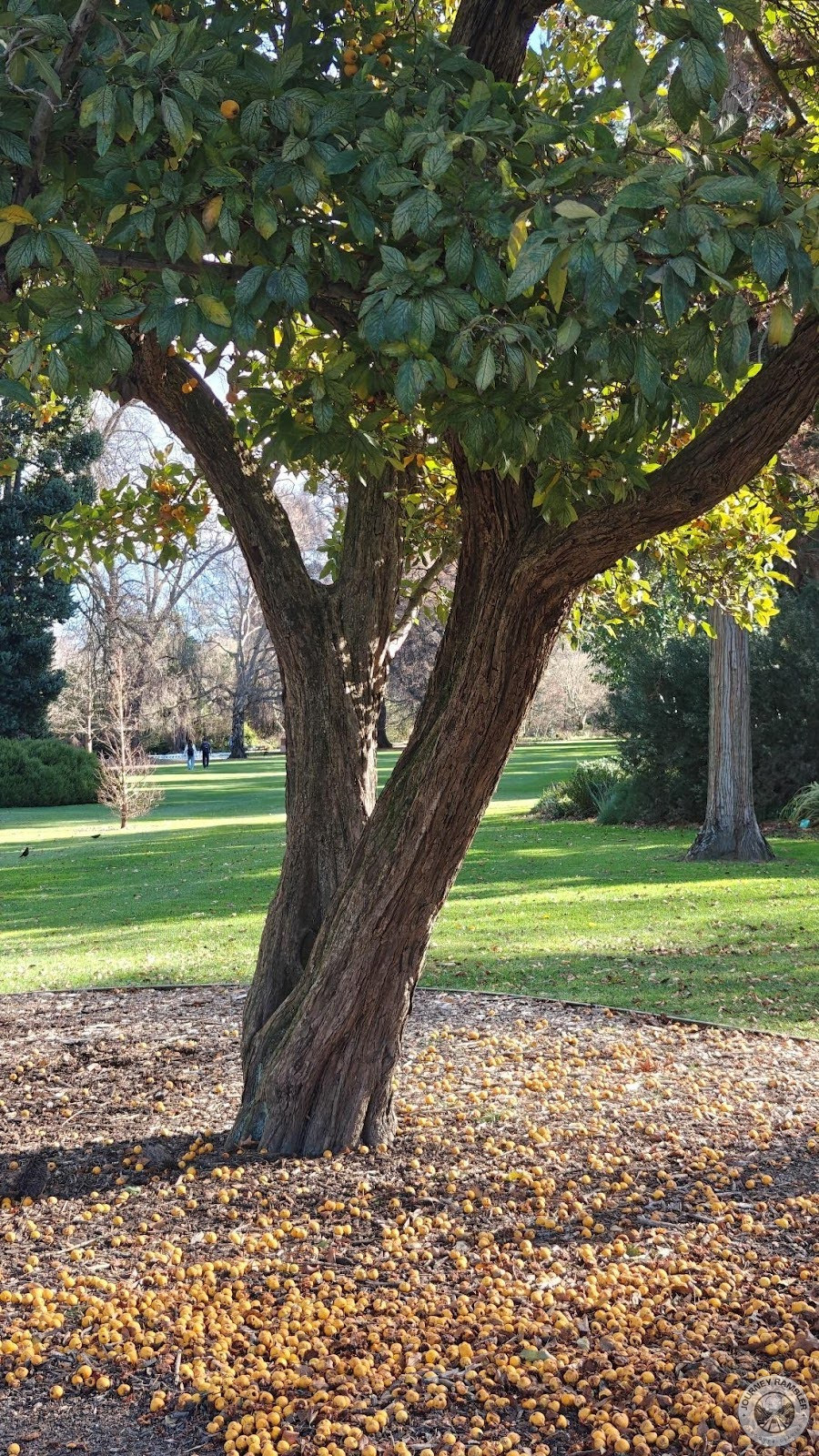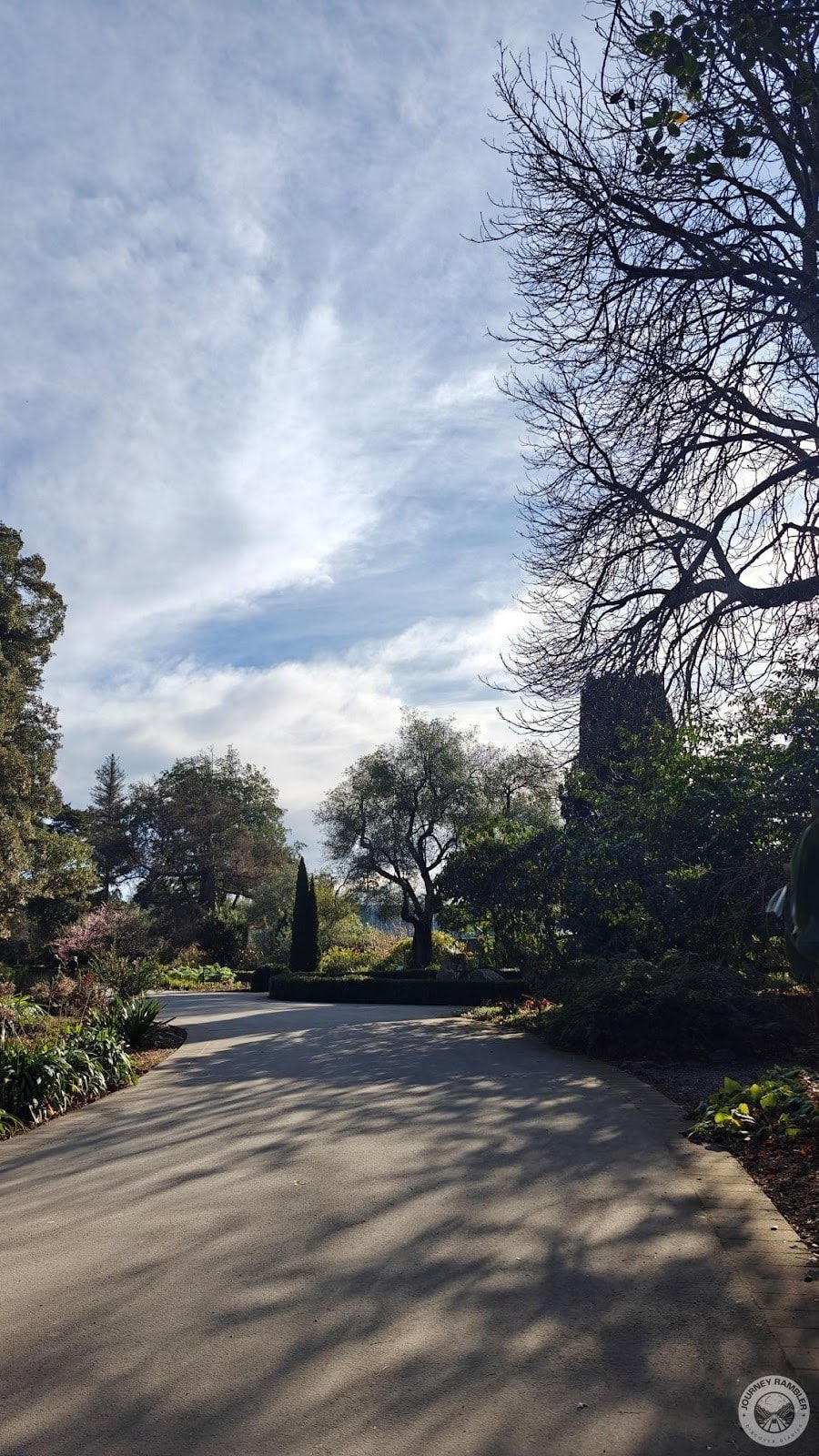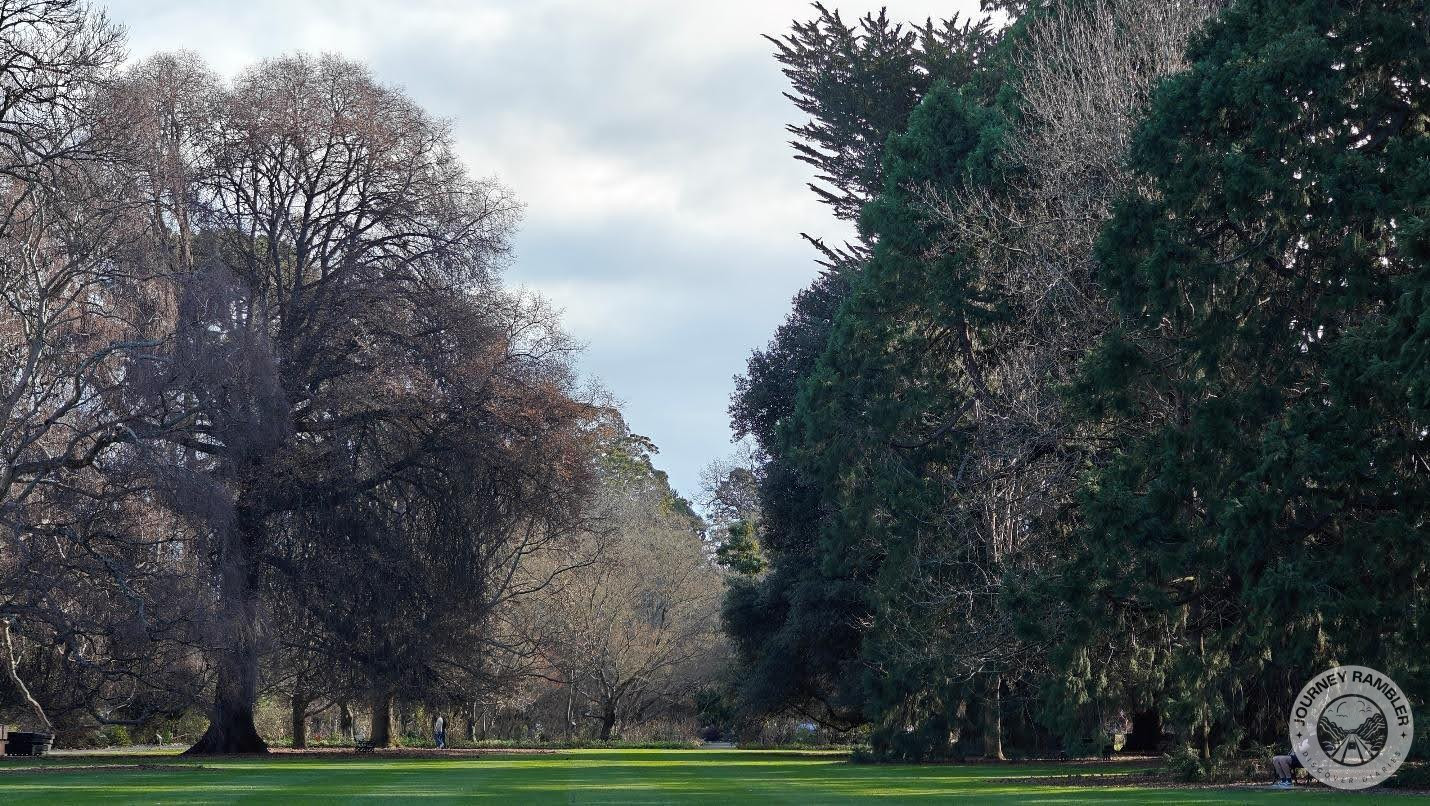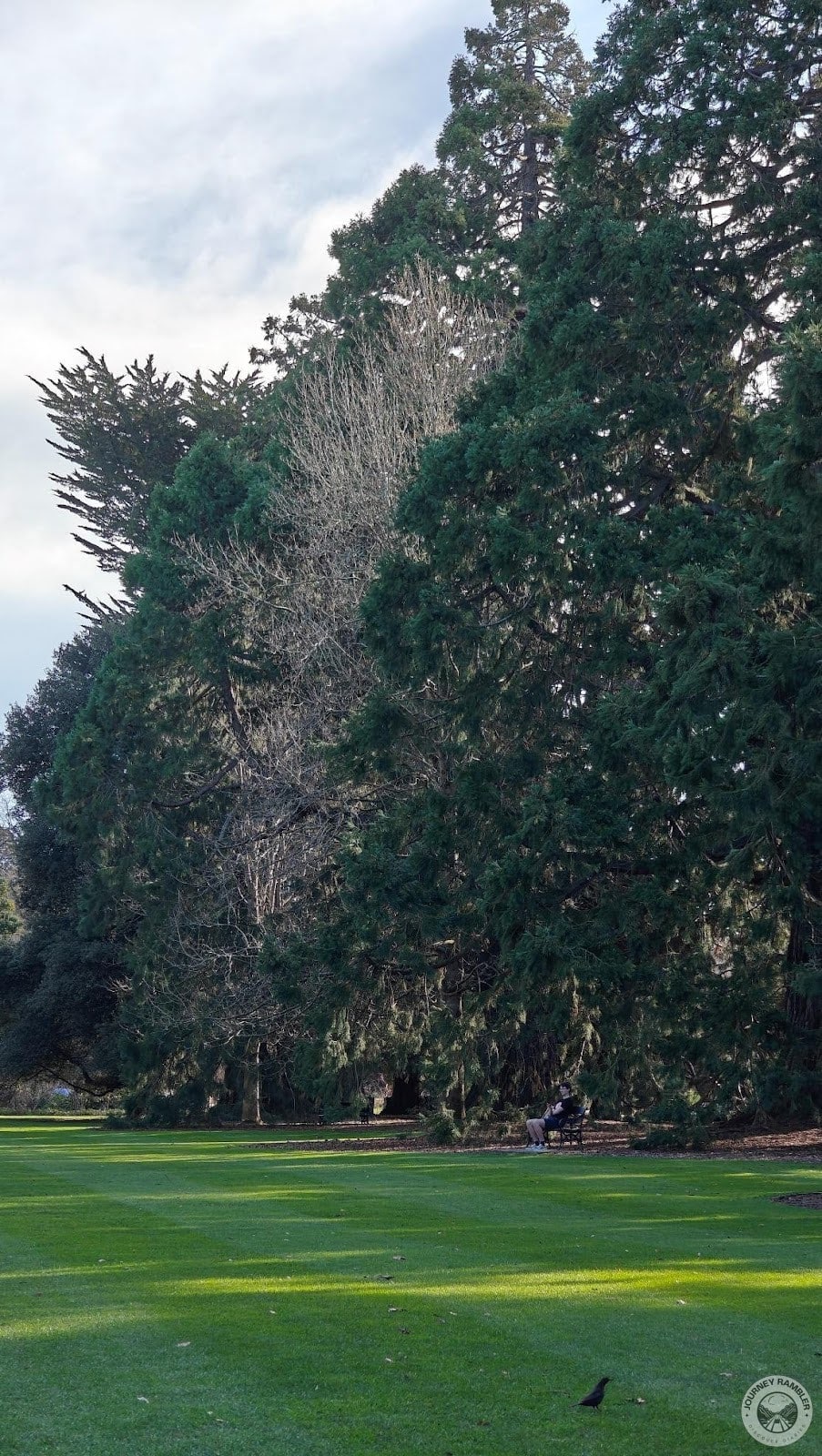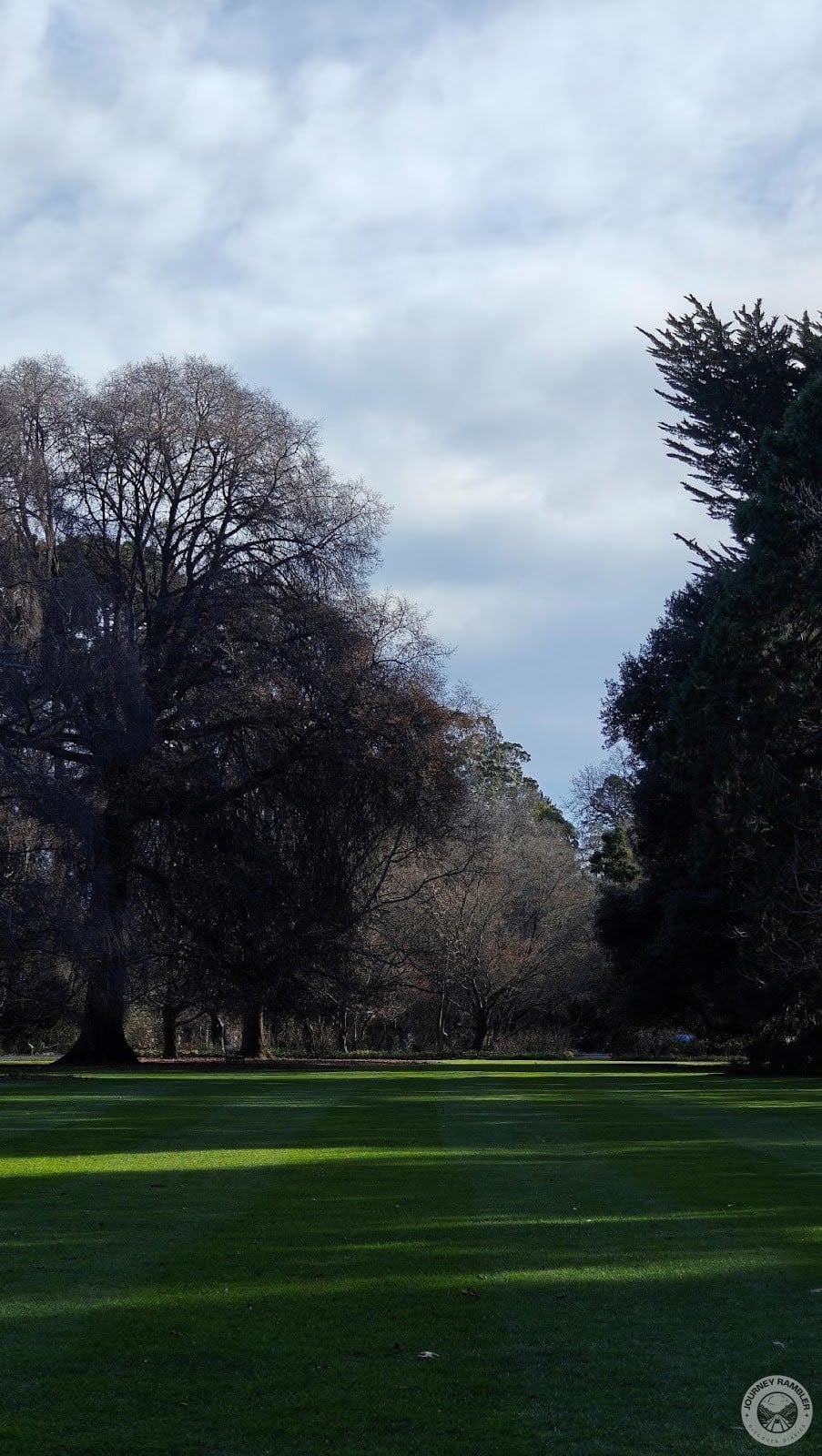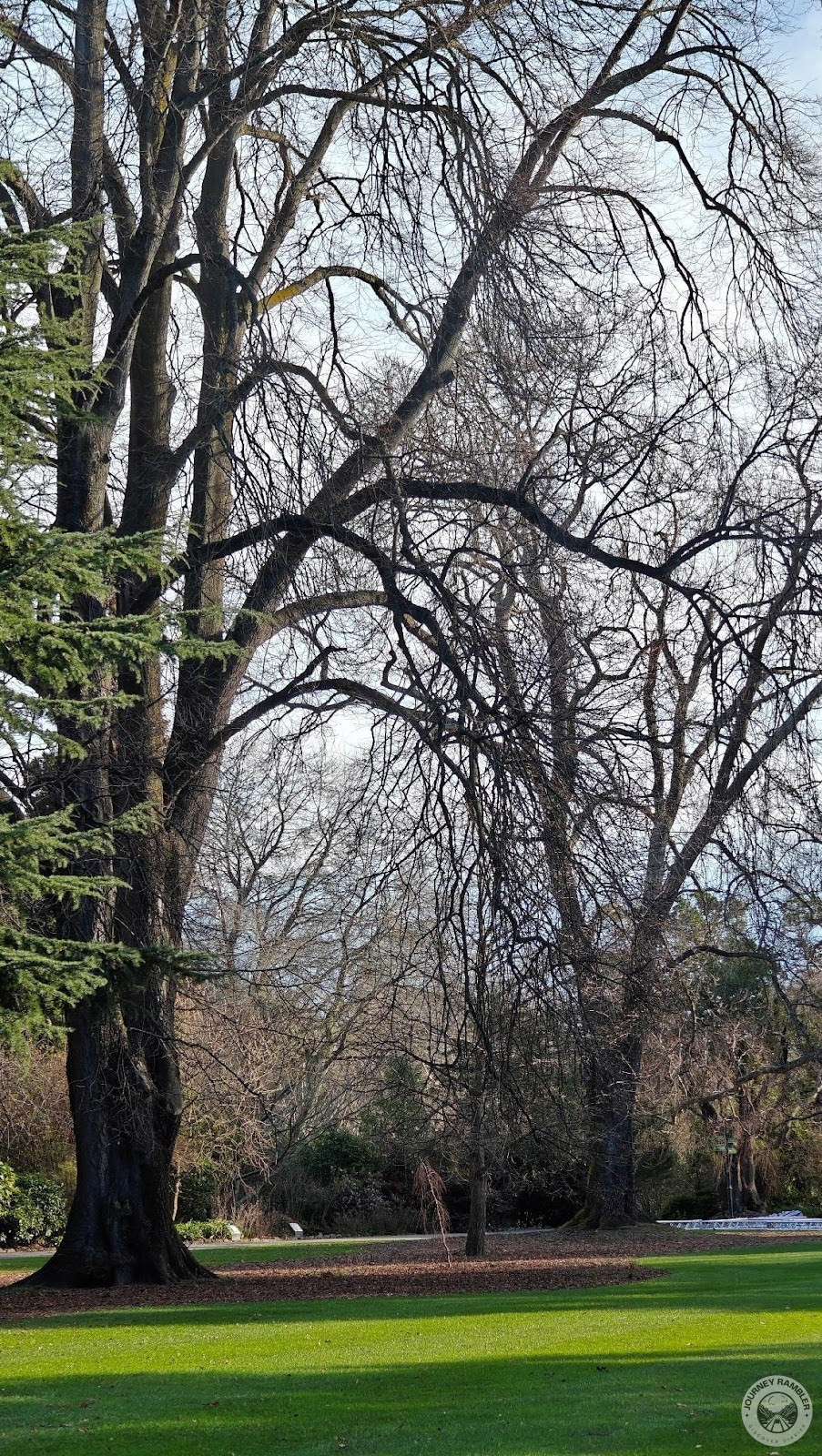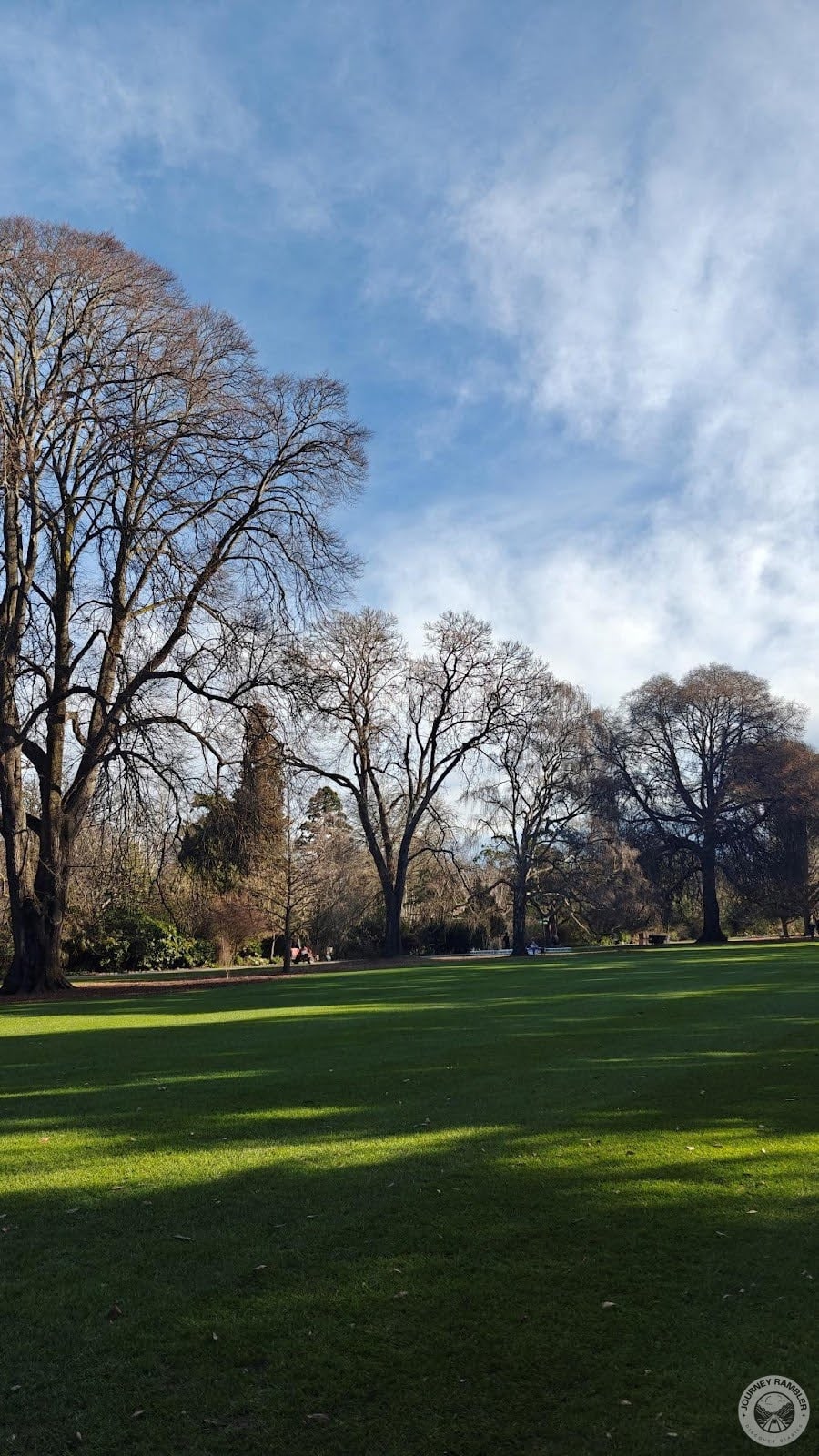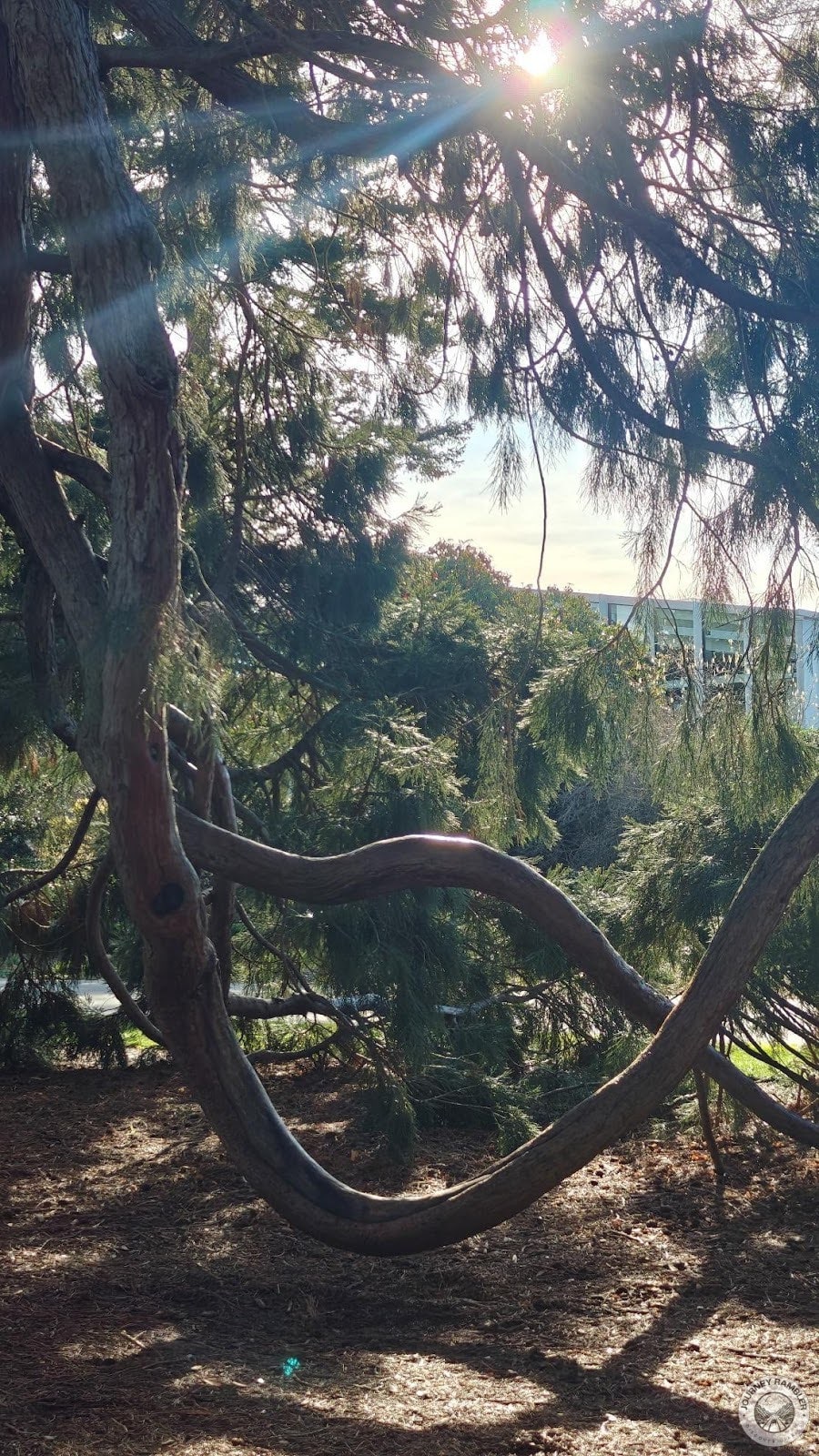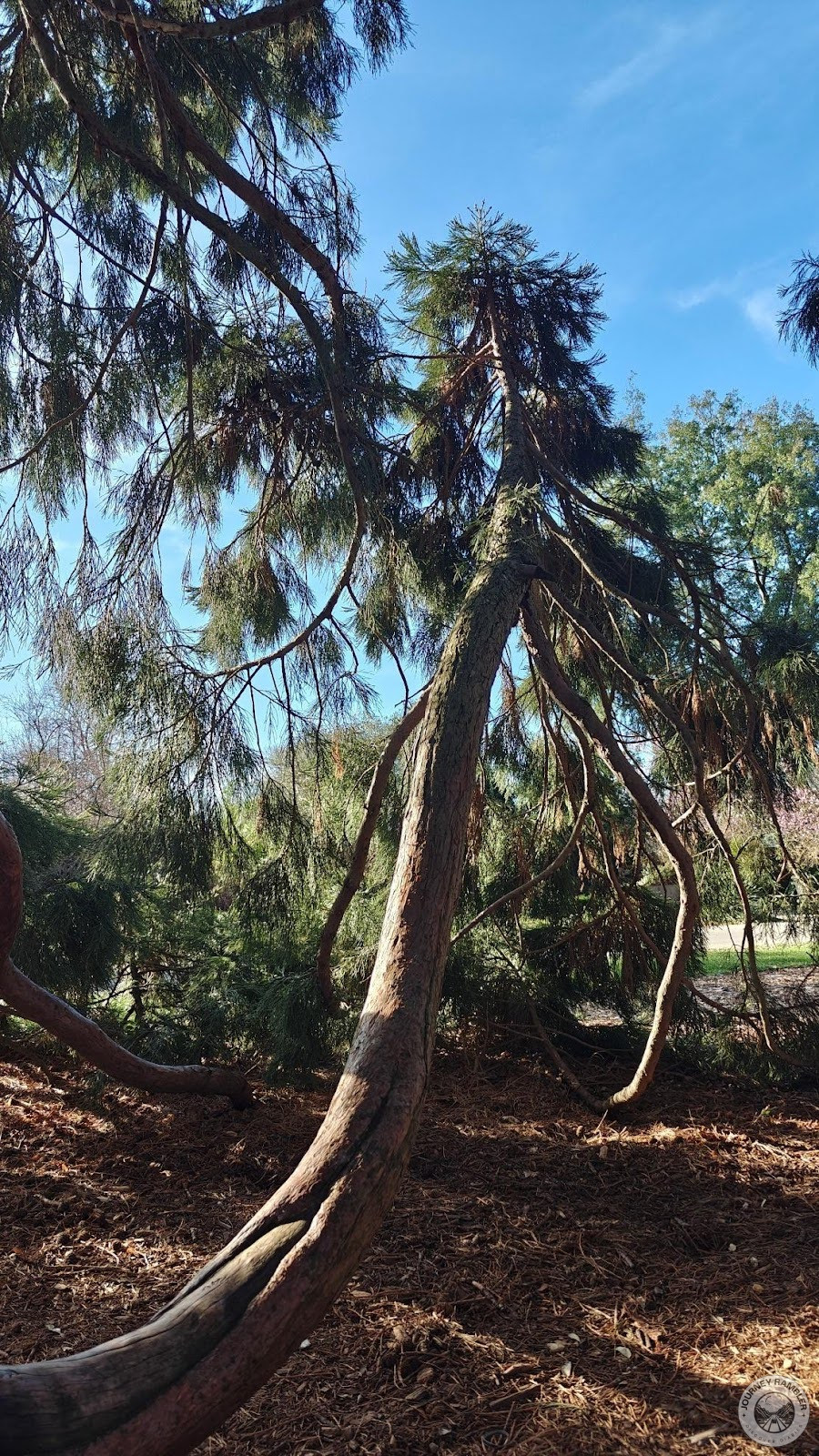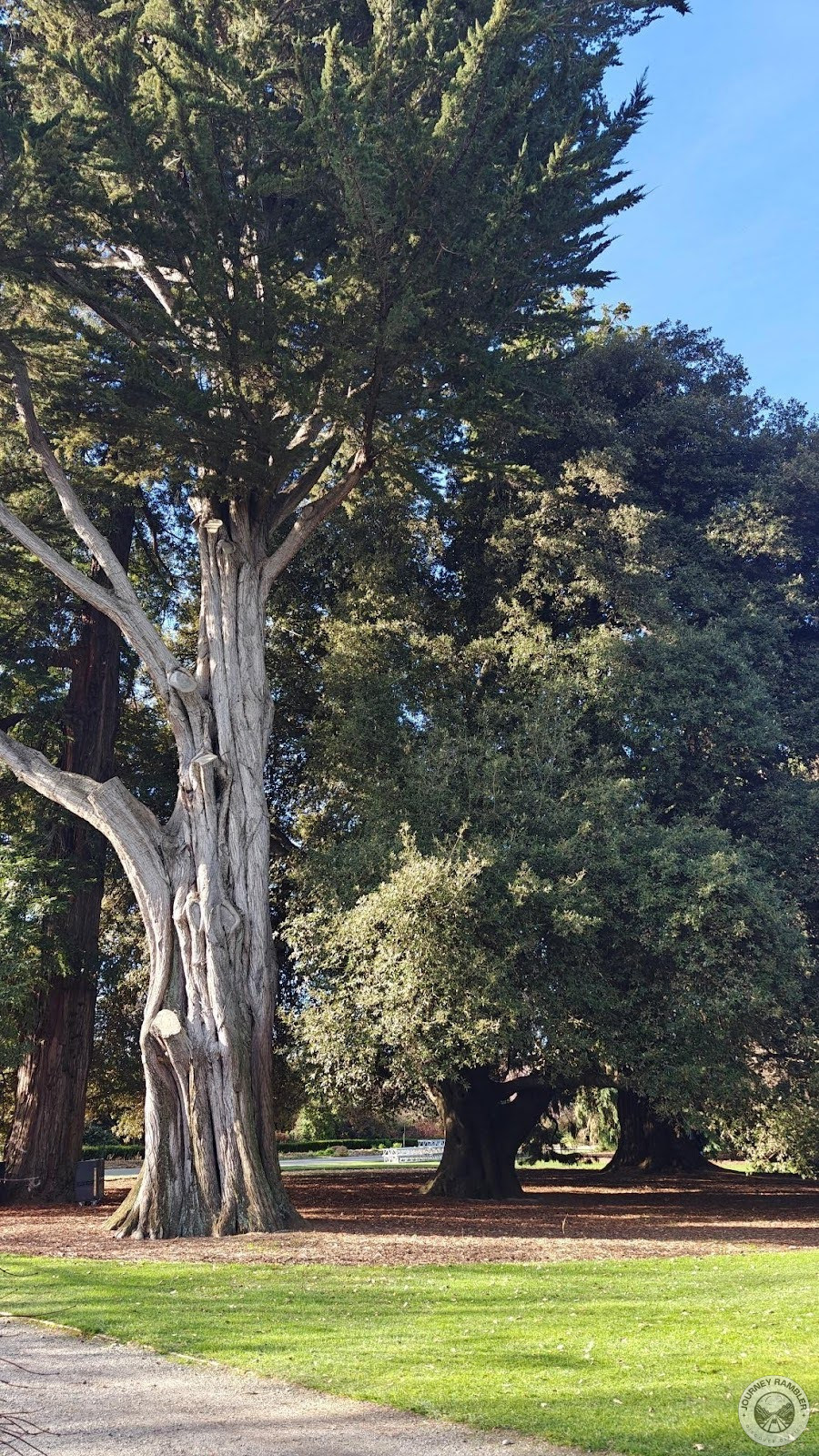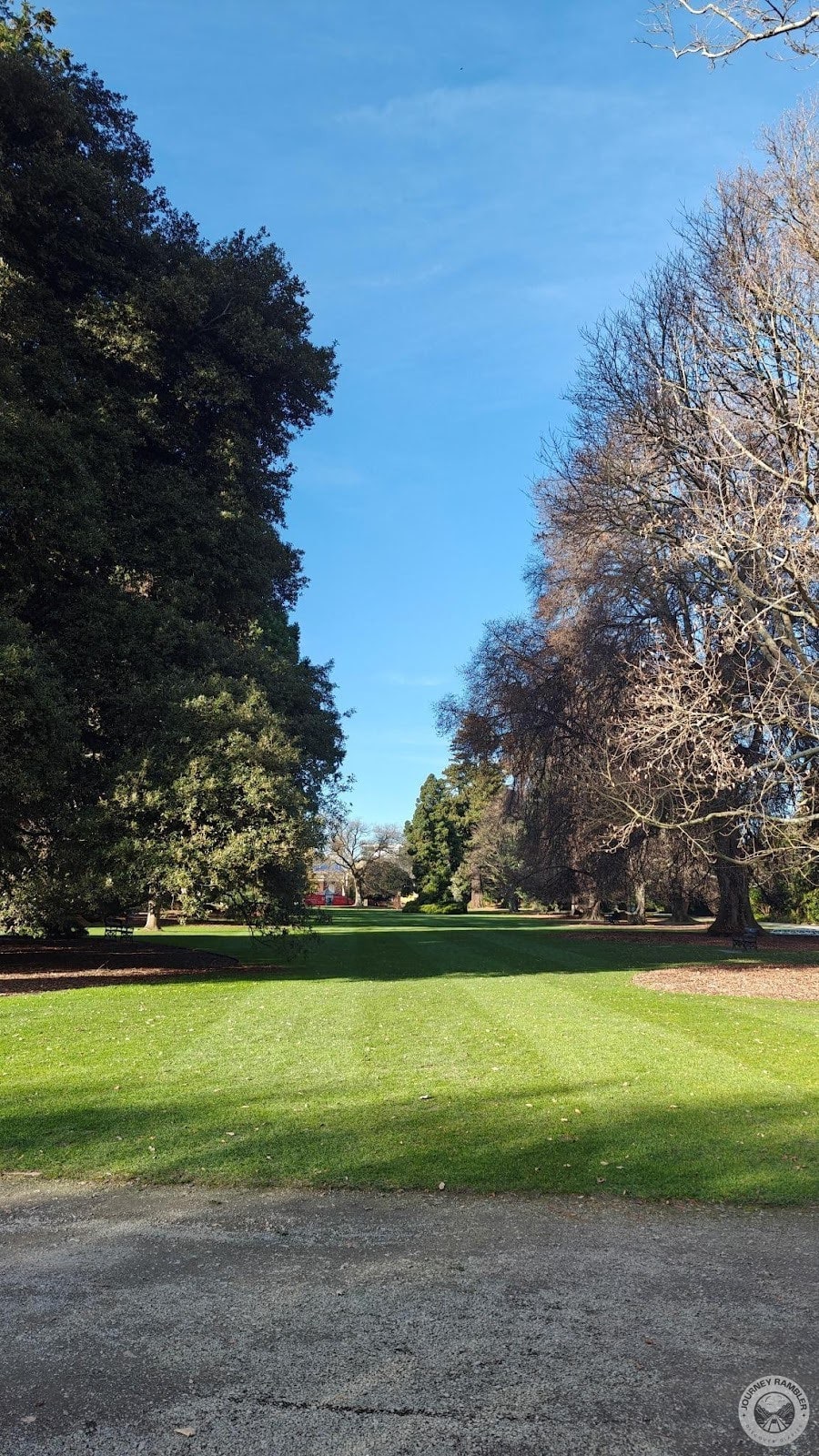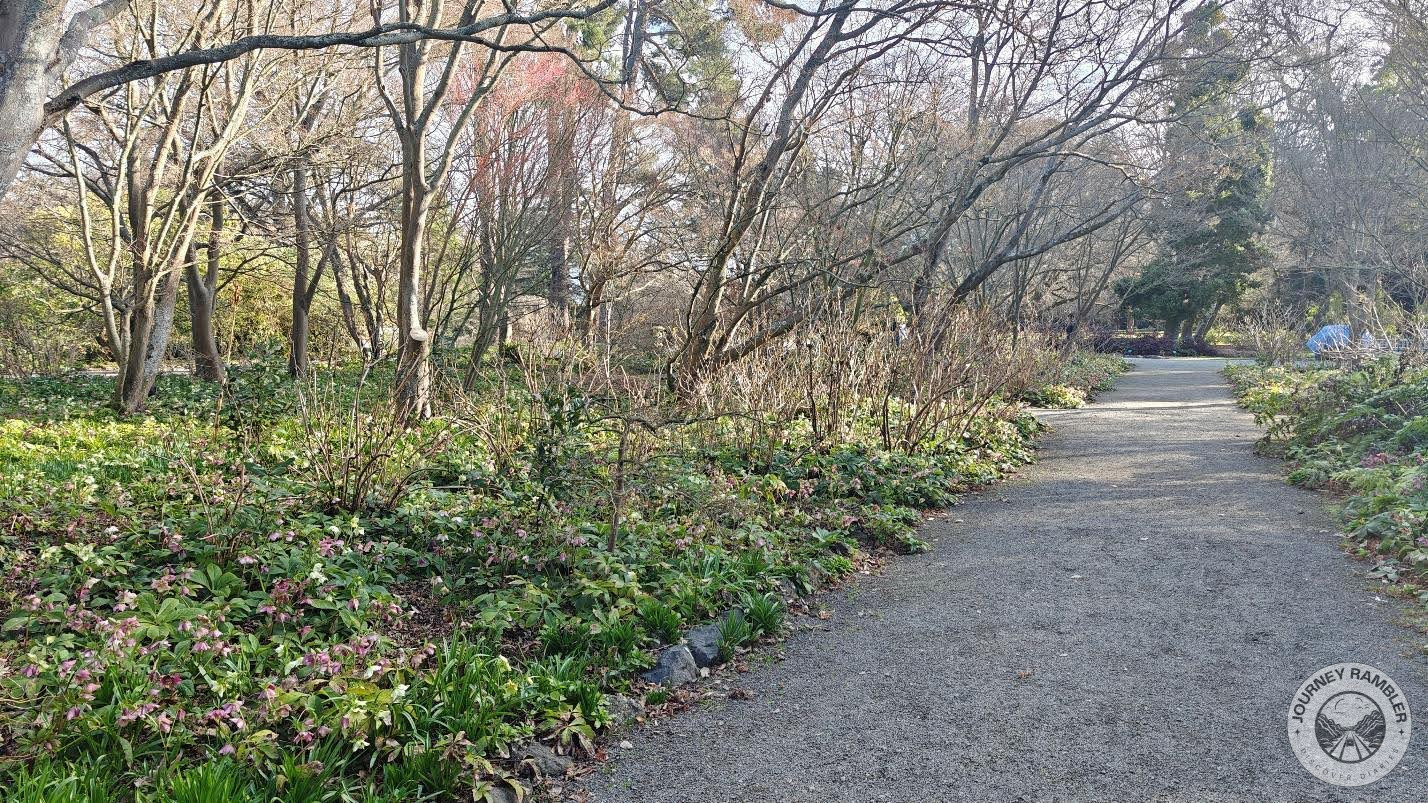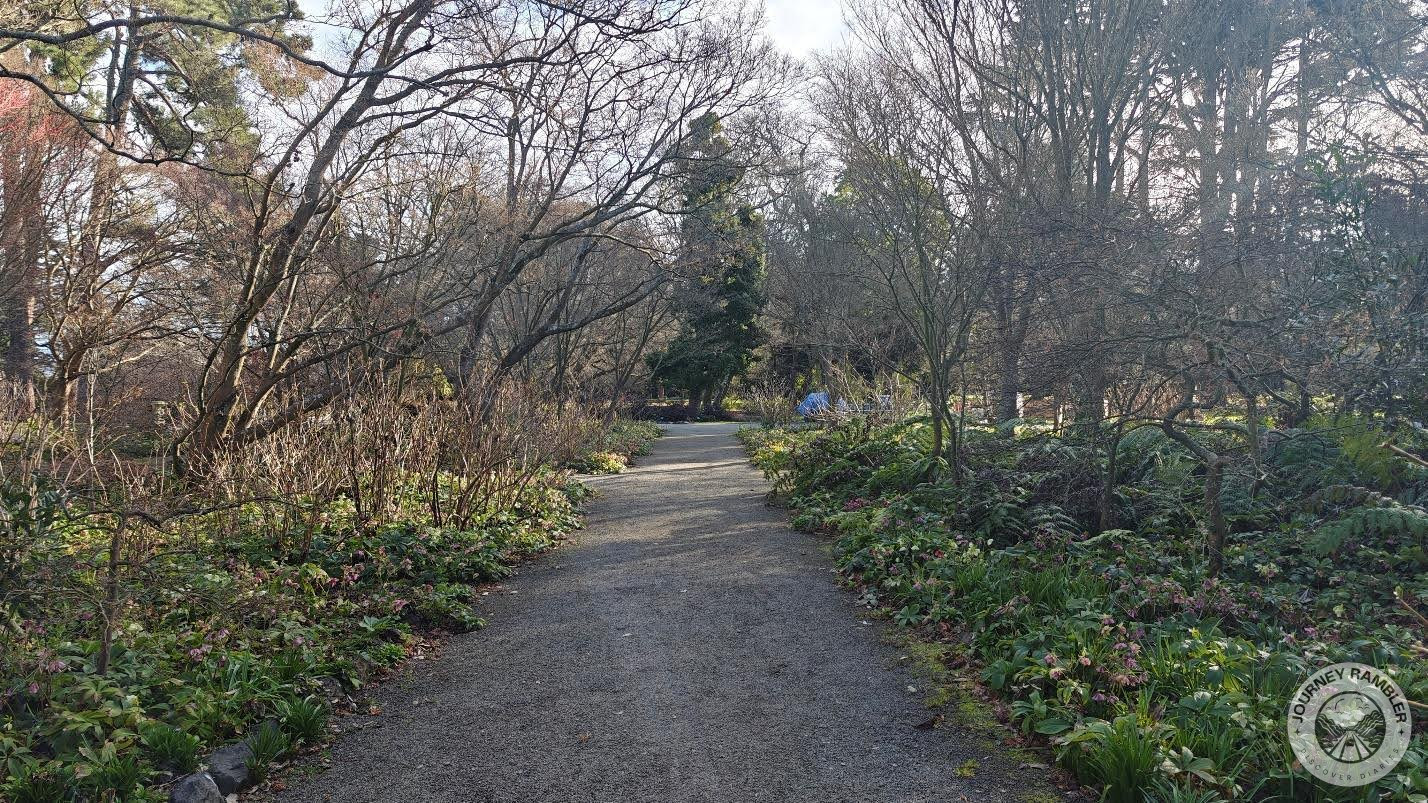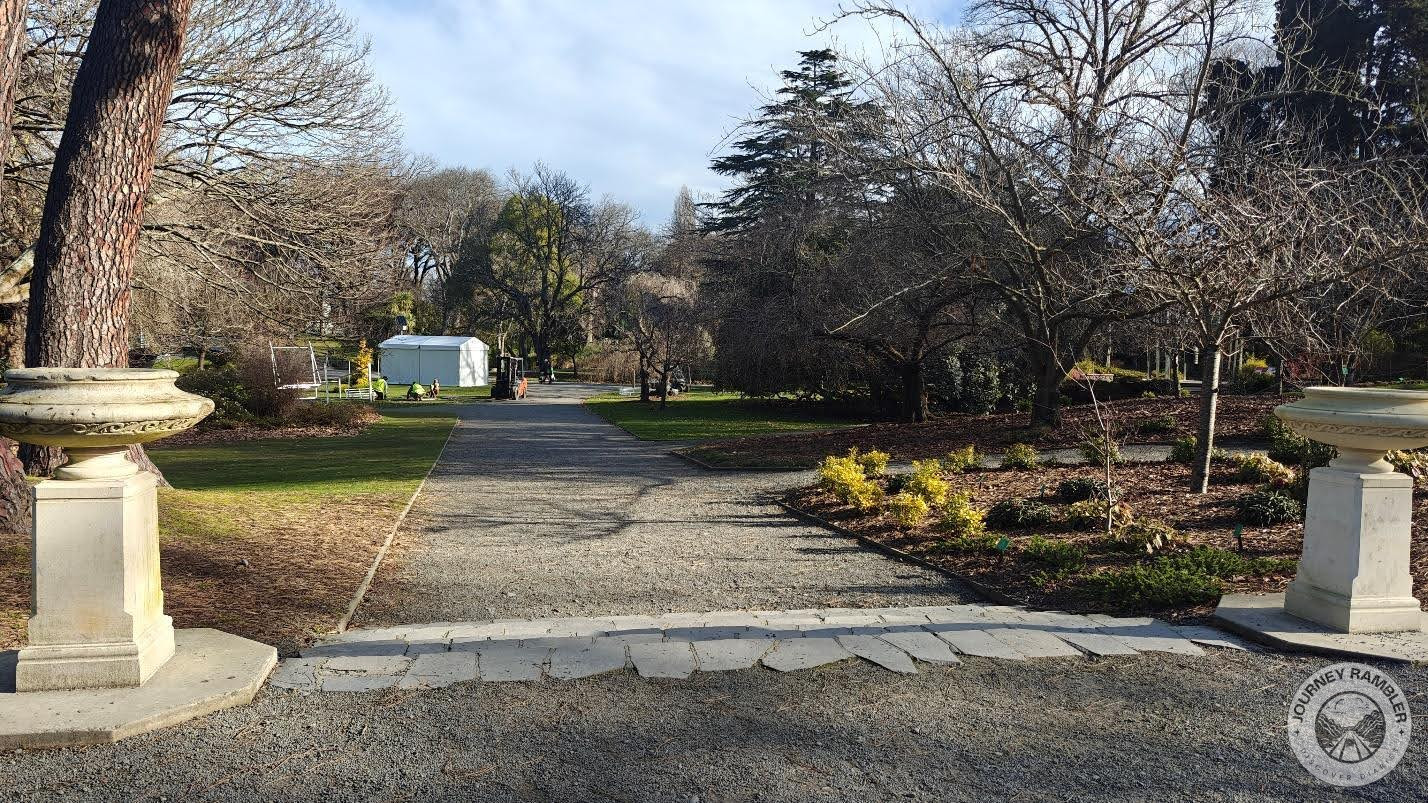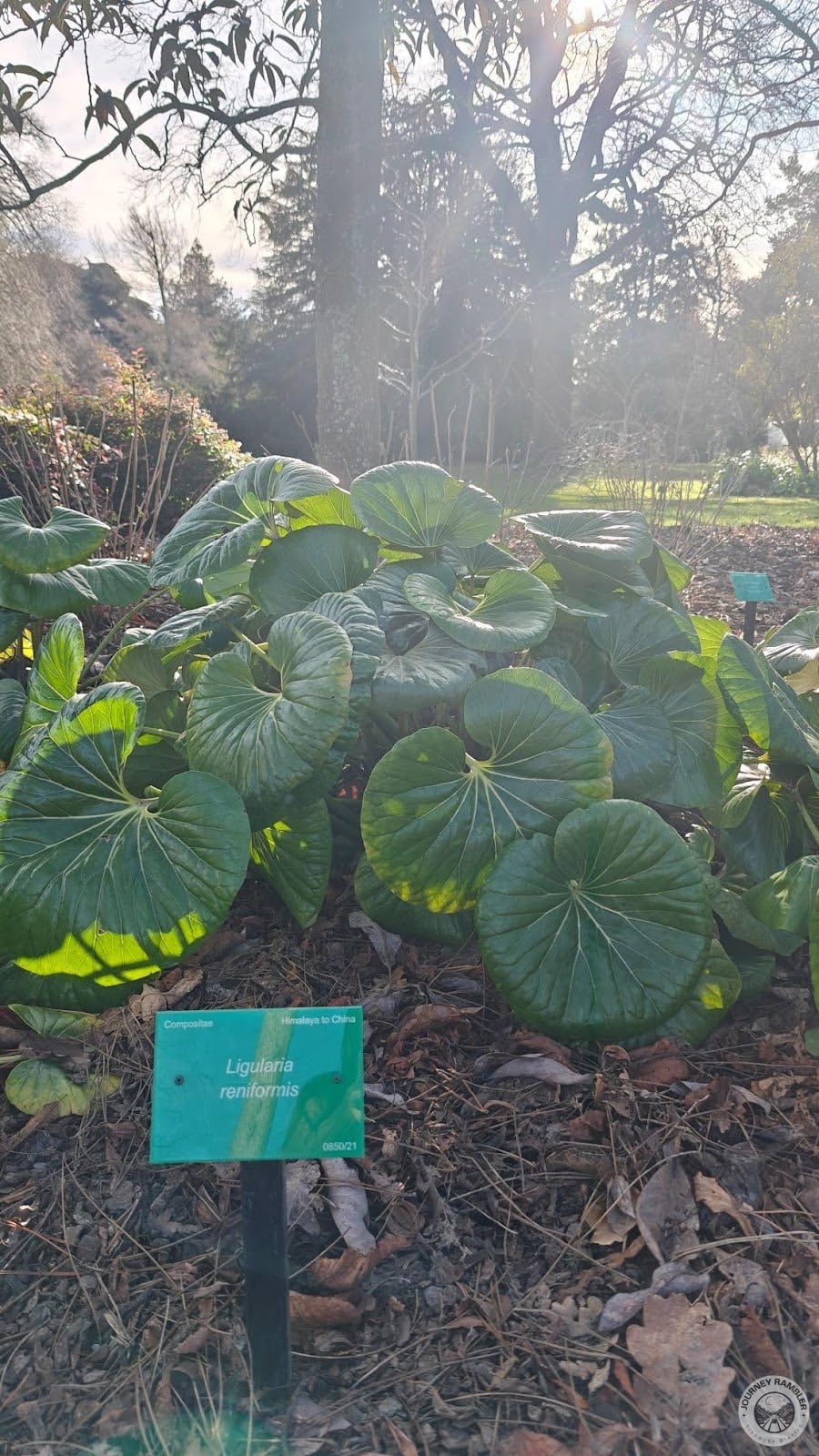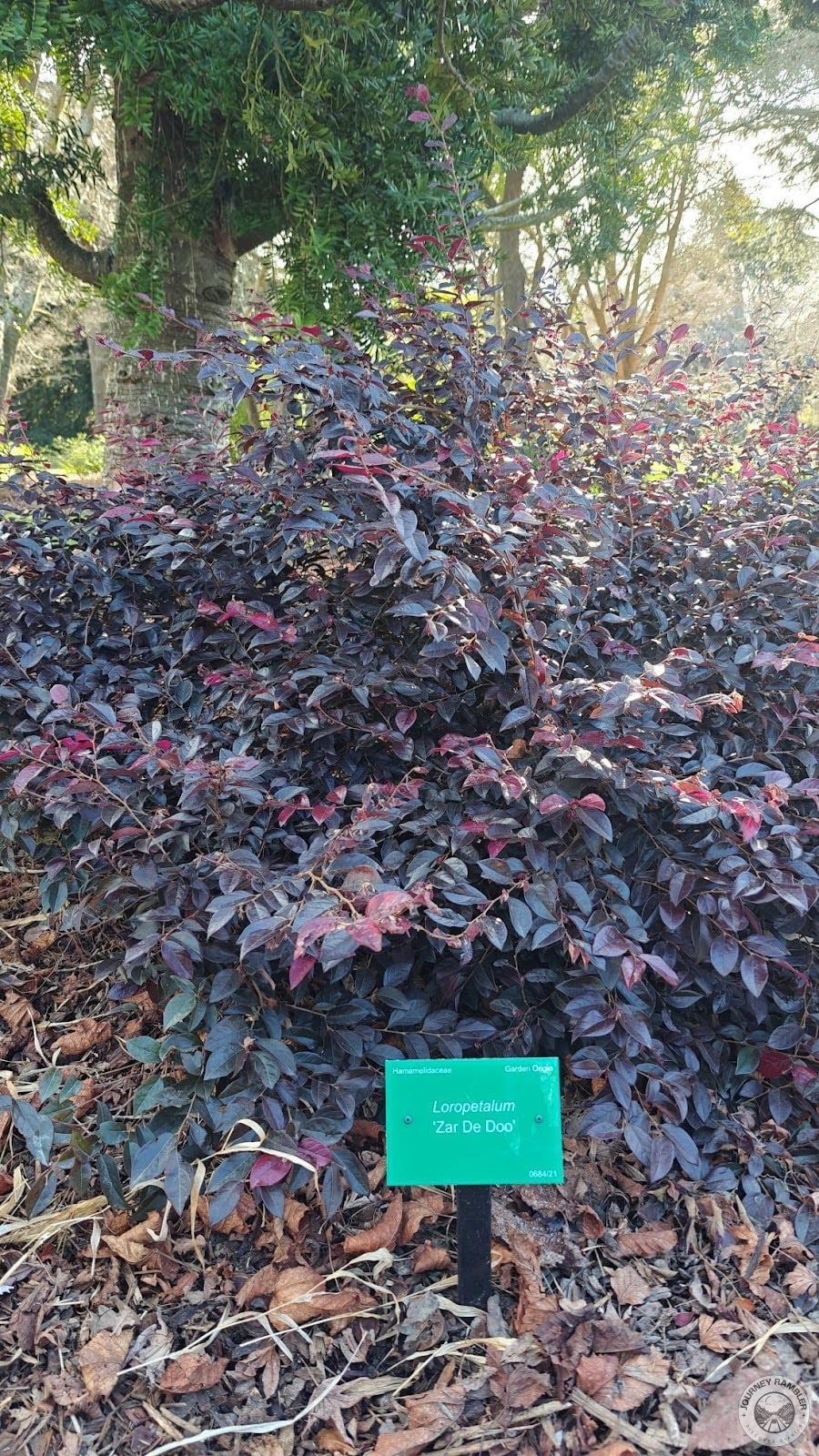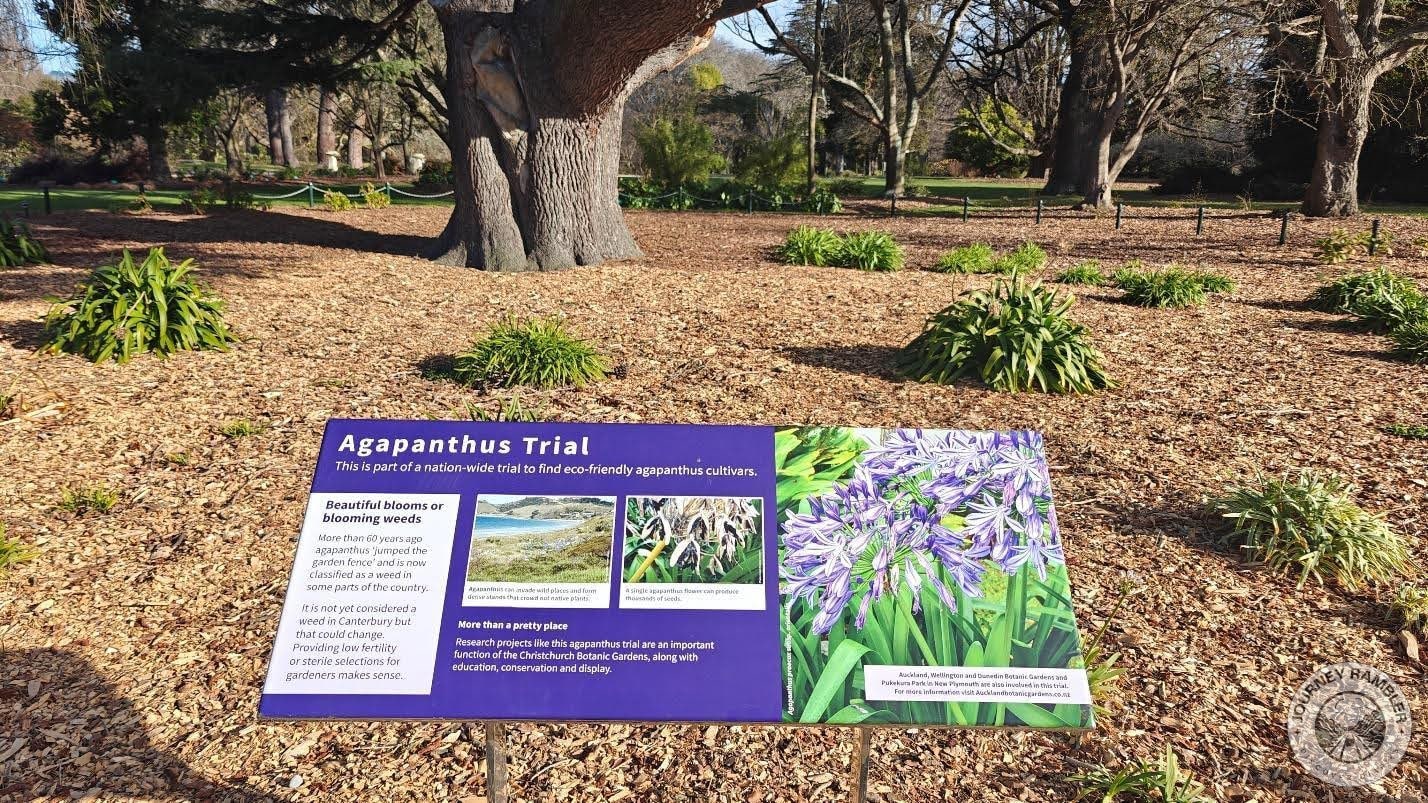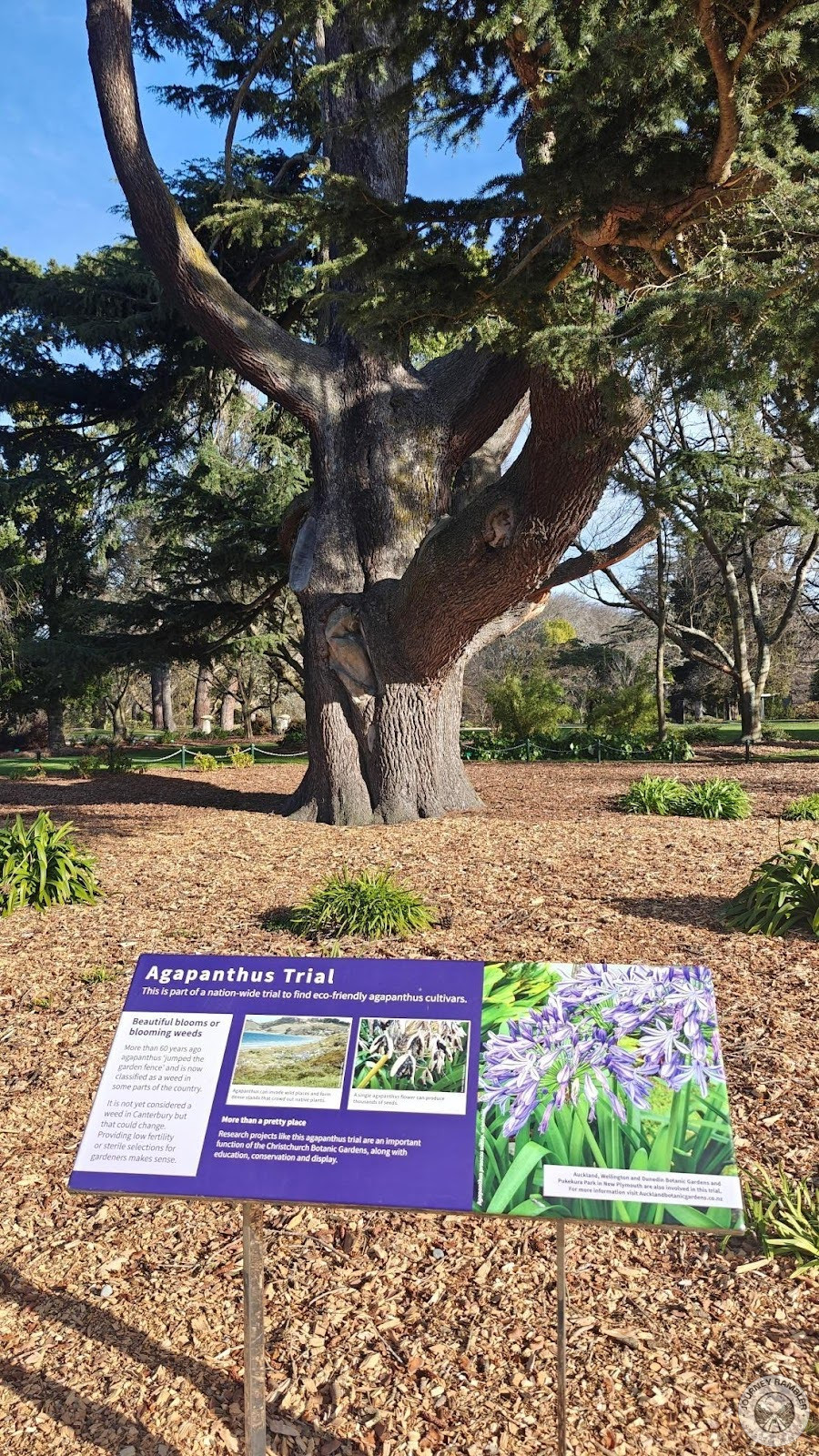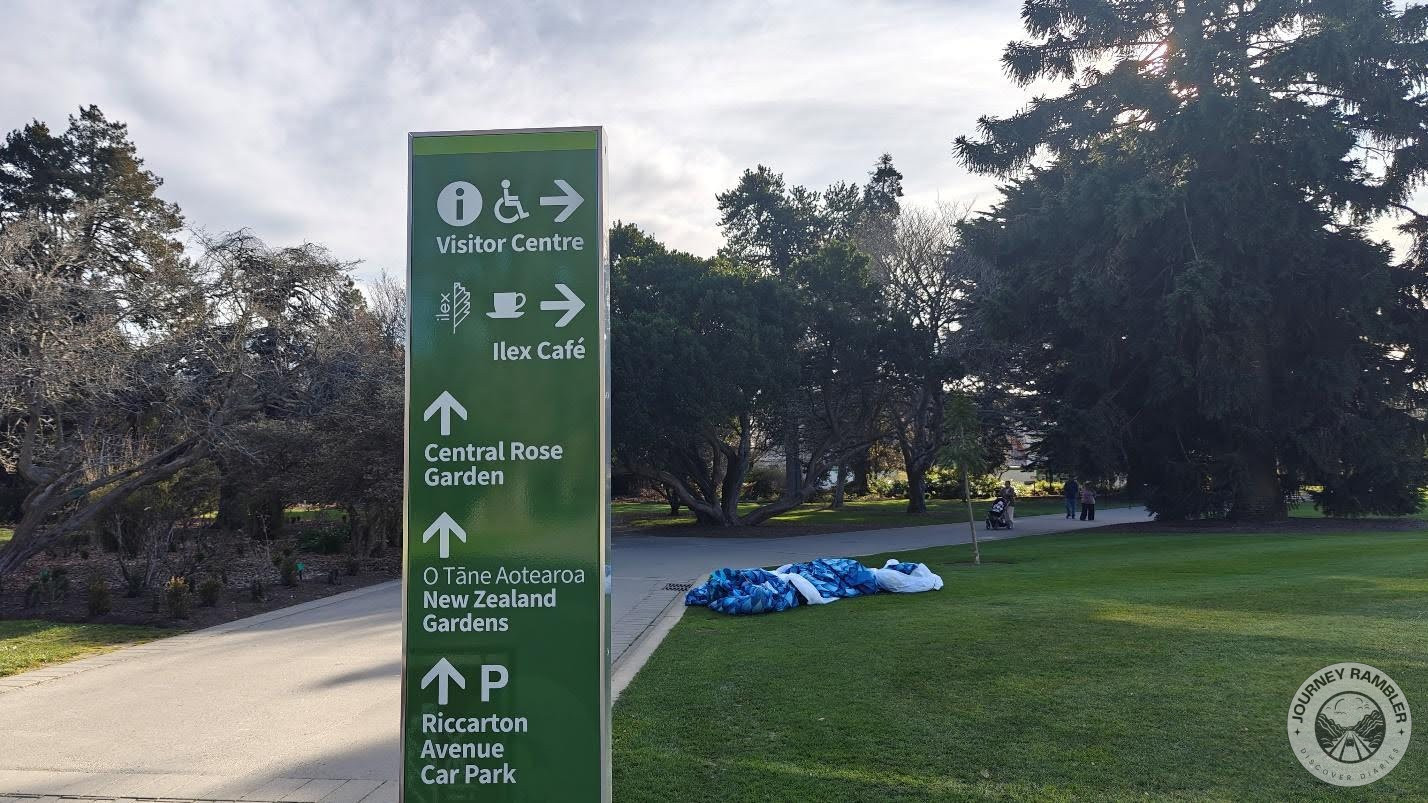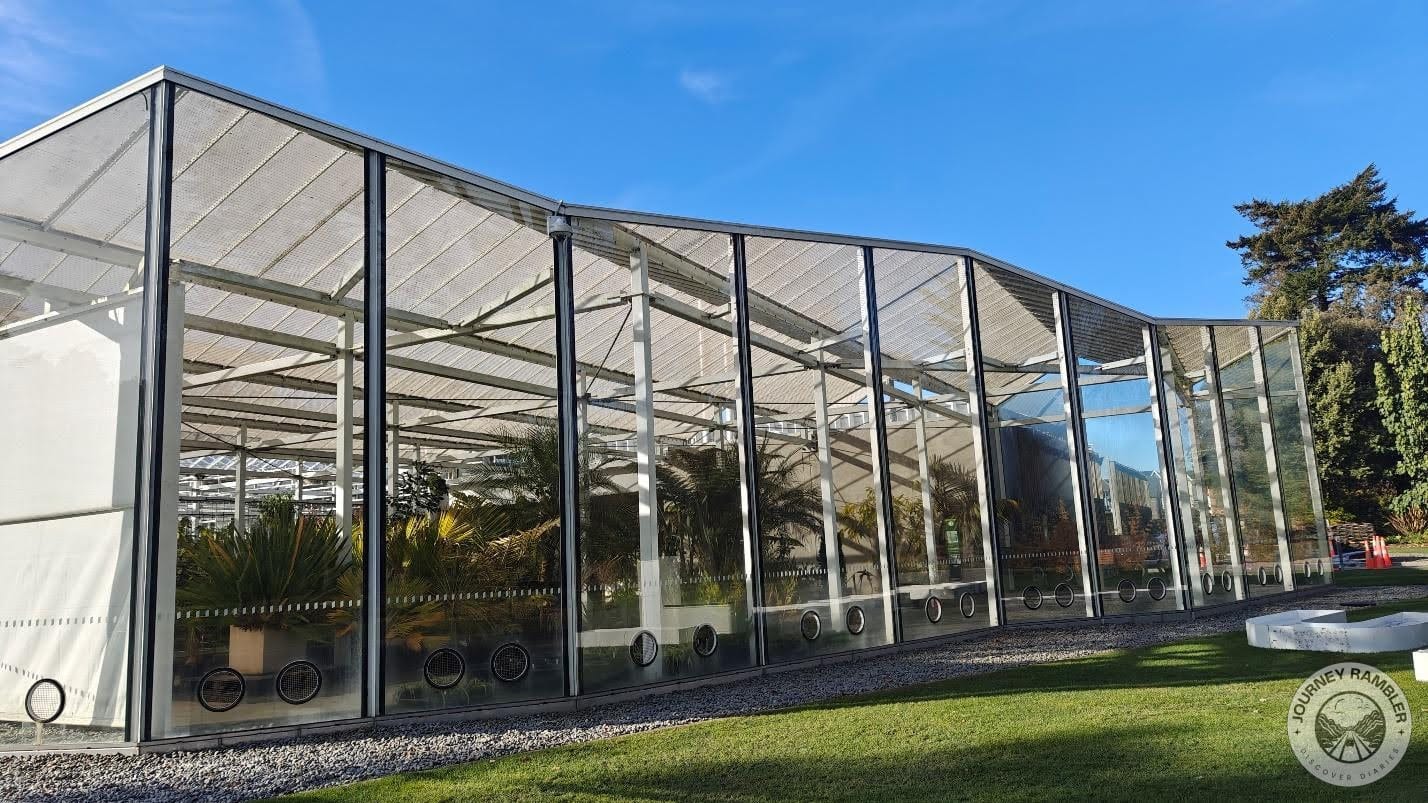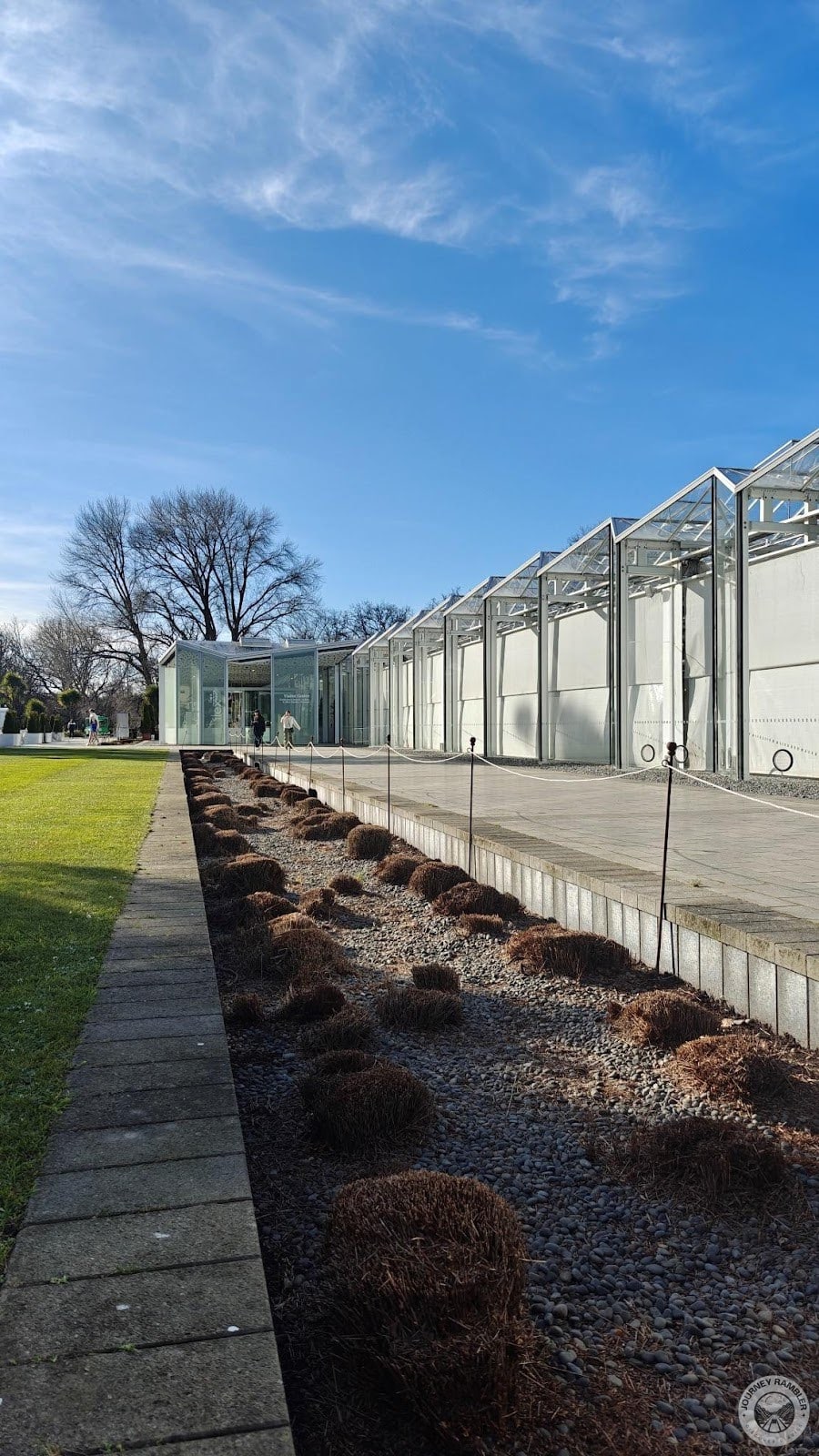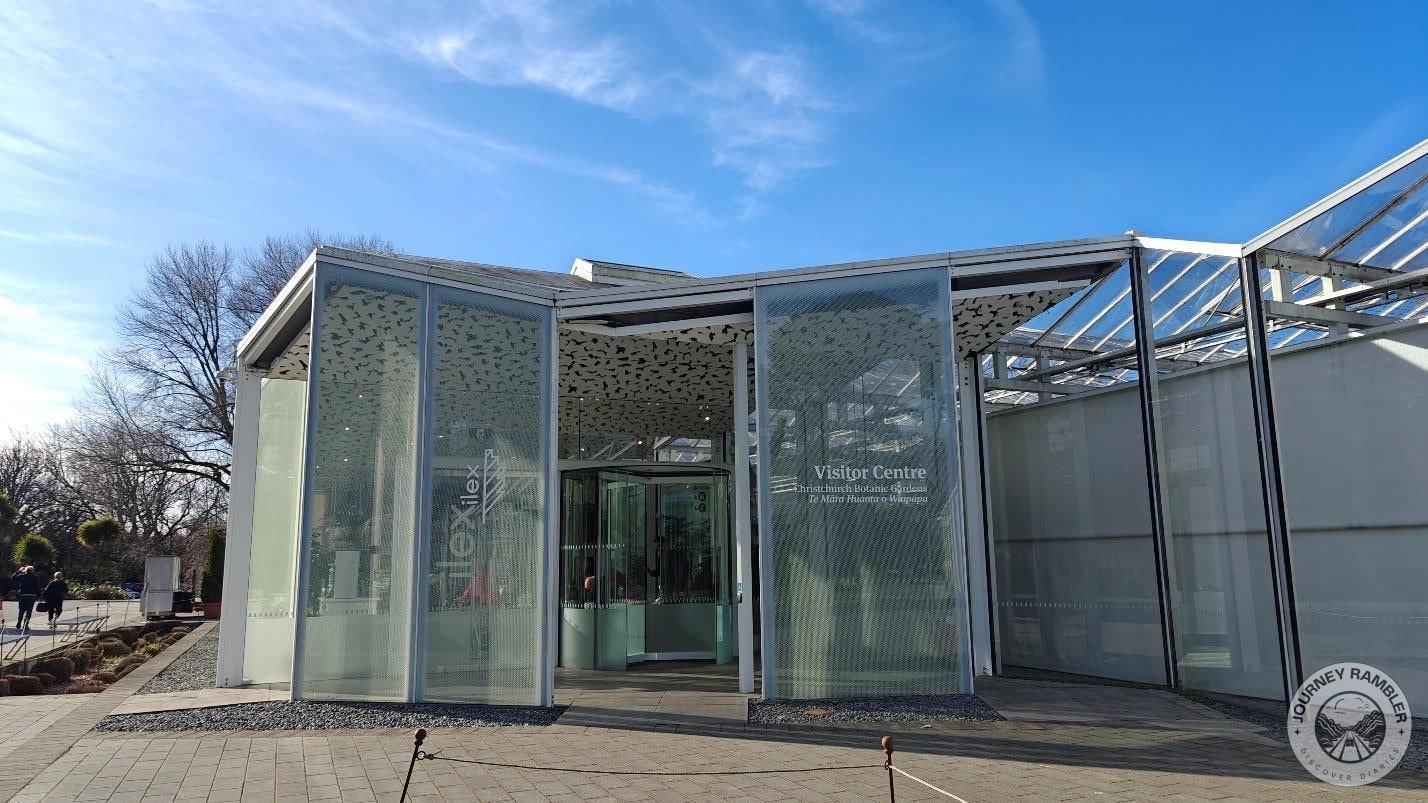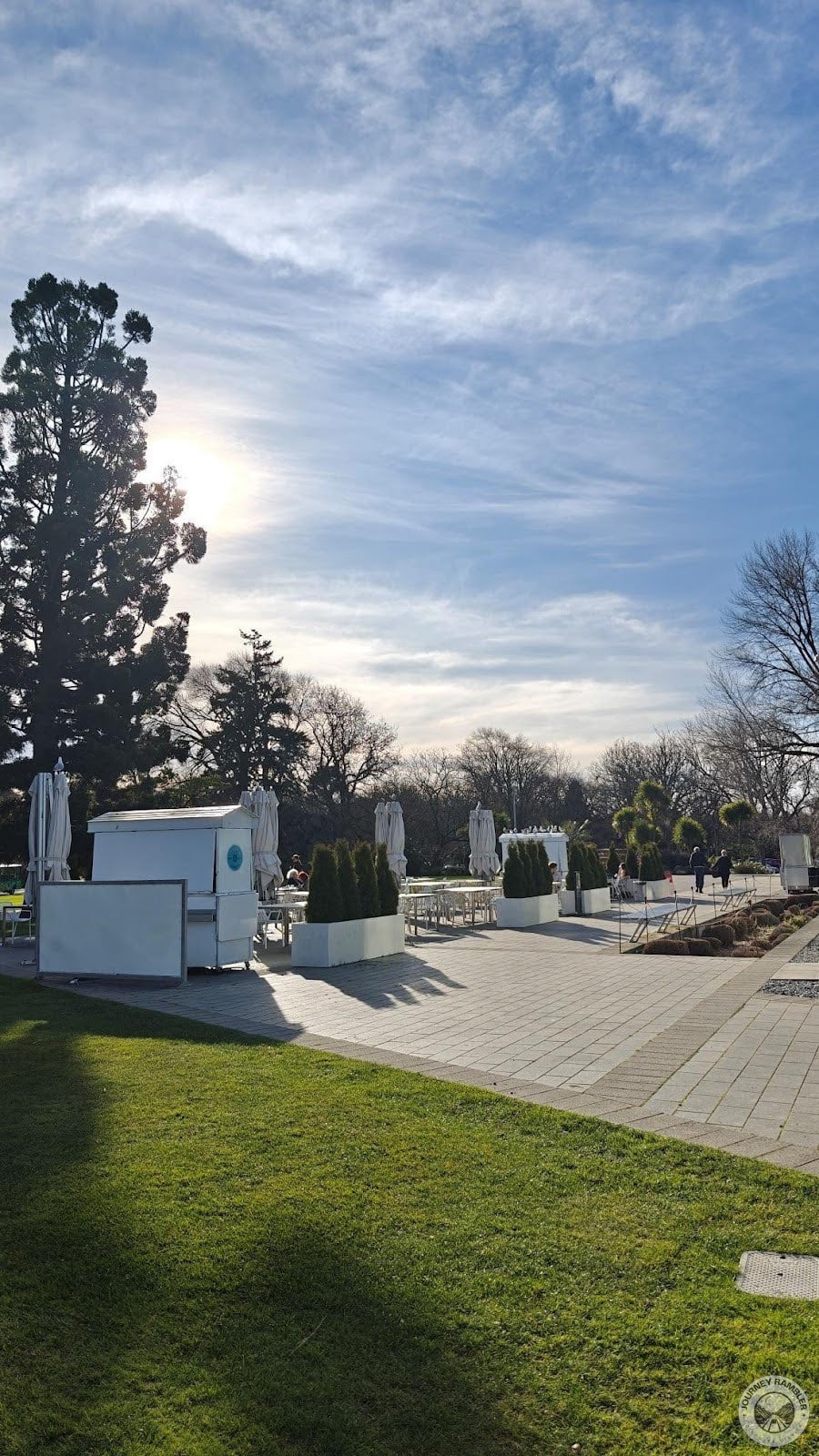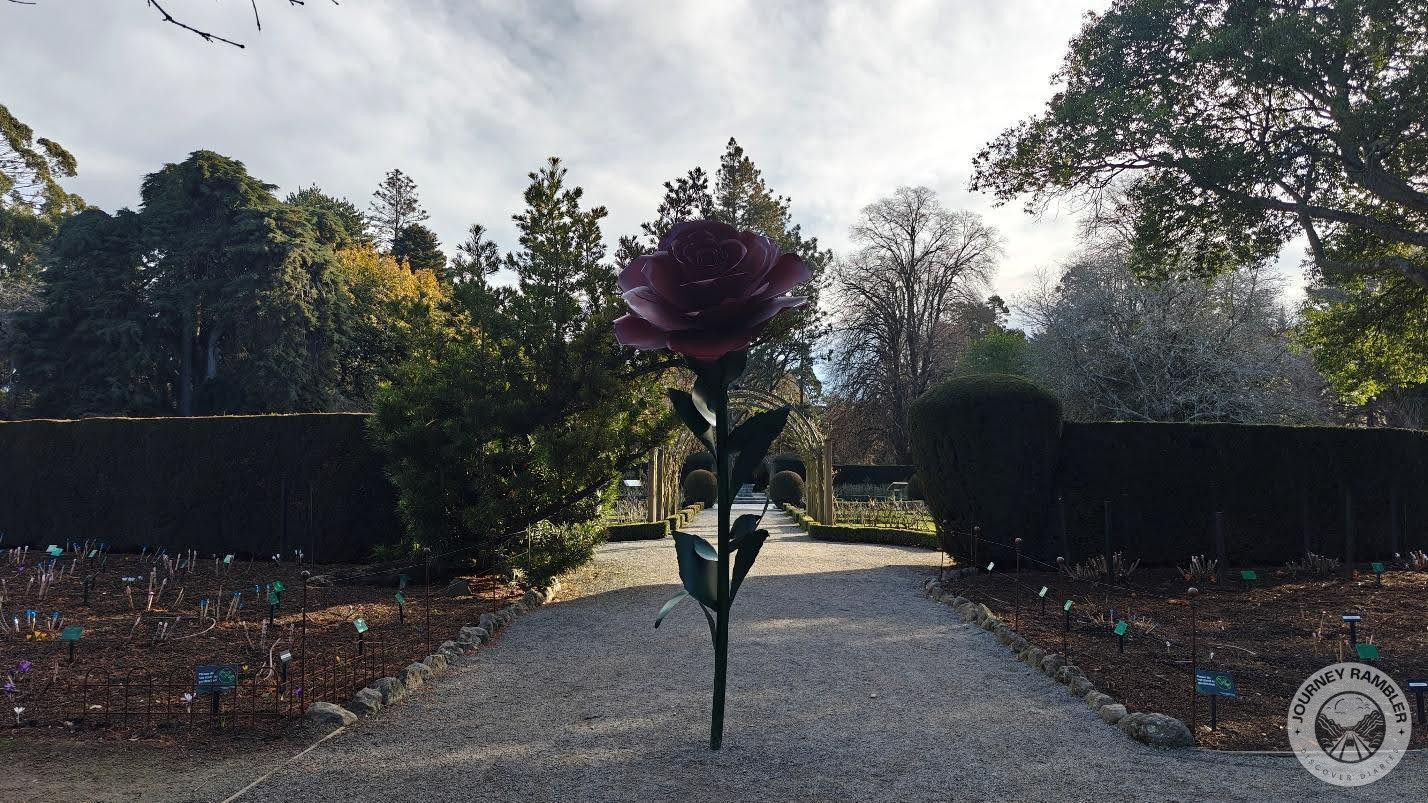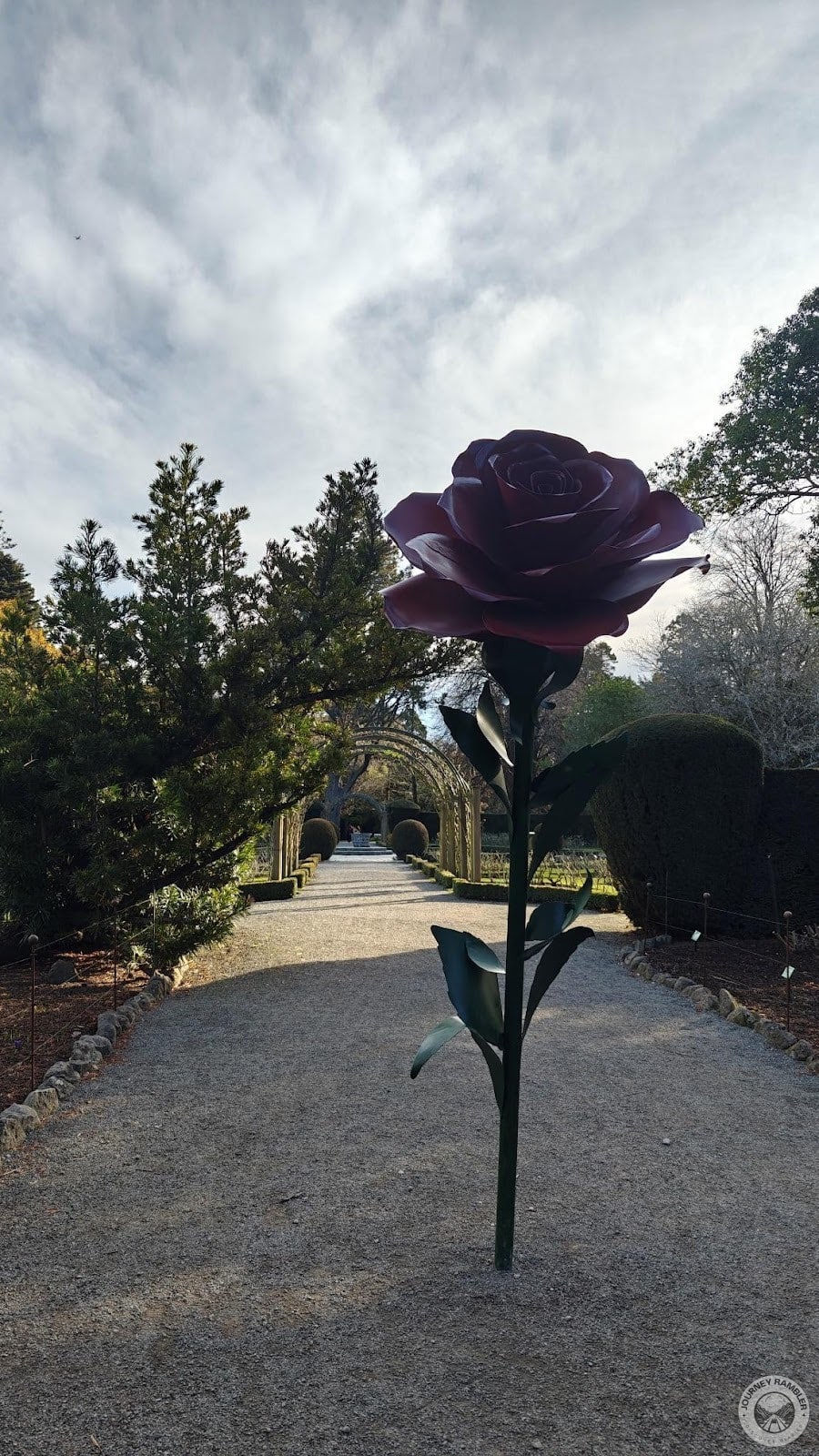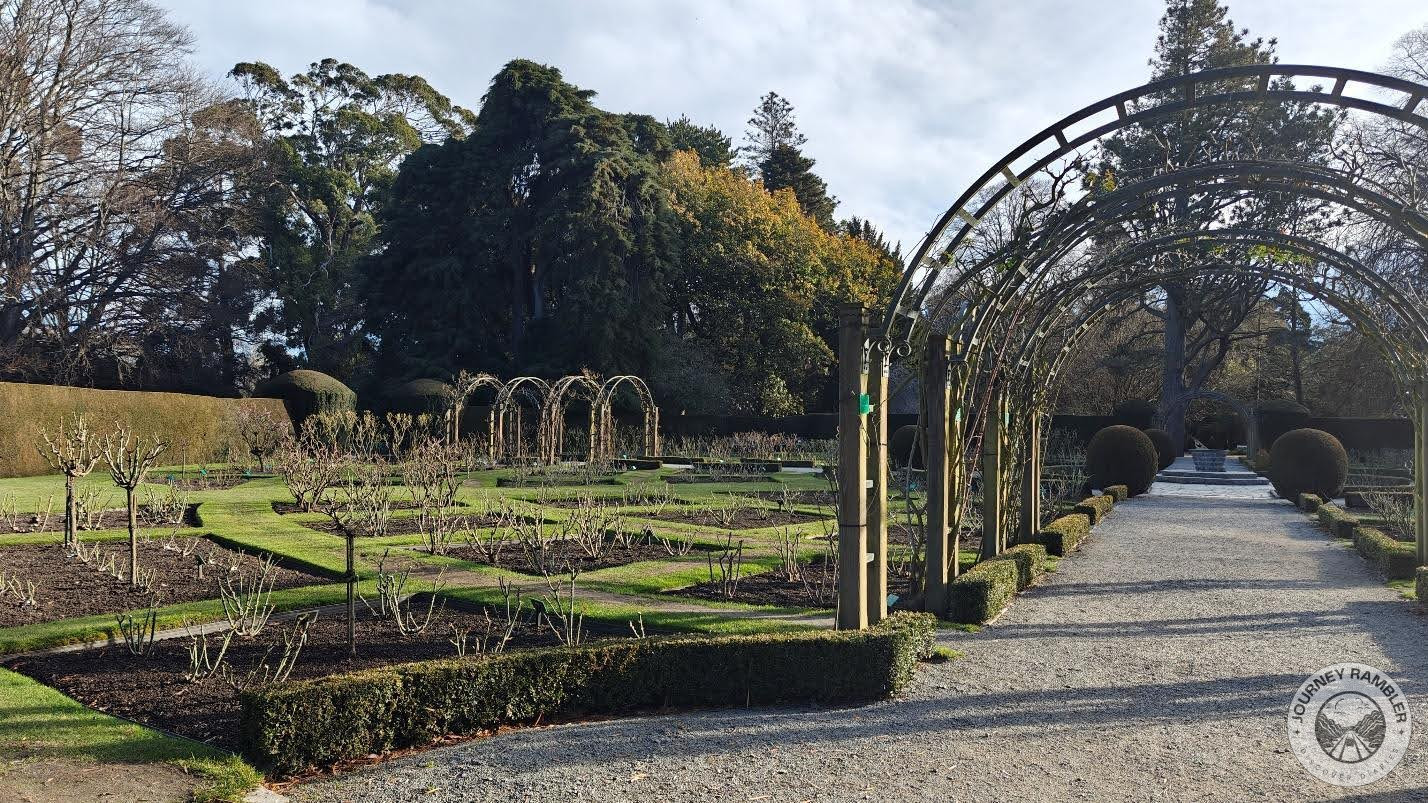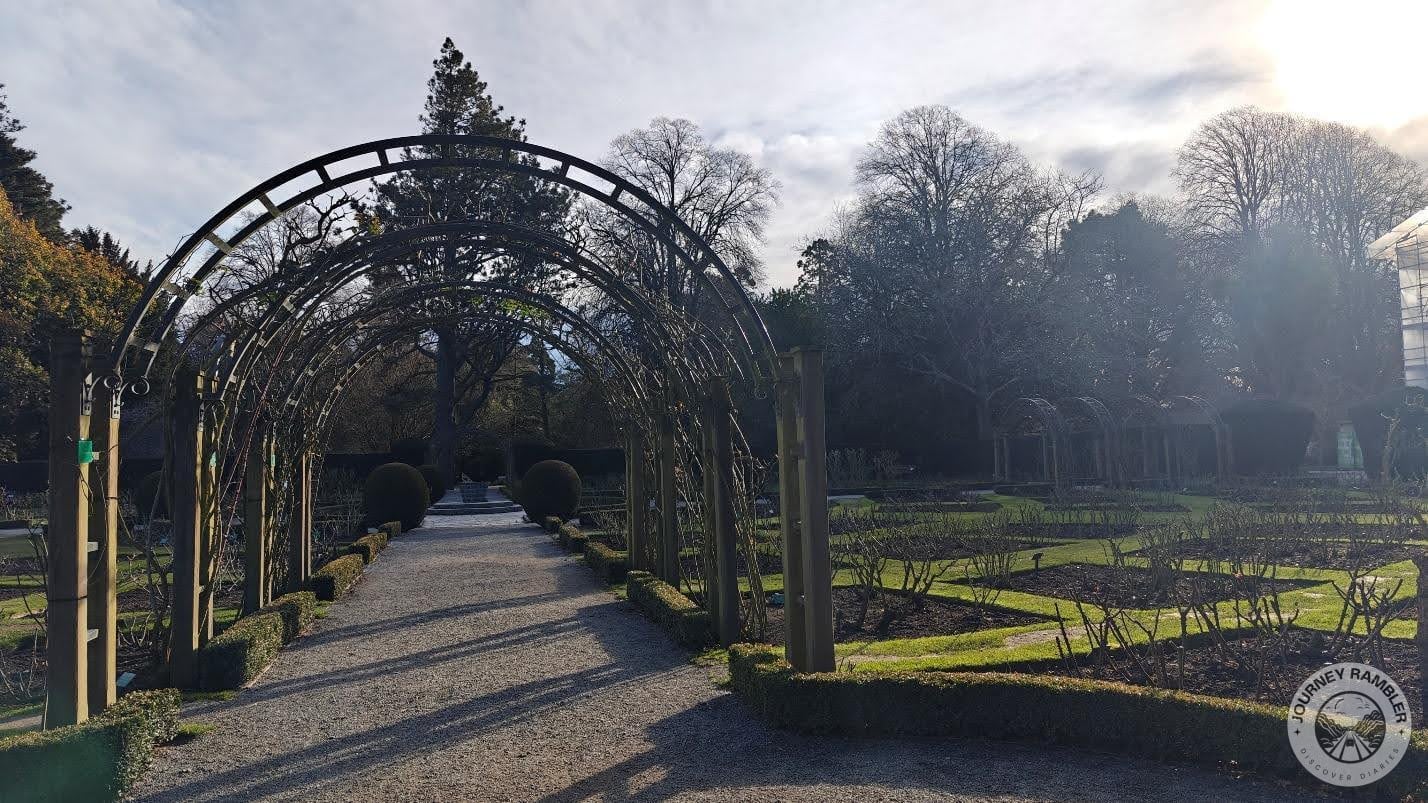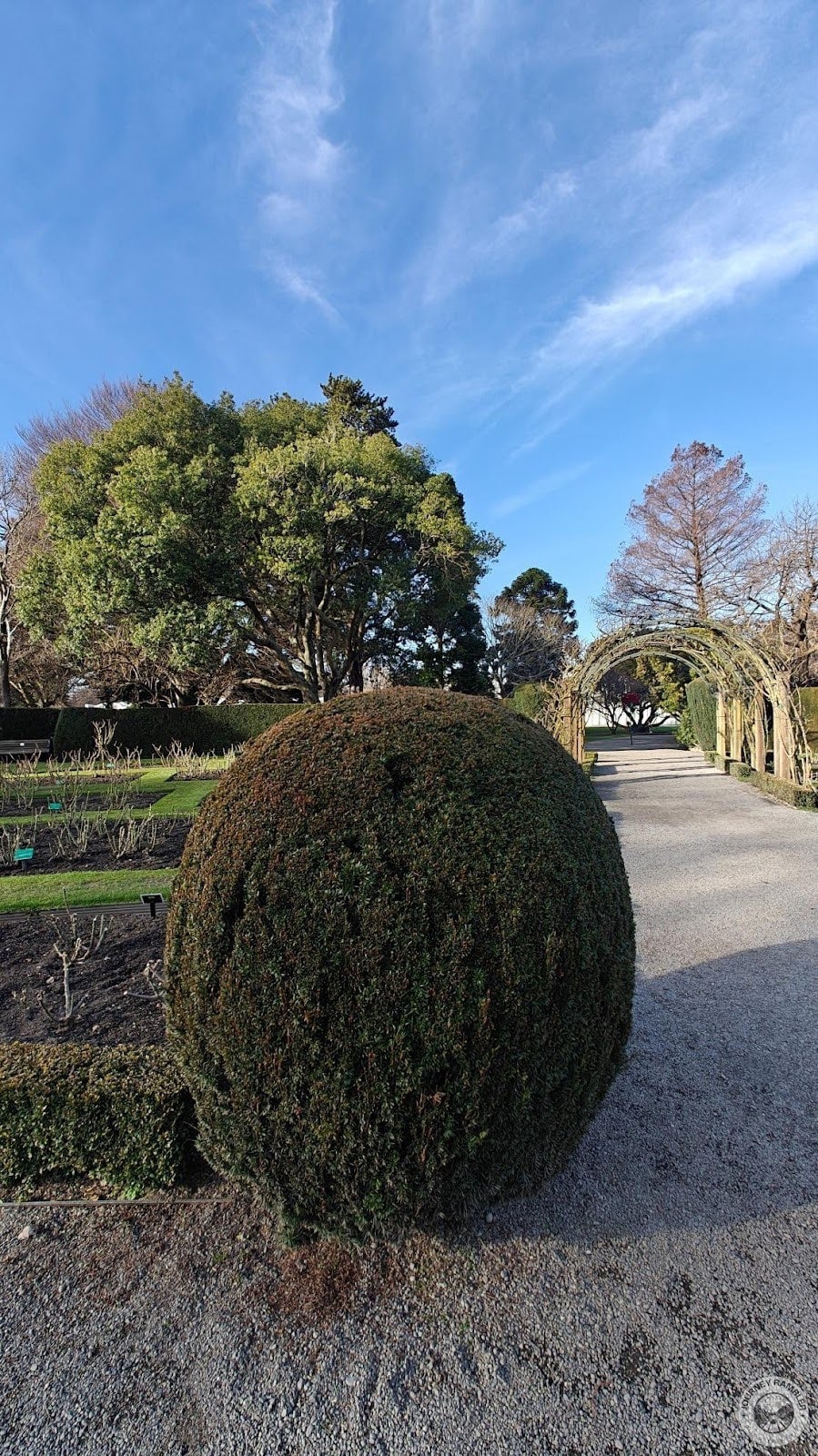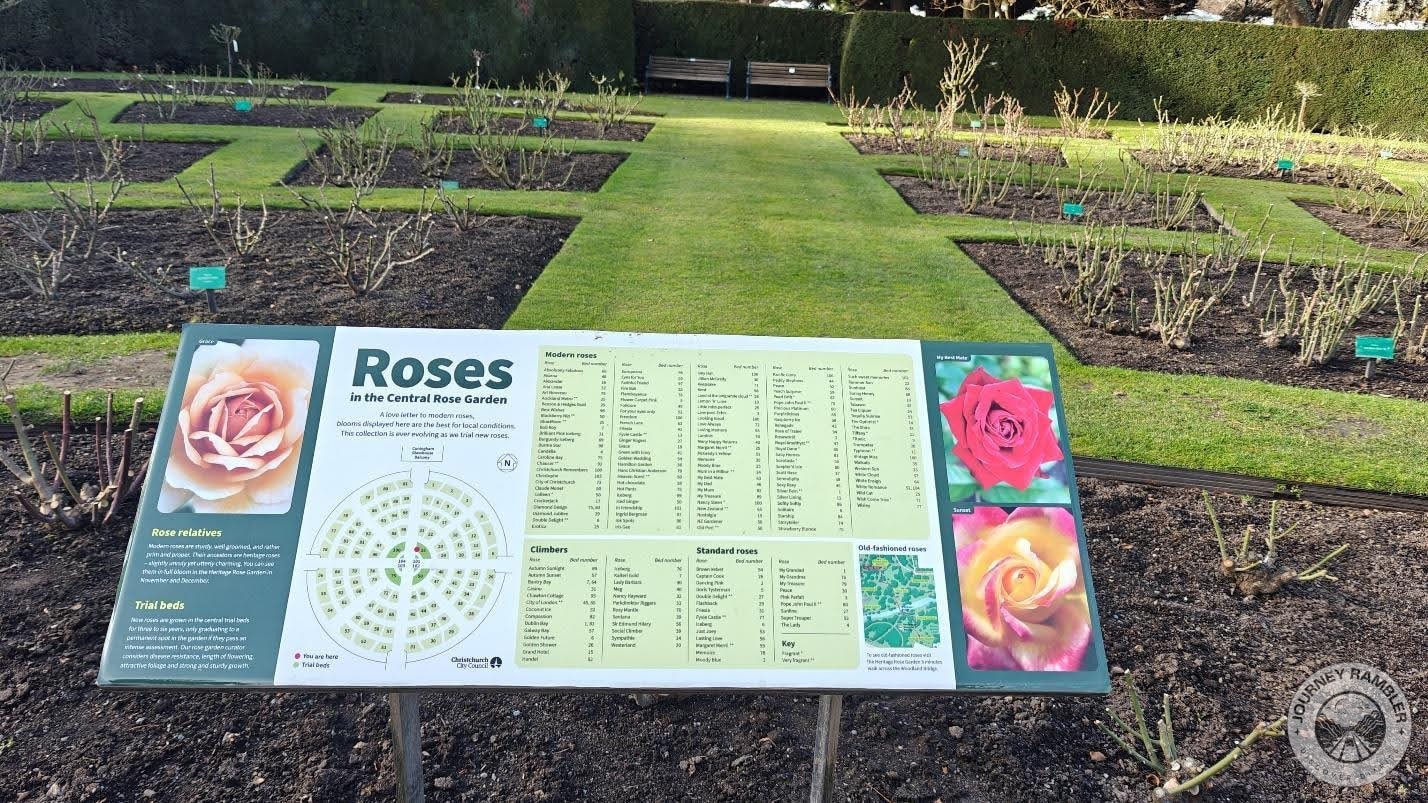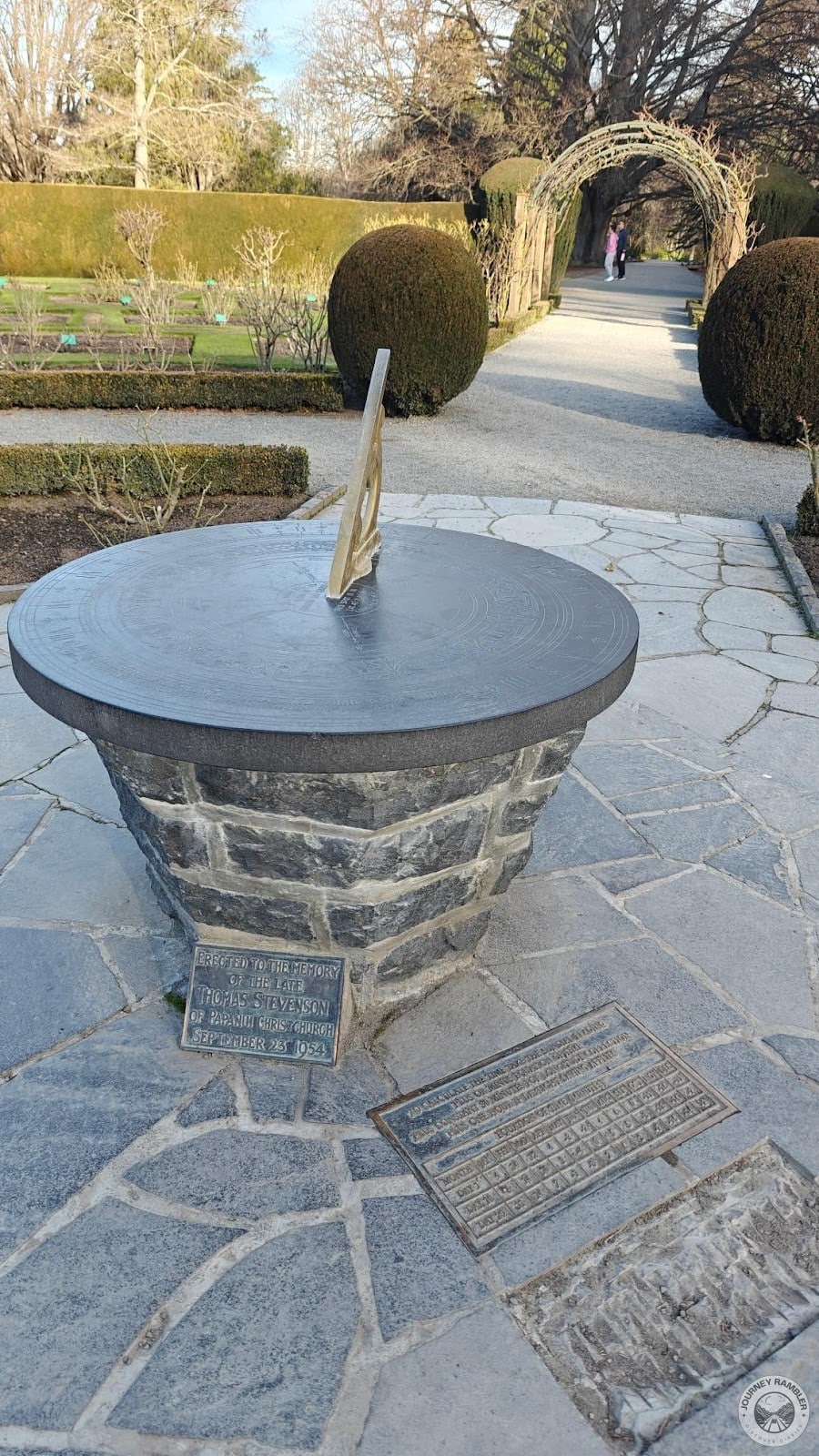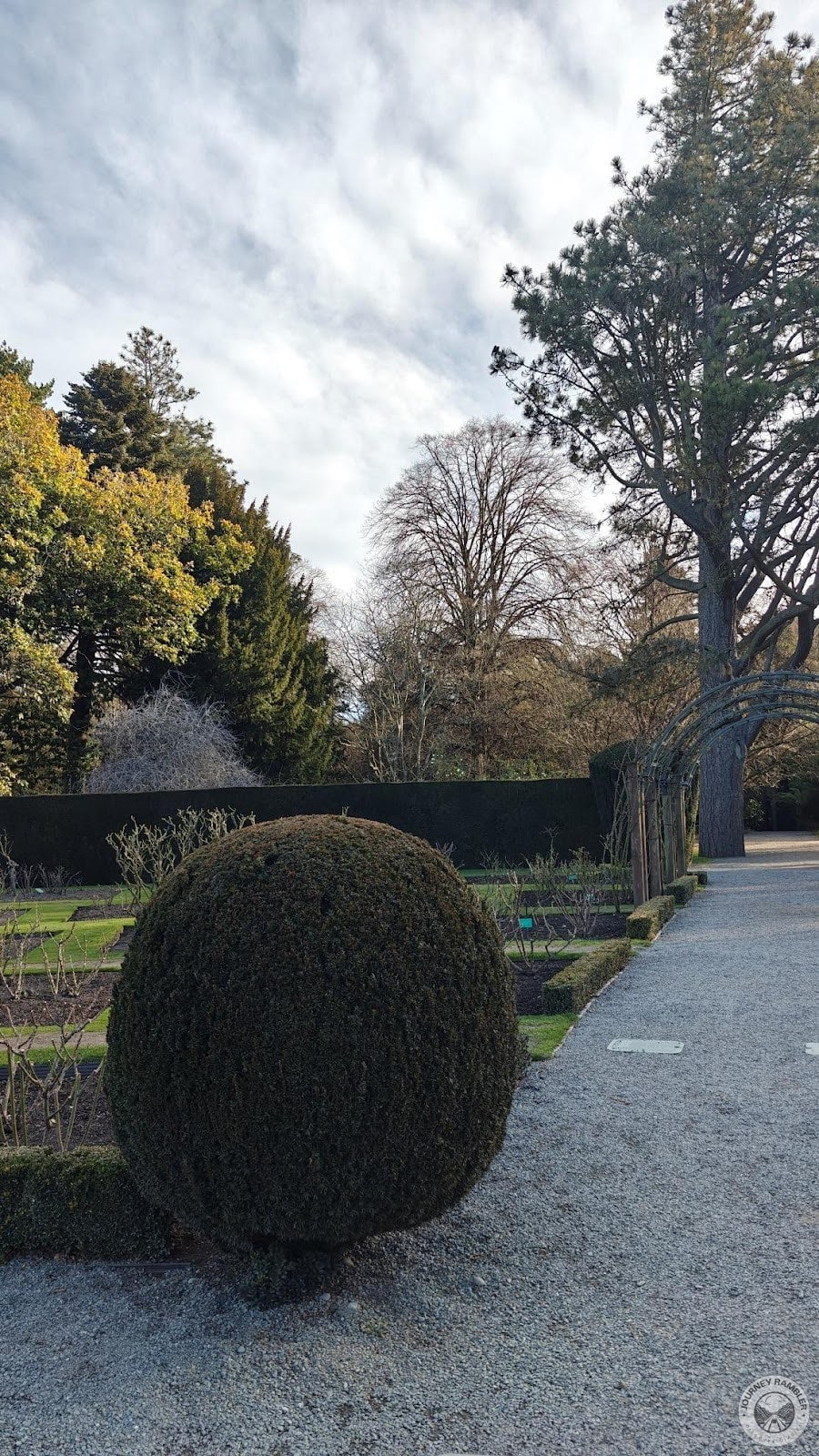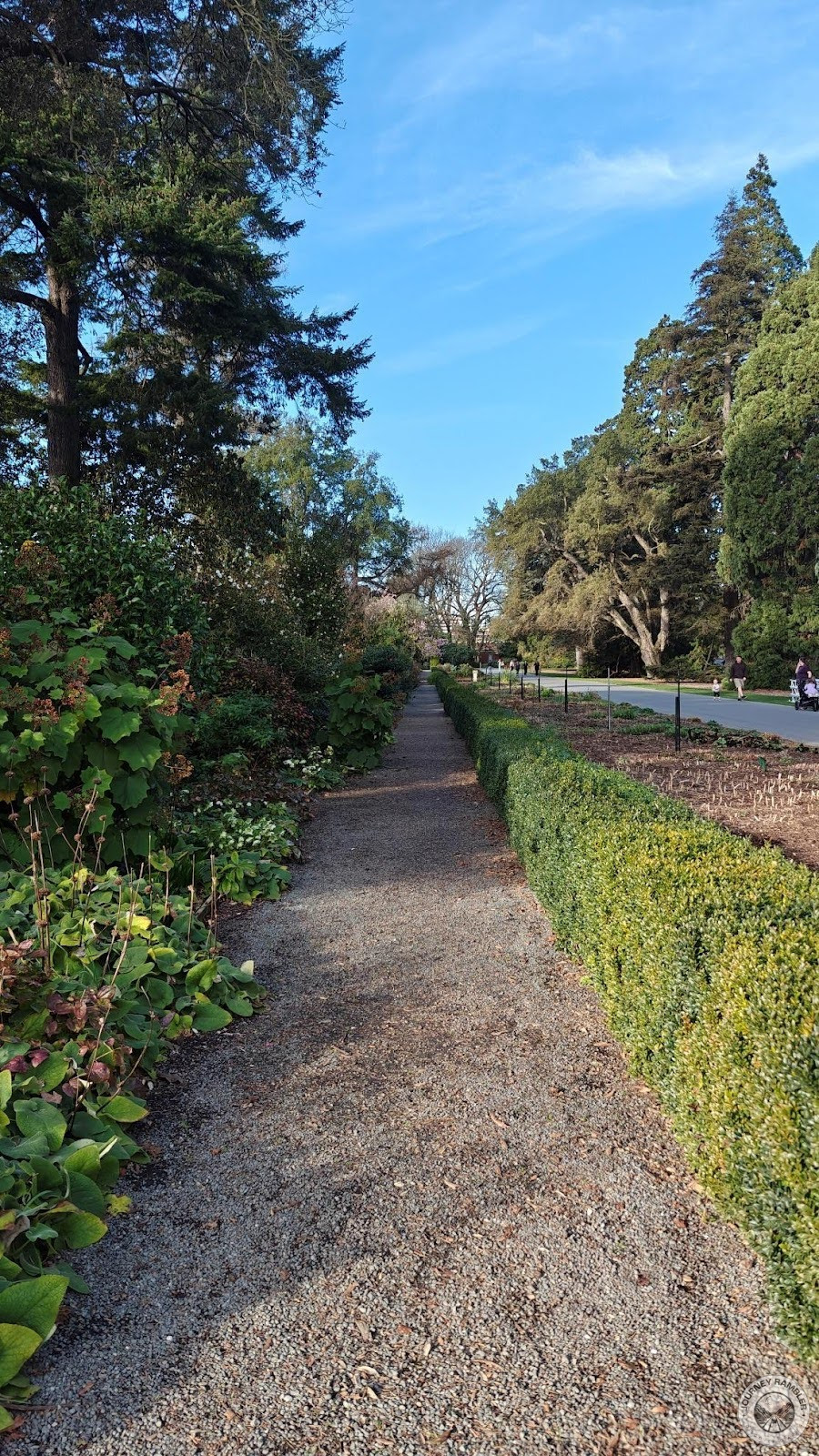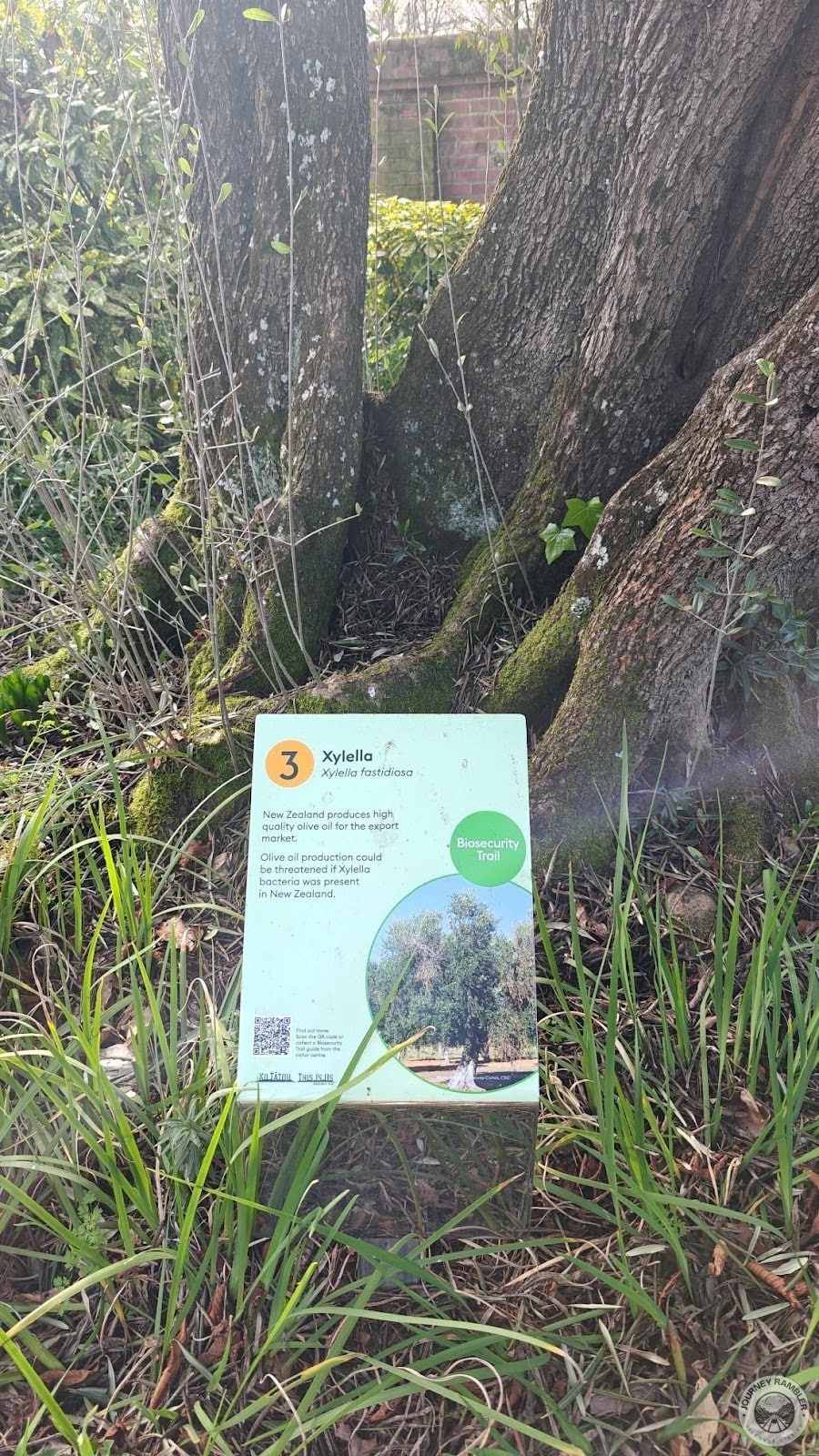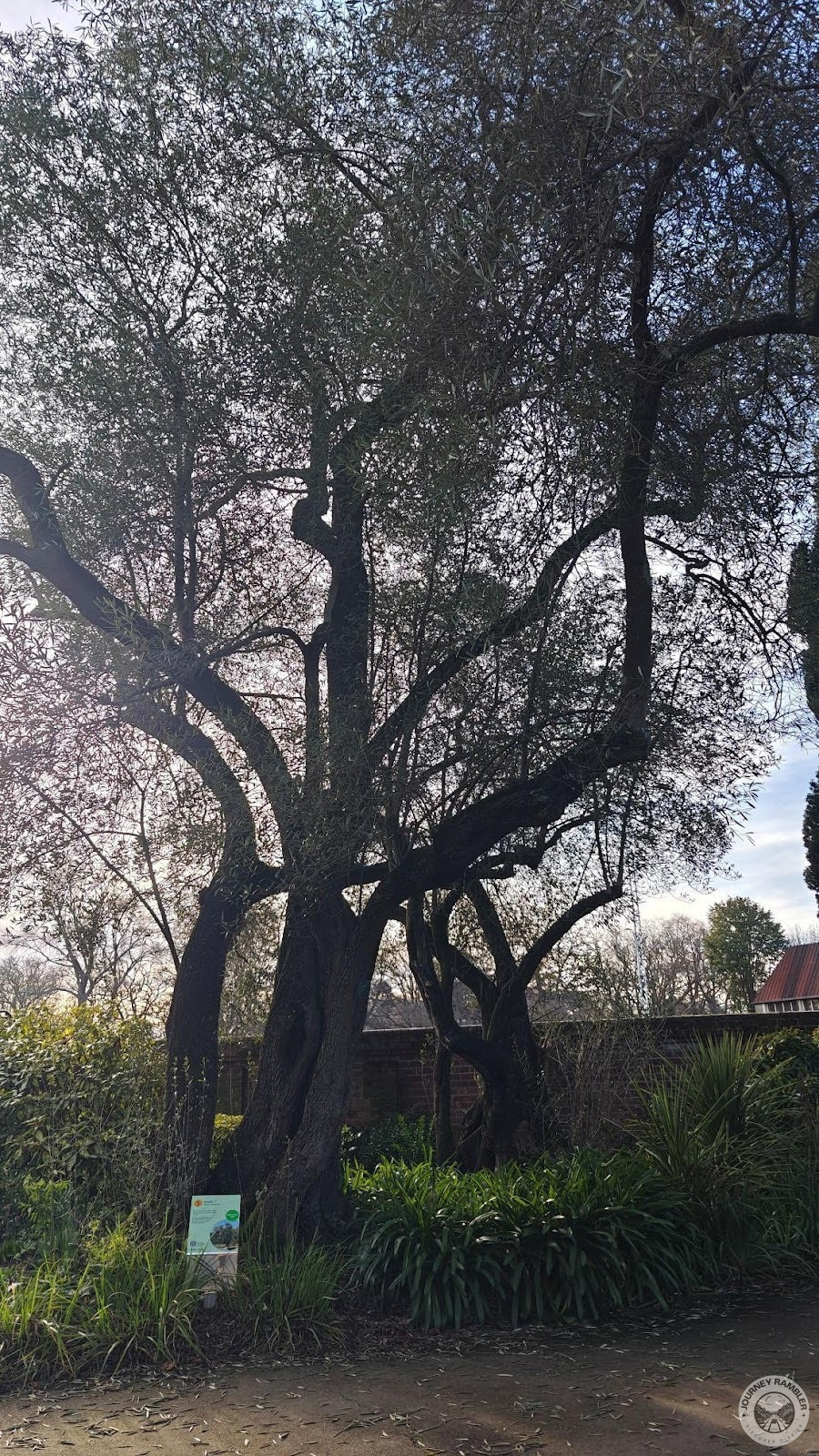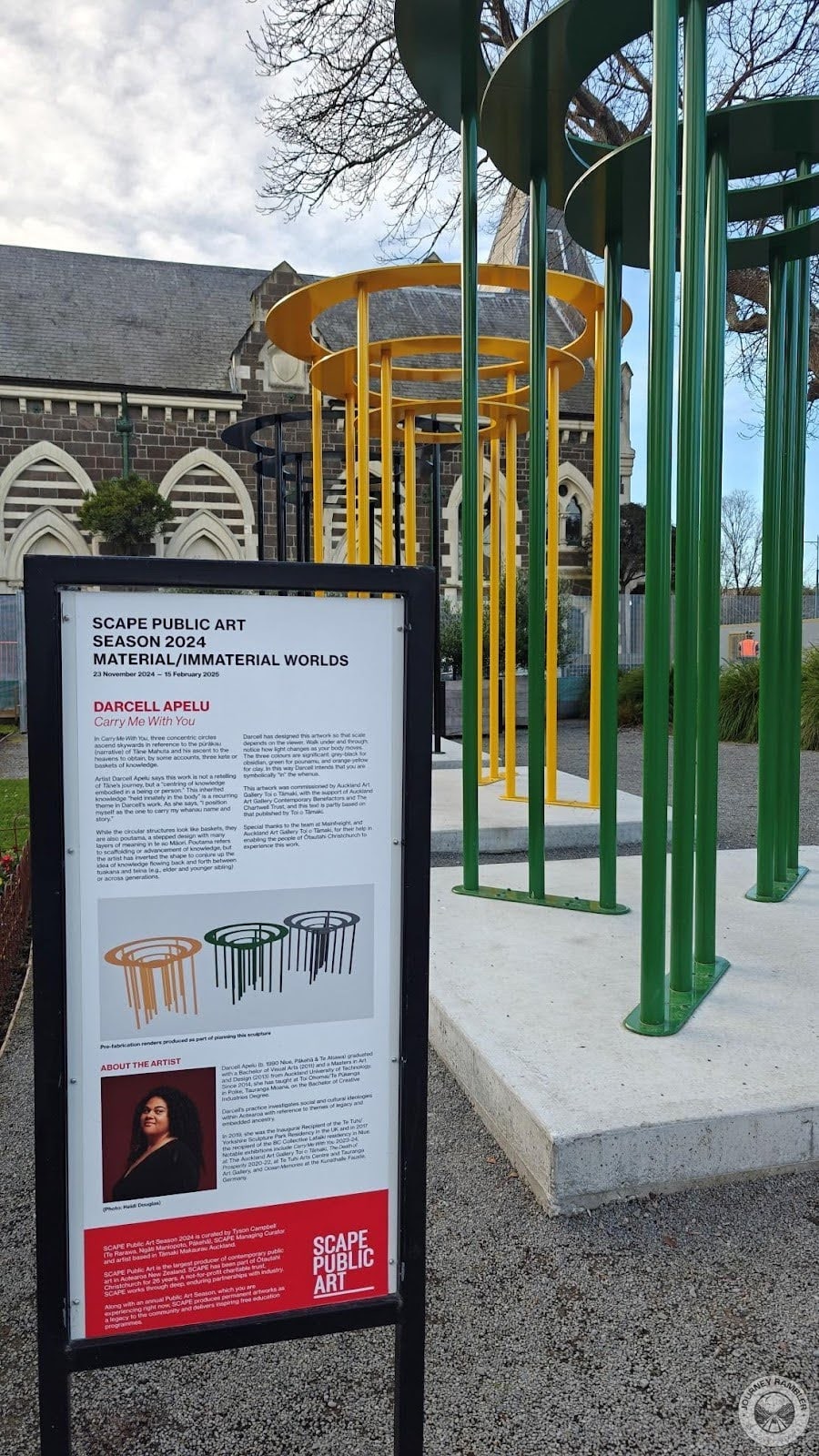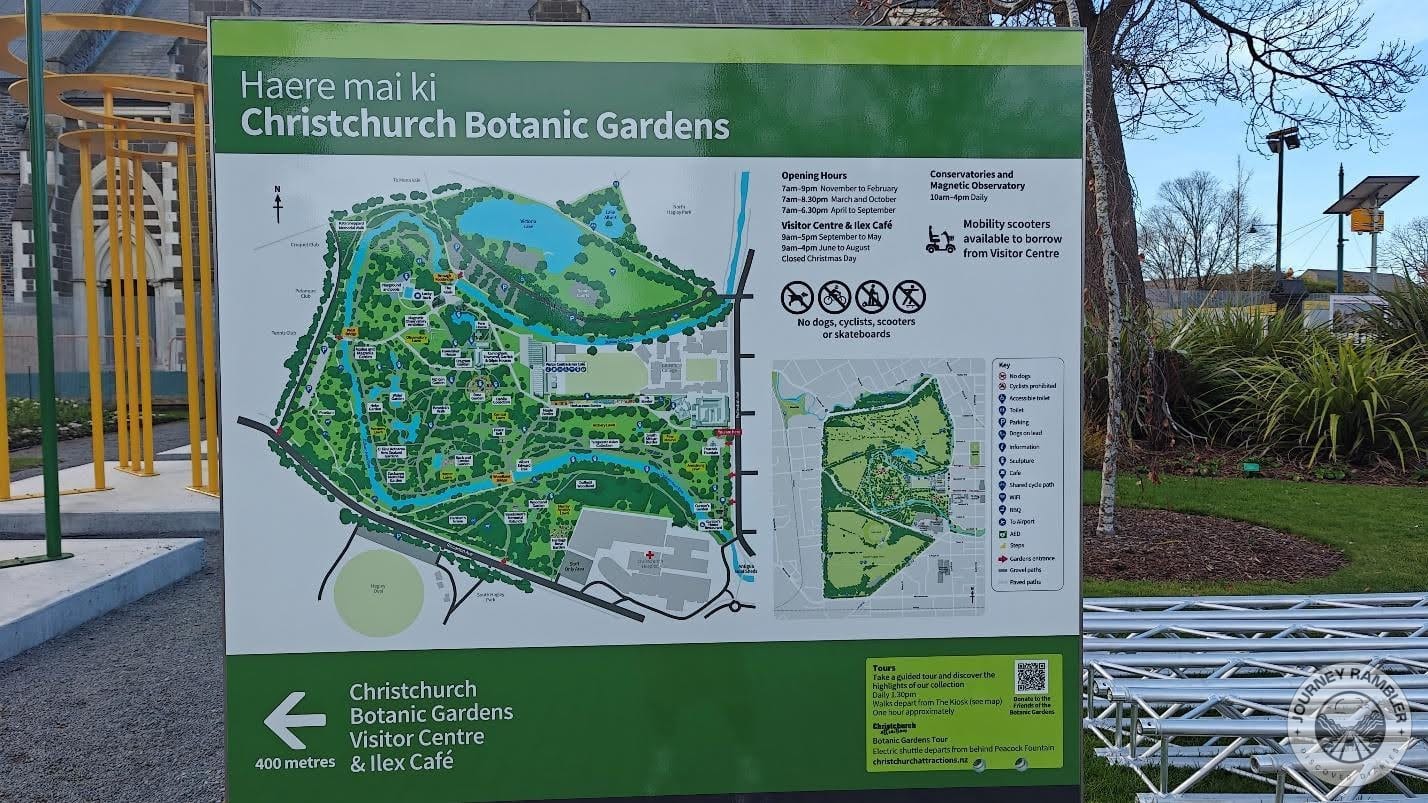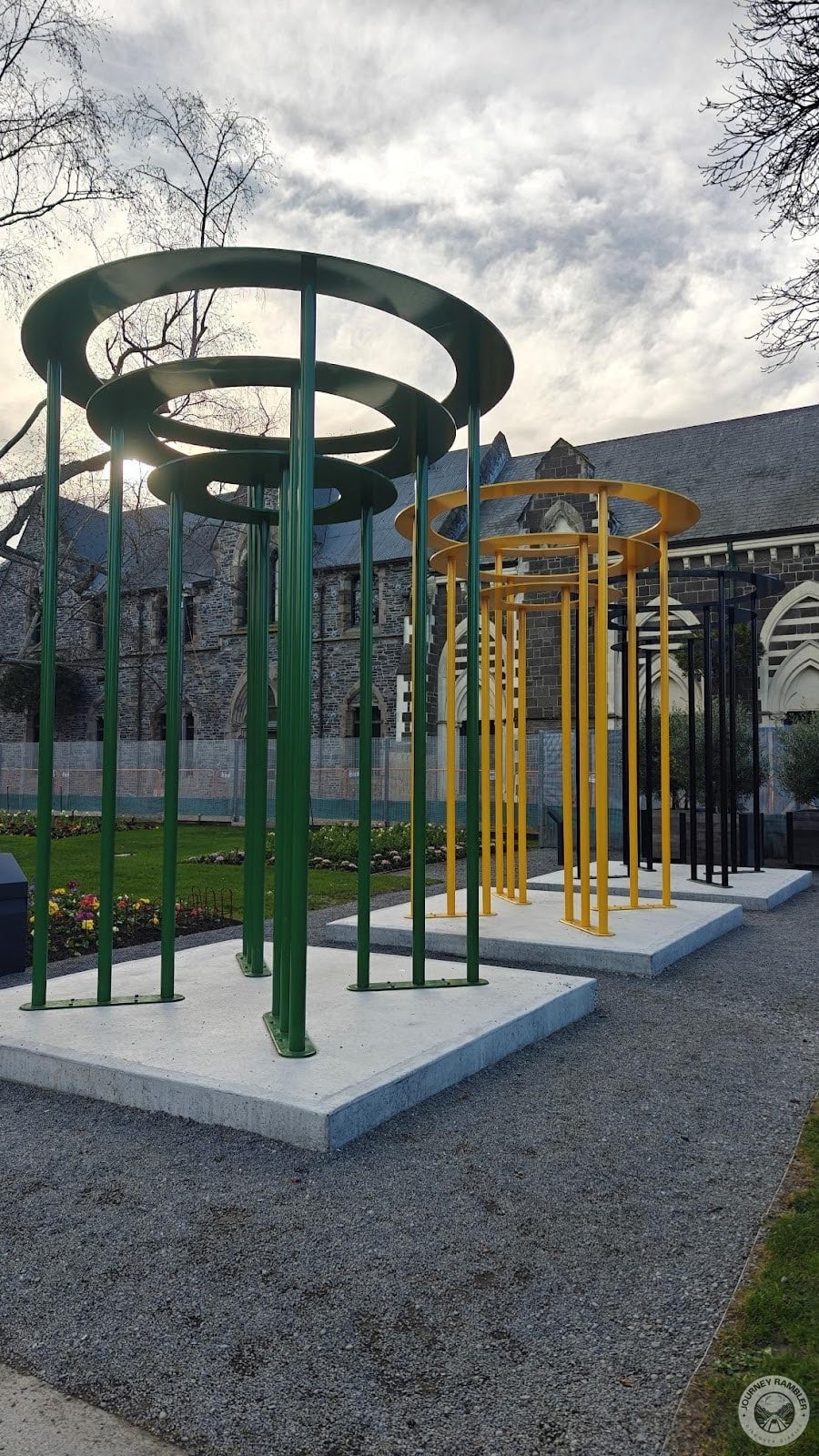I truly enjoy visiting gardens whenever I’m traveling and the Christchurch Botanic Gardens might be one of my favorites. I managed to visit here during my stay in Christchurch and was honestly quite impressed at what I saw. It wasn’t as grand as Sankeien Garden in Japan (or the garden around Larnach Castle in Dunedin) but it still had its own charm and aesthetic that was pretty hard to not like.
The Unique Charm and Aesthetic of the Christchurch Botanic Gardens
Getting to Christchurch Botanic Gardens is relatively easy especially if you took the Christchurch Tram. You can enter the Gardens through Rolleston avenue which is just west of the block where the Christchurch Art Center is. There are a number of entrances here and this one is the southernmost and halfway between the Hereford Street and Cashel Street (you can also go to Riverside Market from here) junctions.
One of the first things I noticed here, aside from the signage, was the gatepost. Initially, I thought this was made from concrete but upon closer inspection, this and likely the rest of the gates from this street, is actually made from cast iron. It looks super nice and has this blend of simplicity and sophistication to it.
Other things that stood out were the signs. This one is a warning against the bringing of dogs as well as bicycles, skateboards, and scooters inside. You could also see signs here informing visitors of the garden’s business hours. It opens at 7:00AM and depending on the time of year, closes at a late 9:00PM or an early 6:30PM.
Christchurch Hotel Recommendations Based on My Own Stay
🔹 DoubleTree by Hilton Chateau on the Park Christchurch
🔹 The George Hotel Christchurch
After entering, the first thing that I saw was this beautiful building that reminded me of a Swiss chalet for some reason. It’s actually a restaurant called the Curators’ House and it specializes in Spanish cuisine. So if you happen to be on the lookout for tapas, paella, or maybe a Tarta de Santiago then you’re going to want to drop by here.
Before exploring the Gardens, make sure to check out this map kiosk. It has a detailed map of the whole place that features the notable attractions/areas you’ll find here. Additionally, the map also gives you an idea of just how large the whole place is (just like the Queenstown Gardens). In fact, I think this is probably one of the largest urban gardens that I’ve ever been to. And as much as I loved Sankeien Gardens in Yokohama, this was probably much larger (though it arguably has fewer views that wowed me).
Just behind the map kiosk and directly in front of the Curator’s House is the Armstrong Lawn. One of its main features are these really colorful flowerbeds. Now, I’m not too familiar with flowers so I wasn’t really sure what some of these were. The flowers on the outer edge of the bed seemed like peonies though again, I’m really not an expert so take my guess with a grain of salt.
Here you’ll see the path parallel Rolleston Avenue that leads to the Canterbury Museum off in the background. You’ll also notice the length of the Armstrong Lawn on the left of the image. This is actually a really relaxing spot and if you find yourself tired, you can always just take a seat on one of the benches you’ll find here.
Following the path to the Canterbury Museum, I came across this circular flowerbed in the Armstrong Lawn. At that point, this was probably the most colorful set of flowers that I’d seen in the gardens. Then directly in front of me was a sign with a description detailing the practice of promenading. This was apparently a practice in the 19th century that, in a nutshell, was just going outside to socialize.
Here’s the second rectangular flower bed that I saw in the Armstrong Lawn (counting from the Curators’ House). According to the Christchurch City Council’s site, the flowerbeds here are part of the Garden’s annual bedding displays. So a lot of the plants here are annuals which typically complete their life cycle (as their name implies) in a year.
This is a statue of the second Superintendent of Canterbury Province, William Sefton Moorhouse. The statue is still a part of the Armstrong Lawn and has been here since 1885. It makes me wonder though, why didn’t they just call this the Moorhouse lawn (don’t worry, this gets answered later on)?
I remember visiting the Great Buddha at Kamakura and that place had a garden where they planted trees to commemorate the visit of foreign dignitaries. Apparently, the Christchurch Botanic Gardens practices that as well. Unlike the gardens at Kamakura though, it seems like you’ll have to get the commemorative tree brochure at the Visitors Centre here if you wanted to know who the dignitaries were and the respective trees planted to commemorate their visits.
Here’s a closer look at the statue of William Sefton Moorhouse we saw earlier. From further readings of him, he’s apparently commemorated because of his efforts to give the city of Christchurch its first railway in the 1860s. Interestingly enough, a part of the railway is still around and can also be found in the city (specifically in Ferrymead Heritage Park in the south-east of Christchurch).
Up close, the statue looks like it’s been well-maintained. Seriously, you wouldn’t think the statue is more than a century old at this point. The foundation does show plenty of wear and tear but compared to most, it’s still very decent and even looks very recent.
Now this shot turned out really nice. The quality of the light here in New Zealand is honestly unreal at times. It’s probably one of the best countries to be in, if you enjoy photography thanks to its natural light. Anyway, the fountain in the background is called the Peacock Fountain and like its namesake’s tail feathers, the way it jets water is really striking (for lack of a better term).
Before I went to the fountain, I decided to check out the rest of the annual bedding display here at the Armstrong Lawn. I’m not quite sure but I think the flowers here are Anemone coronaria (the red ones) and Forget-me-nots (the smaller and blue-colored ones). In the foreground is another sign detailing how the gates facing Hereford street were a gift of the 1882 Industrial Exhibition to the gardens.
Now this is another interesting display here that talks about the Domain Fete. When searching this up, I realized that it was similar to the fiestas in most Latin countries. I’m not quite sure though if this particular fete is still being celebrated here in Christchurch but I do know that there are other community events held in other places that are similar (a good example of which is the Annual Governor’s Bay Fete).
So here’s an explanation as to why this area is called the Armstrong Lawn. Apparently, it’s named after the Gardens’ first curators, John F. Armstrong. Under his direction, the garden was able to transition from a place to socialize and be seen to an educational attraction that featured a wide and colorful selection of botanical specimens.
This is a closer look at one of the flowerbeds close to the Peacock Fountain. The flowers here are primroses of varying colors. Primula vulgaris are typically considered as perennial plants in the West though I’m not quite sure if the ones here are grown as annuals (considering the place is called the annual bedding displays).
This is another view of the primroses close to the Peacock Fountain. One thing that surprised me about these flowers is that they’re not actually endemic to New Zealand. My guess is, these were likely brought over from the United Kingdom during the colonial period since the plant is widely found in both Ireland and Britain.
I said earlier that the Peacock Fountain looked striking and really, it’s more than just that. You can’t see it here but as with any time light comes into contact with sprays of water, they tend to form miniature rainbows. Together with the primroses, your eyes just get inundated with all this color that it’s actually quite hard to describe.
Here’s another glimpse of the Peacock Fountain with the primroses in the foreground. You’ve also probably noticed the tree in the distance doesn’t have any leaves on it. That’s not because it’s dead but rather it was actually winter time when I took the picture.
Fortunately for me, it wasn’t as hot out when I visited the Gardens. As a result, I saw people resting or doing stuff while on the lawn. Take note though that I also visited in the winter. Typically, you don’t feel the heat as much during this time of the year so if you do plan to soak up the sun in the lawn then make sure you apply sunscreen.
Here’s your first up close look of the Peacock Fountain. Its design looks really intricate and I actually caught myself just marveling at its details. Additionally, the fountain is as tall as it is large.
Much like a lot of the attractions here, the Peacock Fountain is quite old. Unveiled to the public in 1911, the fountain got its name from politician John Peacock who commissioned the Coalbrookdale Foundry in England to make it. It did go through a restoration back in 1996 which is why it still looks formidable even after a decade.
Surrounding the Peacock Fountain are flower beds and these benches. If you’re looking to rest then this area is probably one of the coolest in the entirety of the Gardens by virtue of its proximity to the fountain. That said, I didn’t see that many people here.
To the west of the Fountain, you’ll notice one of the large trees here in this area. I might be wrong but I think this is a European Beech tree. Consequently, this reminded me of the Weeping Willow in the Harry Potter books and movies.
While I wasn’t quite sure about the ID of the previous tree, this one had me even more stumped. According to some (specifically a post from the Gardens’ own Facebook page), it’s a Nootka Cypress. The Christchurch City Council’s website, on the other hand, has a similar picture on its walking guide that labels it as a Westfelton yew (which is probably the correct ID for this tree). What both sources are in agreement with though, is that it’s quite old. According to both, the tree was planted here in 1920 so that makes it a whopping 105.
Here’s the “Westfelton Yew” up close. From this vantage point, you can see that there’s actually a clearing in the tree’s branches that you can enter to see “inside”. From what I read, kids who used to play here would often turn this into their secret hideaways. Man, it must have been fun growing up as a kid here.
Moving on, I found myself at a fork in the path. Directly in front of me was the Pine Mound and if I headed on over to the right, I’d find myself in the Canterbury Museum area as well as the Gardens’ public toilets. On the left is an equally scenic path that will lead me to the Archery Lawn.
Now if you’re not the kind who enjoys long hikes then you might want to check out the Botanic Gardens Tour’s enclosed electric shuttles. They tout this as the perfect way to explore the Gardens which I’m honestly not too convinced of. I still think you get to enjoy and immerse yourself in the gardens better if you walk around as opposed to riding on the shuttle. Additionally, the use of the shuttle isn’t free (though I’m not quite sure how expensive it is).
This is a closeup of the large European Beech that was pictured earlier. So I read somewhere that European Beeches were among the first trees that were planted in the Hagley Park area (of which the Botanic Gardens is a part of). As its name implies, these beeches aren’t endemic to New Zealand and were introduced here by the British.
After checking out the European Beech up close, I then went inside the Nootka Cypress/Westfelton Yew’s foliage and couldn’t believe what I saw inside. From this angle, you‘d think this tree trunk was surrounded by other trees. The truth of the matter is, the “trees” surrounding the trunk are actually its branches.
At first I was actually dumbfounded when I saw this. Like how did this actually happen? I then looked up Westfelton Yews online and saw that this is par for the course for those trees. As for Nootka Cypresses, I’m not sure if they can actually do this naturally. It could also be that the arborists used a technique called branch training to allow the branches to grow horizontally then vertically. This makes the branch then seem like a new tree as it grows.
From this angle you can clearly see how the branches from the tree’s trunk extend outwards and then grow vertically to make it seem like they are separate trees. It might not be the tallest tree that I’ve seen here but this Westfelton Yew/Nootka Cypress was definitely one of the most intriguing.
After enjoying the sights of the Westfelton Yew, I then went to the Pine Mound area. As its name implies, the trees here are maritime pines that were planted over a century ago. And if you went back thousands of years before that time, this area used to have plenty of sand due to it being a beach that was part of the shoreline of Pegasus Bay.
Aside from the pines, this area also has some unique looking plants like the one in the picture. This is called the Heath-Leaved Banksia (Banksia ericifolia) and if I’m not mistaken, it’s a plant that also isn’t endemic to New Zealand (Australian in origin). What makes the plant unique is its flowers which are clumped together into a cylindrical form that is called a flower spike.
Here you’ll see the display earlier with the Heather-Leaved Banksia and the area’s pines in the background. While it’s technically not a tree, the Banksia can still grow pretty high. If I’m not mistaken, it’s normal to see one as high as 3 meters.
This was the closest shot I could get of the Heather-Leaved Banksia’s flower spikes. I’ve seen extreme closeups of these online and they actually looked really nice. If you’ve ever seen red spider lilies then the individual flowers look very similar.
Perhaps the most notable tree in the area is this large, alien-looking tree called a Monkey Puzzle (but if you really want to see some very unique looking trees, you can go to Lake Wanaka and see That Wanaka Tree & Wanaka Sequoia trees). You’ll find this on the northern section of the Pine Mound and it’s one of the last things you’ll see as you enter the Archery Lawn from there. What makes this truly notable though is that it’s actually considered a living fossil! Yes, you read that right. Known by its scientific name Araucaria araucana, the Monkey Puzzle tree has been around for millions of years and is endemic to the Chilean Andes.
Most scholars believe that one of the reasons why the tree has survived this long is thanks to how it evolved to have rigid spiky leaves. Thanks to this evolutionary adaptation, the tree was able to make itself unappetizing for the dinosaurs. Then with the dinosaurs gone, it ended up having no natural predators and eventually survived to the present.
After admiring the Monkey Puzzle, I then proceeded to the entrance of the Archery Lawn area. From here, you can see the eastern-most section of the lawn as well as some of its notable attractions like the drinking fountain and the pond that has the Regret Water Sculpture.
Once you enter the gates, you’ll notice these benches to your right. If you’re so inclined, you can actually use these though bear in mind that they can get a little dusty. In my case, I still had plenty of energy so I decided to just continue exploring the area.
Just in front of the area where the benches were, you’ll come across this drinking fountain that has a view of a small pond. The picture doesn’t quite capture it but there’s actually a sculpture integrated into the pond that’s called Regret. If you do end up getting here, make sure you check it out since it looks really interesting.
As for the drinking fountain, I’m not quite sure if it has a name. It’s very non-descript and honestly, the only reason why I noticed it was that it stood out like a sore thumb in the lawn’s landscape. Moreover, I unfortunately didn’t try to check if the water here was drinkable.
Beside the drinking fountain was a sign with a blurb about the Archery Lawn. It talks about Christchurch being a great place to grow trees from the Northern Hemisphere thanks to its climate and rich soil. Additionally, the blurb mentions how the Archery Lawn actually got its name.
Remember how there was a junction after the entrance to the Archery Lawn area? If you followed the path to the right then that would lead you to one of the entrances of the Canterbury Museum. Unfortunately, the museum was undergoing renovation (at least this part of it) when I visited so I wasn’t able to enter through here.
Still following the right-most path, I then came across these fruits. Initially, I was stumped as to what they were. The majority of the trees that I came across up until that point were non-fruit bearing so I was kind of expecting that the Gardens didn’t have any fruit trees.
Well, apparently I was wrong as there was one here. Much like the water from the drinking fountain though, I didn’t dare test if these were fit for human consumption. My guess is probably that they’re not edible considering how the birds here didn’t seem to pay the fruits any mind.
Continuing my walk, I caught sight of the Iris Garden area. This is part of the Herbaceous Border which is just across the path from the Archery Lawn. As its name implies, this is where you can see some of the Garden’s extensive collection of irises.
Now before I proceeded to the Herbaceous Border, I had to stop and take a pic of the Archery Lawn. I’m not sure if you read it earlier, but the reason why it’s called the way it is, is because it was once used for archery due to how expansive it was. Other than archery, the lawn also served as a court for playing croquet.
One thing you’ll notice from these images of the lawn is that it looks so pristine. A big reason for this is that it’s actually maintained fairly regularly. In fact, there was somebody doing maintenance on this lawn when I was actually there (he just wasn’t included in the picture).
If there’s one thing that I really liked about the Archery Lawn, it was how peaceful it looked. It was a bit noisy due to the lawn maintenance and just the fact that plenty of people were visiting but I kid you not, it’s really easy to get lost in your thoughts while you’re here.
I think one of the possible reasons why the Archery Lawn looks so peaceful is the contrast between the lawn and the enormous trees that are here. If I’m not mistaken, there are 5 commemorative trees here, two of which were planted by Royals (one by Edward VIII when he was still Prince of Wales and the other by Queen Elizabeth II). Like I said earlier, I’m not that good with identifying trees so I unfortunately couldn’t point these out.
A lot of the trees (as well as plants) here are actually labelled but I was just so enamored by the place that I didn’t really bother to check them out thoroughly. If you are someone who enjoys learning about the kinds of trees that you’ll find here then definitely make sure to get close to the trees to check for their labels. These labels are typically colored green and sometimes the inscriptions are kind of worn down though still legible.
Now you’re probably thinking that this is another Westfelton Yew. In actuality, it’s a different tree. Unfortunately, I wasn’t able to check the label for this tree since I got carried away taking pictures of it and the surrounding area.
As for where you’ll find this, it’s about halfway through the length of the Archery Lawn. One of the landmarks I noticed near it is a pathway bisecting the Herbaceous Border. As for the tree itself, I think that it looks impressive. That said, I don’t think it has the magical appeal that the Westfelton Yew had.
This is another of the notable trees in the area that I unfortunately wasn’t able to identify. I was so preoccupied by taking pictures of the tree from the previous image that I forgot I’d already passed by this one. I tried searching for any mention of it online and unfortunately couldn’t find any.
After walking a couple more meters, I’m now at the western end of the Archery Lawn. See the red area off in the distance? That’s actually part of the construction hoarding used to cordon off the Canterbury Museum that you saw earlier.
The area behind the previous image is where you can then find the Hydrangea garden. Unfortunately, this being winter, there weren’t any Hydrangea blooms here. This instantly reminded me of my walk in Hase-dera Temple in Japan which also had its own scenic walking path that featured Hydrangeas.
Similar to my experience here though, the Hydrangeas also weren’t in bloom when I visited Hase-dera Temple early this year. Now this got me thinking, am I just unlucky with Hydrangeas? Kidding aside, the likely reason for this probably has to do with the seasons in the Southern Hemisphere where New Zealand is being drastically different than that of countries in the Northern Hemisphere (which Japan belongs to).
From the path separating Archery Lawn and the Hydrangea Garden, I then walked south, turned right, and walked straight to get to the New Zealand World Peace Ball area. If you’re wondering where this bell is, you can catch a glimpse of it on the right side of this image. This bell is one of only 21 worldwide (and the only one in New Zealand) and was gifted to the country by the World Peace Bell Association.
Instead of going through the World Peace Bell Association though, I decided to turn around and head to the Visitors Centre. Along the way, I came across a number of interesting plants. This one is a Ligularia reniformis or more popularly known as the Tractor Seat Plant. It’s actually quite popular in New Zealand for some reason.
Here’s another popular ornamental plant that’s also not endemic to New Zealand. Loropetalum chinense or the Zar De Doo is a shrub that can be found in most New Zealand gardens and is also being sold in both online as well as brick and mortar plant stores. I think a major reason for its popularity has to do with the fact that it’s an evergreen so the winters here typically aren’t an issue with it.
There was also this area that was cordoned off and had a large tree smack dab in its center. This area itself was part of the larger Central Lawn and there was actually a display here explaining the small plants in this area. Apparently, the plants are Agapanathus and they’re here as part of a trial being conducted across a number of public access gardens in New Zealand.
So apparently, Agapanthus is a really popular ornamental plant here in New Zealand that also ended up becoming an invasive weed. Originally from South Africa, the plant is able to spread really easily either through its seeds or rhizomes. Being hardy, it’s able to outcompete most other plants and as a result there are efforts such as this that seek to come up with low fertility or sterile varieties to limit its spread.
After checking out the Agapanthus trial, I then headed back to hopefully get to the Rose Garden. Before I went there though, I first had to check out the Visitor Centre. There was a sign here with directions pointing to my destination but really, you could do without these.
I said what I said in the previous image because the Visitor Centre is really hard to miss. It’s one of the only buildings in this area and if you followed the same route as I did then you’ll immediately see it once you get here. This part of the building is a nursery where a lot of the gardens’ plants are kept before they’re relocated to the lawns and bedding displays.
Another reason why you won’t miss the Visitor Centre is because of the building’s color. The white really stands out and even from the entrance of the World Peace Bell area, I could sort of see the building easily. As for this canal, I’m not actually sure if it is one or what even is on it.
So aside from the Nursery, the Visitor Centre building also has a cafe called Ilex. Similar to the Curators’ House, I didn’t delve into the establishment’s menu or offerings that much. I will say this though, the ambiance here is really conducive for dining and relaxing.
If it’s a good day outside, you might also want to take advantage of the cafe’s outdoor area. I tried looking it up and the area can also be used for events and conferences (just in case you have plans of setting one up while you’re here). Take note though that the cafe does seem like it’s targeted at the more affluent crowd so expect to pay a little more if you have plans to eat here.
After checking out Ilex Cafe, I then made my way to the Rose Garden. I just went back to the junction earlier and followed the sign’s direction until I came across this large rose. Then off to the side of the path, you can see some of the roses that are grown here.
So unlike most of the sculptures that we came across in the beginning of this walk around, this one is relatively new. Or at least that’s what I think. The materials used here seem to be very modern and the way it’s positioned in the middle of the path makes me think it’s a fairly recent addition.
Like the Hydrangeas, the roses here were still in a dormant state. I did check out photos of the place online during the spring as well as summer seasons and it looked really colorful. When in bloom, the colors of the roses here range from deep dark reds to pristine whites.
Quite possibly the best looking of the roses are the ones that you’ll find on these pergolas. On a side note, Yokohama’s Yamashita Park also had a rose garden. Unlike this one though, that had a number of rose varieties that still thrived even during the winter season.
So I always thought that this was just a spherical hedge but it turns out, the proper name for it is actually a topiary. I’m not sure what plant or shrub this one was but it was nice that it at least had some leaves (unlike the roses). Regardless of what these are, I can say that these topiary were great at making the garden look more organic thanks to their rounded shapes.
Near the middle of the Rose Garden, you’ll come across this really interesting infographic. It lists down the kinds of roses that grow here as well as where you can exactly find them. Additionally, it breaks down these roses further based on if they’re modern, standard, or climbers.
At the very middle of the Rose Garden is this ornamental sundial. According to the inscription here, the sundial serves as a memorial for someone named Thomas Stevenson who also happened to donate it (or rather finance its donation). Now if you want to use the sundial, you can check the plaques at the base of the sundial’s foundation for a month-by-month Equation of Time.
While the topiaries here are likely made from the same plant, they are interestingly still distinct from each other. This one is much more rounded while the others that I saw had more egg-like shapes. After checking this out, I then decided to head back to the Peacock Fountain and out of the Gardens.
So pretty much I found myself walking through this area again. However, instead of the path on the right, I’m actually using the path here at the Herbaceous Border. Usually this is quite colorful thanks to the flowers and herbs but again, this was during the winter so a lot of the plants here were dormant/in hibernation.
Aside from herbs and shrubs, the Herbaceous Border also has Olive Trees. This is the first time I read about this but apparently New Zealand apparently is an exporter of olives and olive oil. Another first is the mention of Xylella Fastidiosa which is a bacteria that targets olives and causes a condition called Olive Quick Decline Syndrome.
I’m not quite sure though how the trail here can prevent the proliferation of the bacteria. My guess is that the olives here are used mainly for research much like the Agapanthus earlier. Hopefully, researchers find a solution as it would be a shame if a majority of the hundreds of thousands of olive trees in the country end up getting it (knock on wood).
Upon reaching the Peacock Fountain area, I came across this art installation. This was made by Darcell Apelu and it’s a part of the SCAPE Public Art Season last year. If you read my walkthrough and review of the Arts Centre then you’re probably familiar with SCAPE.
Here’s the map of the Botanic Gardens in this area. It’s just a couple of steps from the installation and much like the other maps, shows all the notable attractions you’re going to want to check out when you’re here. It’s pretty hard to get lost here but just in case, make sure you take pictures of the maps of the Gardens.
And with this, my tour of the Christchurch Botanic Gardens is done and dusted. Compared to Sankei-en, this visit was relatively quick but still eventful. I enjoyed the walk. I came across outstanding views of the lawns as well as the trees and plants in them. If there was one thing I could change though, it would have to be the time I spent visiting. There were definitely plenty more of the Gardens that I wasn’t able to check out.
Overall, a visit to Christchurch Botanic Gardens was worth it for me. Actually, I didn’t spend a single cent here. There were no entrance fees and I wasn’t forced to buy anything to enjoy my walk (just like my hike in Castle Hill). Much like the Arts Centre, there was plenty of history here if you so choose to look for it.
How about you? What do you think of the Christchurch Botanic Gardens? If you’ve ever been there then please don’t forget to share your experience with us and the rest of our readers in the comments section!

